May 8-10, 2017.
Day 1: Monday, May 8.
Acquisition and installation of the CVT successful, we were off for a week of desert and back country exploration - so awesome. The first few days would be exploring the Malheur National Wildlife Refuge area with Dad and uncle, followed by four days on the Oregon and Washington Backcountry Discovery Route (OBDR and WABDR) to get from central Oregon back to I-90 around Cle Elum and then ultimately back to the Seattle area.
A couple hours driving from Bend to Hines/Burns and we met up with the rest of the gang. My uncle’s got a Sportsmobile that's pretty nicely appropriated - high clearance 4WD, custom bumpers, a kitchen and fridge inside, and with the roof popped up, two sleeping levels. At 8000 lbs loaded up, it's a beast. Perfect for two guys who are retired and like to explore the outback. In style.
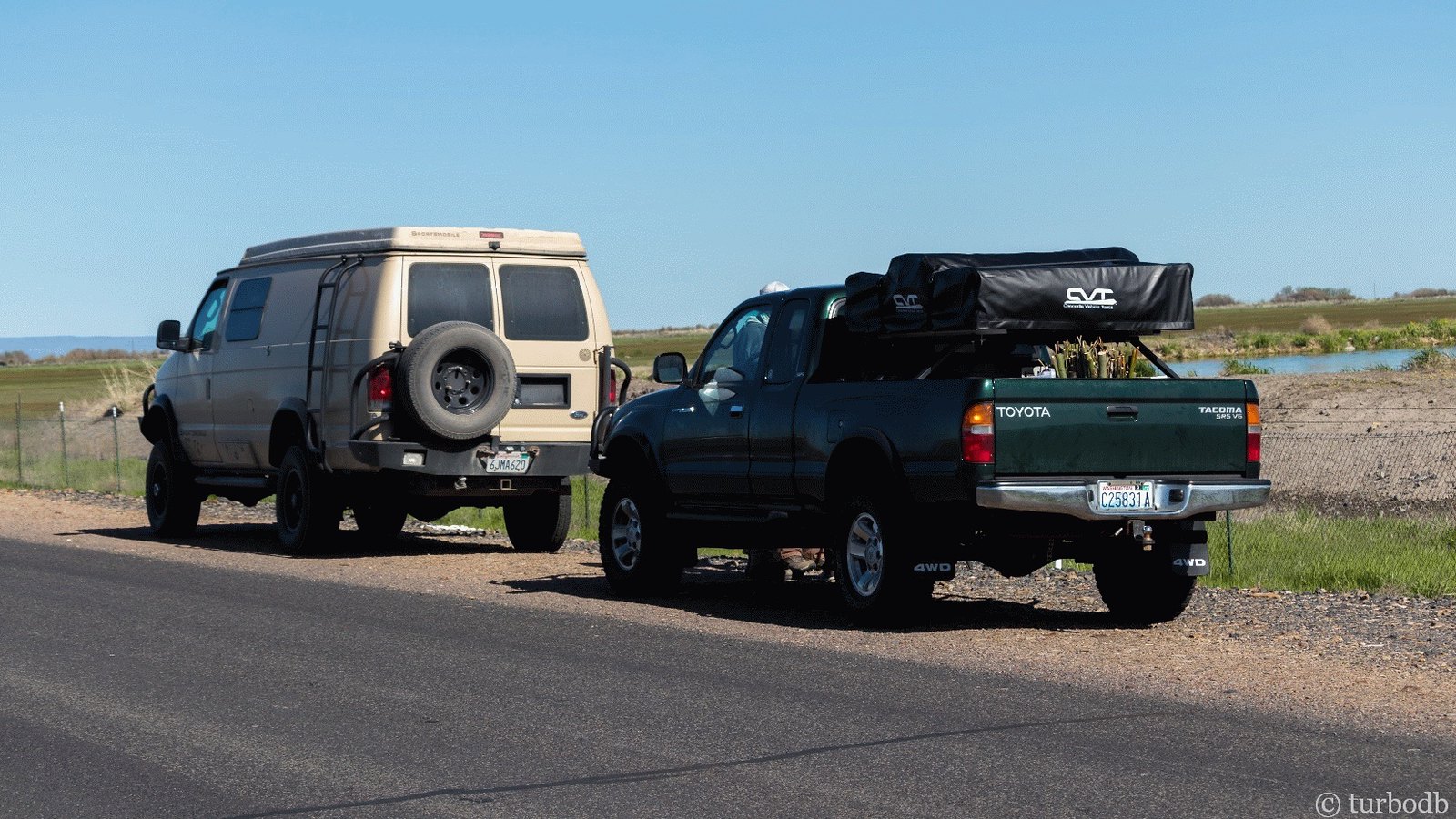
The shenanigans started as soon as we showed up.
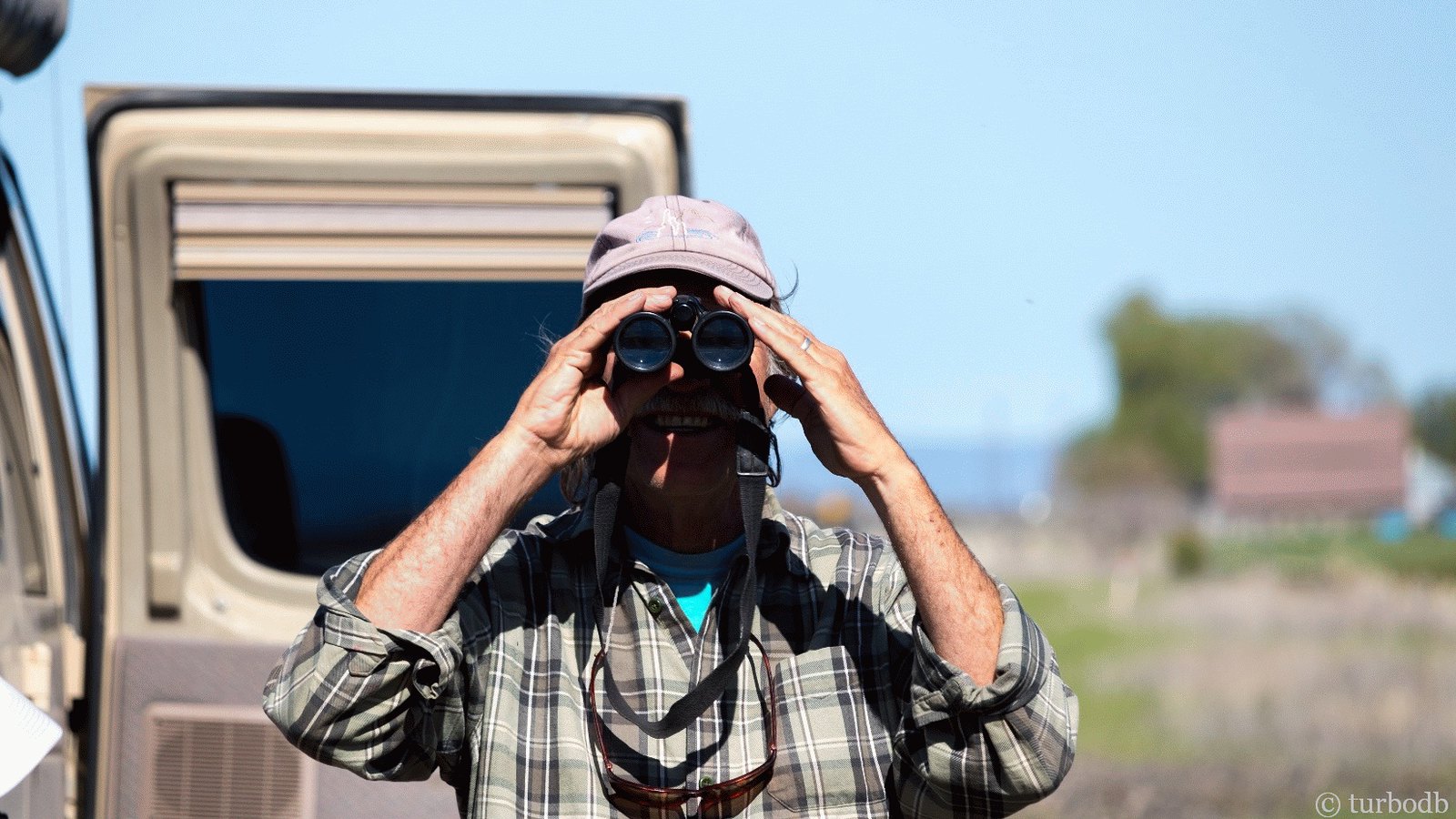

Being close to 3pm when we met up, the first order of business was to eat lunch. See, my Dad and Uncle go a little slower now that they aren't in any rush to get back to work - I mean, for them it's basically living "vacation to vacation" as I like to call it. So, it's breakfast at 10:00am, break camp around noon, and of course that means lunch around 3:00pm.
And lunch was good. Fresh sandwiches with all the fixings. All pulled out of the Sportsmobile fridge. We were jealous!
After lunch we did a bit of looking over of the truck - talked through a few of the mods since I'd last seen Pops, and then talked about our plan of attack for the rest of the day. Our ultimate destination was Crystal Crane hot springs, where we'd spend our only night with anyone in eyesight for the next week.
It was probably one night too many, but the hot springs were calling.
So we were off. My Dad and Uncle are both big birders, so we set out from Hines for something like 1000 ft. - at which point they pulled over. Next to a sewage treatment pond, where we stumbled upon a dead (bloated) skunk. Which we were sure was a skunk, even though it looked like a beaver.
Here, we birded; Hines still in the near background.
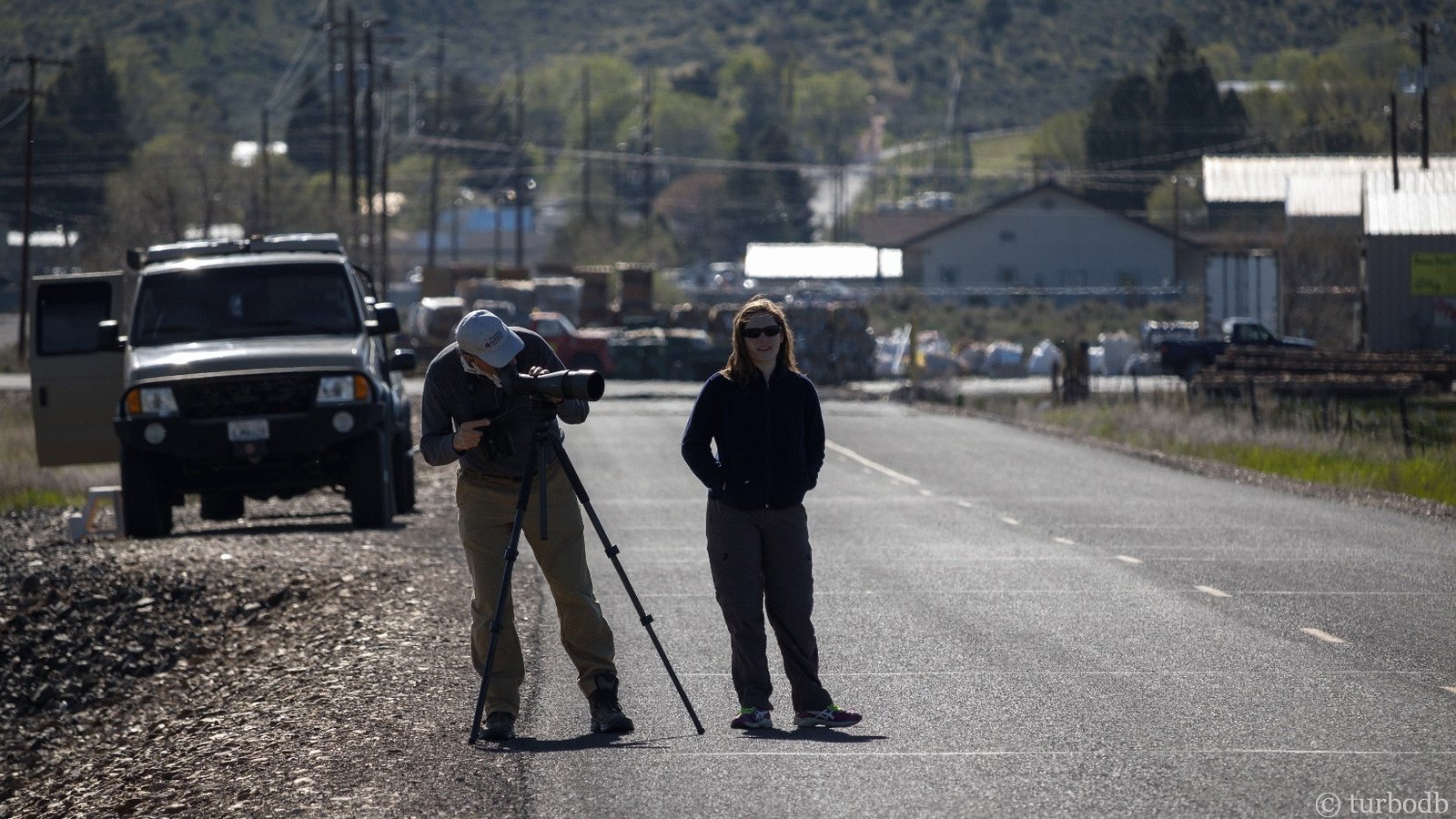
The way this works, apparently, is that you get in your vehicle and drive - for no more than a few hundred feet - before hopping out with all sorts of binoculars, scopes, and apps that track the plethora of bird species you're hoping to see.
And we saw lots. It was a way of experiencing nature that @mrs.turbodb and I aren't generally accustomed to, and I think we both generally enjoyed it. We definitely saw lots of birds we'd never seen before, and we got some amazing views through the scope and with my new Canon 80D - like this soldier looking red-winged blackbird.
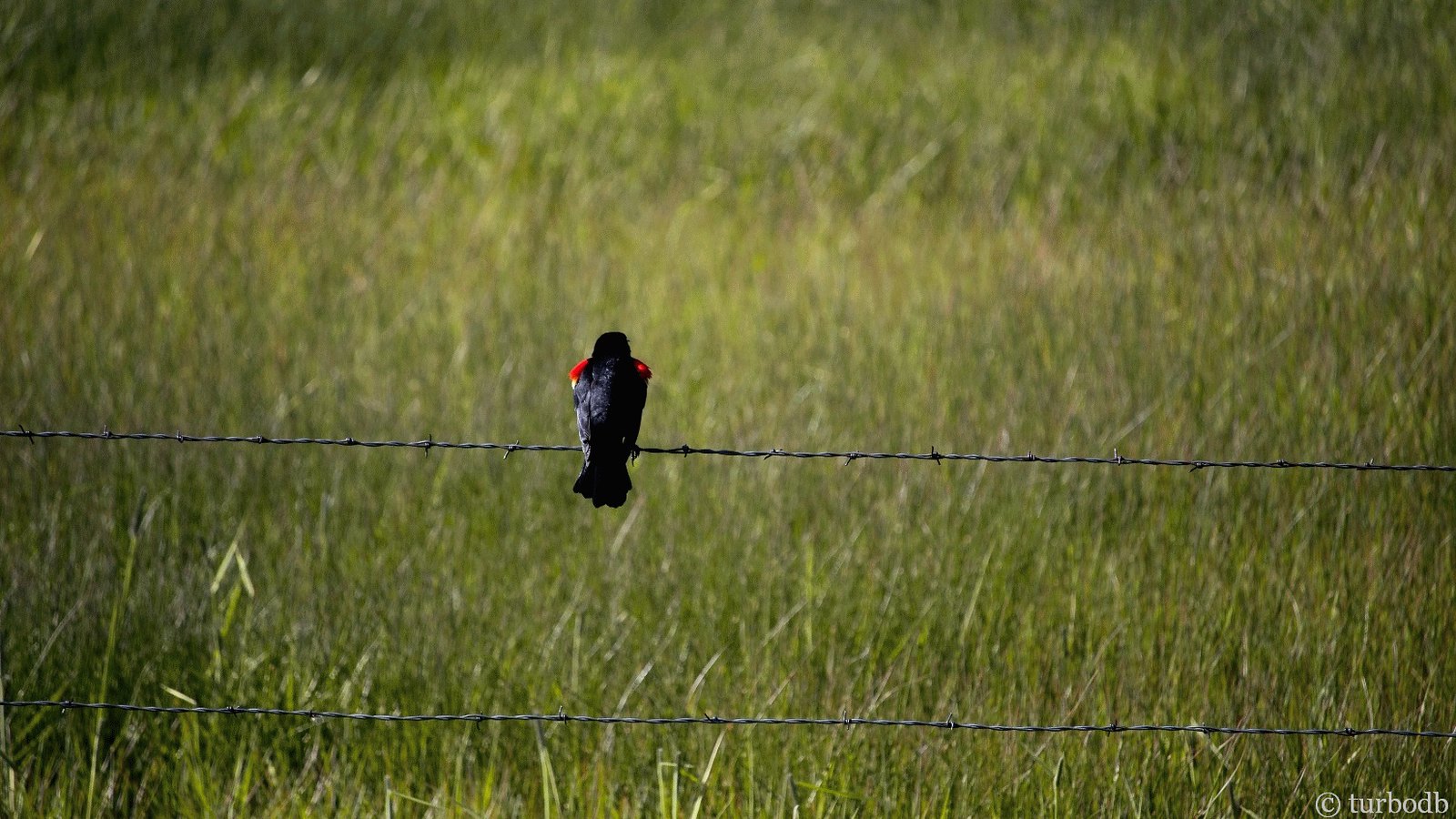
Eventually, by 5:00pm, we'd made it about a mile down the road. Maybe. I could tell that my Dad and Uncle felt rushed.
But, they were ready for some soaking in the hot springs, and having been up since 2:00am, we were ready for some sleep, so we high-tailed it out of the sewage treatment plant area, and the 40 or so miles to Crystal Crane hot springs, where we got a camp site, and proceeded to setup the CVT for actual sleeping for the very first time.
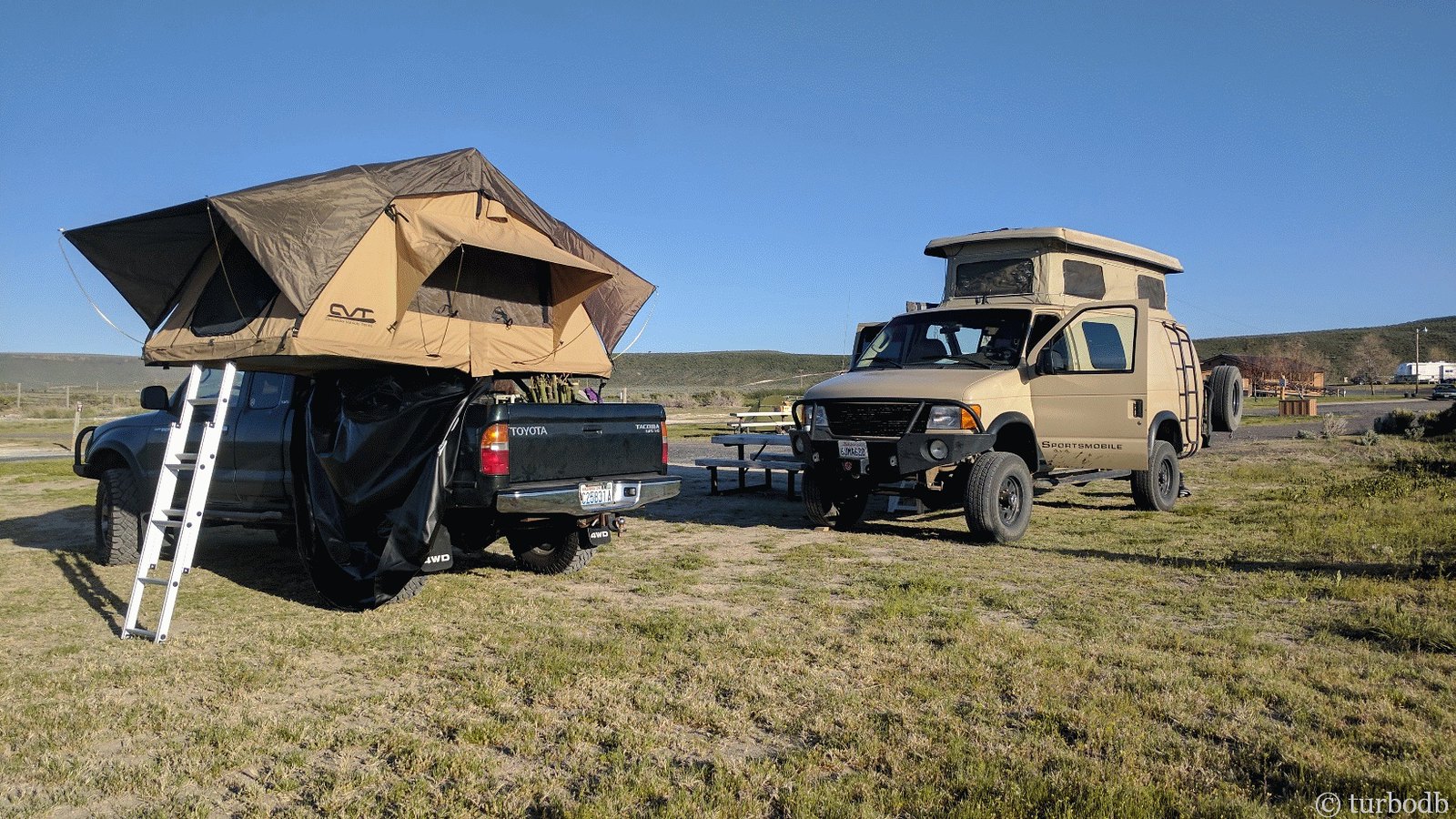
Happy with the setup, and ready for a soak, we headed to the well maintained hot spring where we soaked and chatted in the 104 - 107 degree water for about an hour, until the sun was setting and we were ready for dinner.
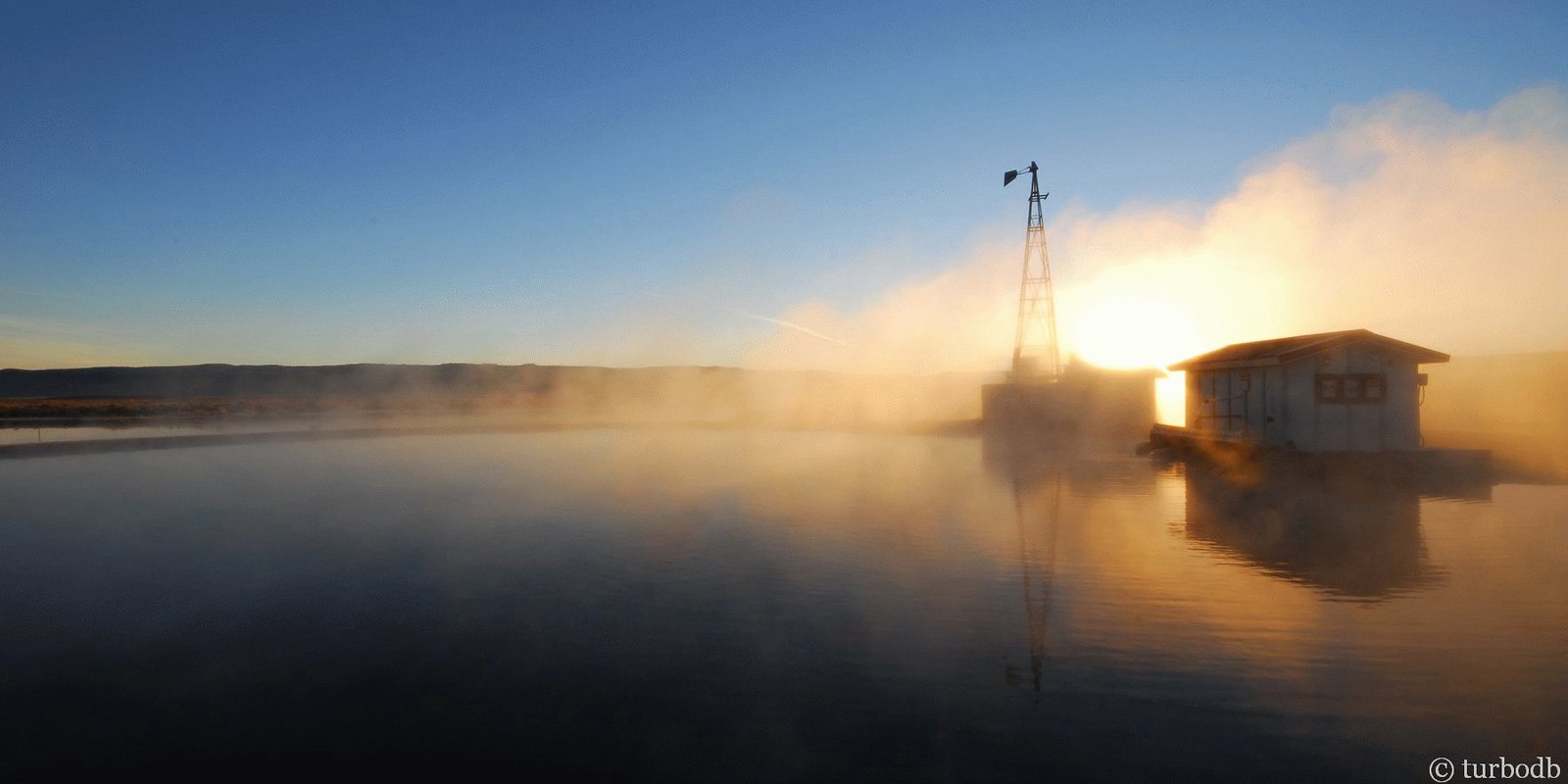
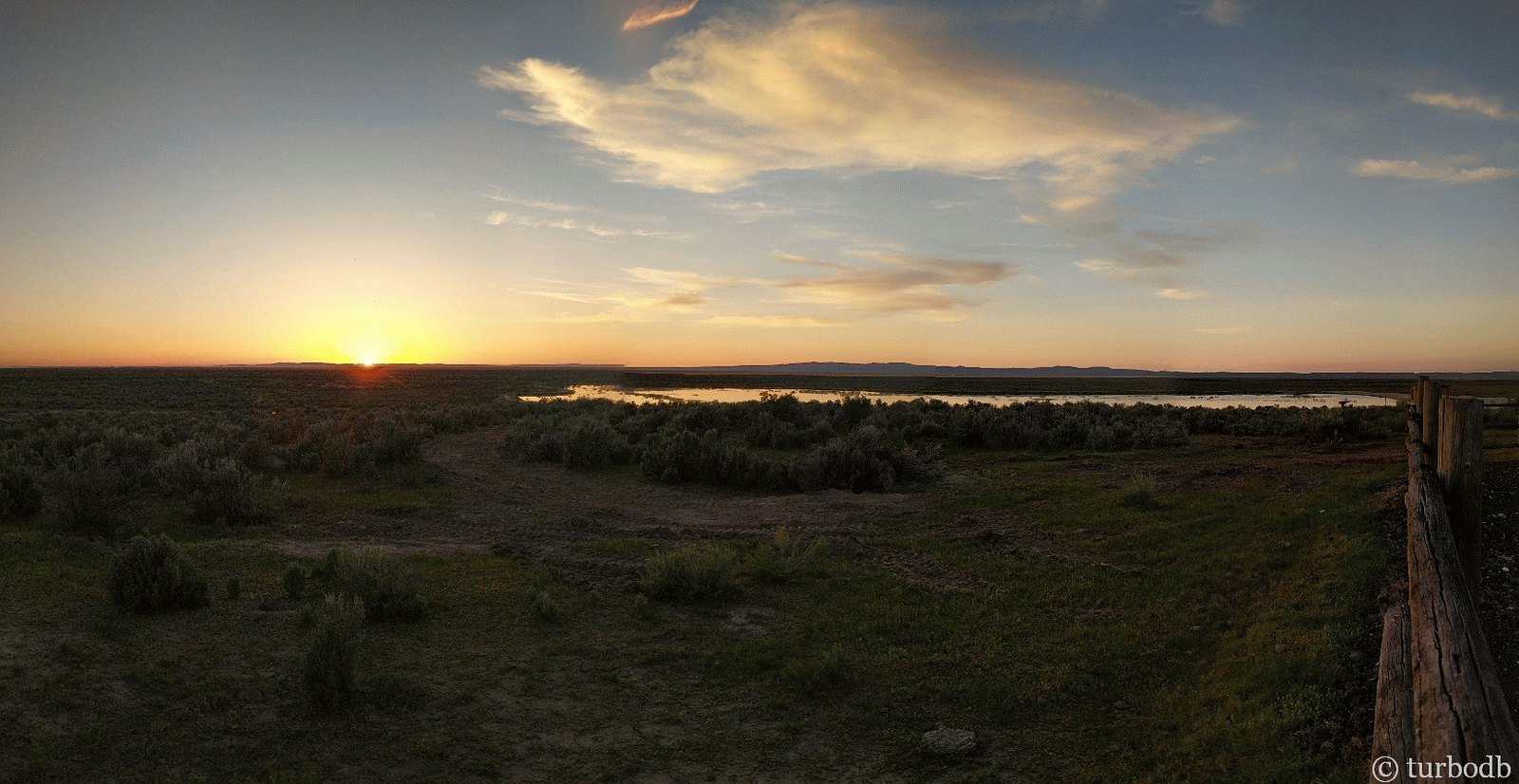
Dinner was simple on this first night. Knowing how tired we'd be, we'd stopped at Jimmy John's and picked up some sandwiches - we chowed them down and hit the sack after a bit more catching up - before our travelling companions even had time to make their own gourmet dinner.
Of course, there was time enough to snap a photo of the truck and CVT just before we headed in to try it out!
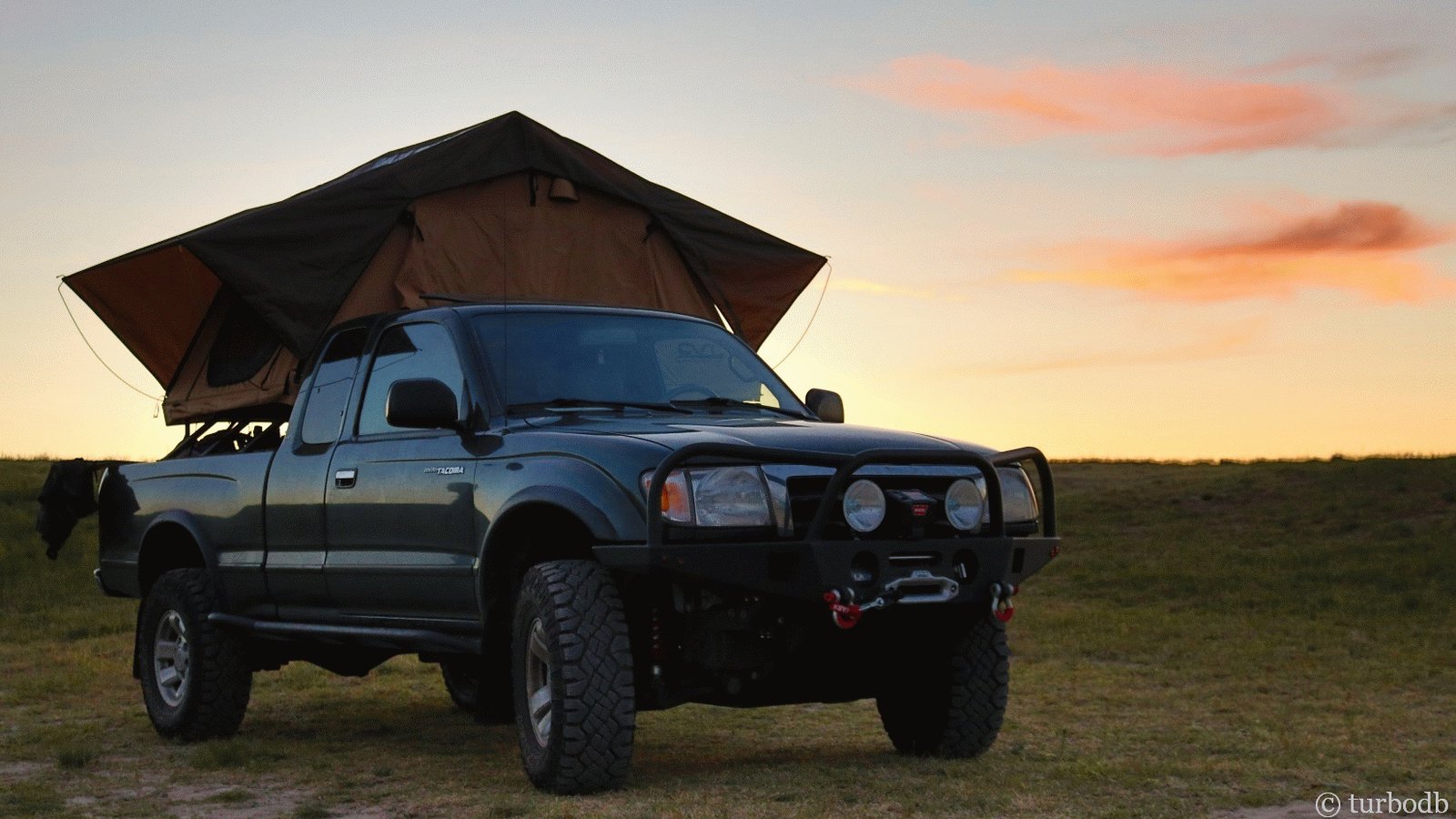
We awoke to a beautiful morning the next day. The CVT worked splendidly - the foam mattress was comfortable, and we stayed plenty warm in our sleeping bag (and extra comforter). The only issue we ran into was a bit of condensation between the mattress and floor of the tent - something we’re used to in any camping situation - so we’re likely to pick up an anti-condensation mat in the future.
We got up, took a walk around the “camp area” and of course, contemplated the birding situation. There were tons of more common birds around, so Pops wandered off for a while to find something a bit different. I don’t know if he did, and that’s fine with me.
Then, it was time for breakfast. Normally, it’s cereal for us when we head out camping - easy and tasty. But we knew the bar would be raised on this trip (what with the full kitchen in the Sportsmobile), so we’d planned eggs, chorizo, toast, and strawberries for our first three days. We fired up the stove and got to eating. We’d even brought butter for our toast.
The chorizo was a disaster. This stuff was like some sort of pulverized paste, and it never really formed a patty in the pan. We had the great idea to mix it with our scrambled eggs, and of course ruined our eggs as well.
My guess is that you’re actually supposed to mix it with some other type of ground meat, that provides structure and binding. In the end, we threw away the rest of what we’d bought.
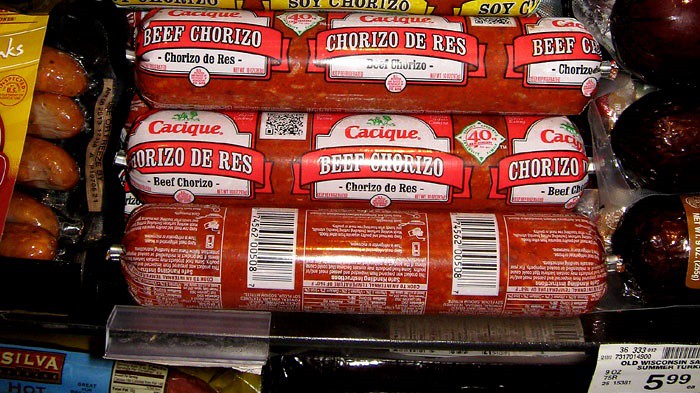
After breakfast, and coming up on noon, we packed up and headed out with two destinations in mind: Malheur National Wildlife Refuge Headquarters (for lunch and some birding) and a “remote hot spring” where we’d stay the night (hopefully with no other people). Our only stop was for gas, where after pumping my own fuel (in Oregon) the store joked "You're hired!"
Malheur was interesting because of the plethora of birds, and due to the stand-off that happened in 2016 (and we happened by on the day they re-opened). From Wikipedia:
[INDENT][SIZE=3]Malheur National Wildlife Refuge is a National Wildlife Refuge located roughly 30 miles (48 km) south of the city of Burns in Oregon's Harney Basin. Administered by the United States Fish and Wildlife Service, the refuge area is roughly T-shaped with the southernmost base at Frenchglen, the northeast section at Malheur Lake and the northwest section at Harney Lake.
The refuge was created in 1908 by order of President Theodore Roosevelt to protect habitat for diverse waterfowl and migratory birds, and grew to encompass 187,757 acres (760 km2; 293 sq mi) of public lands. A popular site for birding, fishing, hunting and hiking, the refuge gained widespread attention in early 2016 after its headquarters complex was occupied by armed anti-government protesters.
…
From January 2 to February 11, 2016, the refuge's headquarters was seized by armed protesters related to the 2014 Bundy standoff. For most of the occupation, law enforcement allowed the occupiers to come and go at will. At the conclusion, most of the leaders were arrested, and one was killed while traveling away from the refuge when the group he was leading attempting to evade a police road block. The remaining occupiers either departed or surrendered peacefully.[/SIZE][/INDENT]
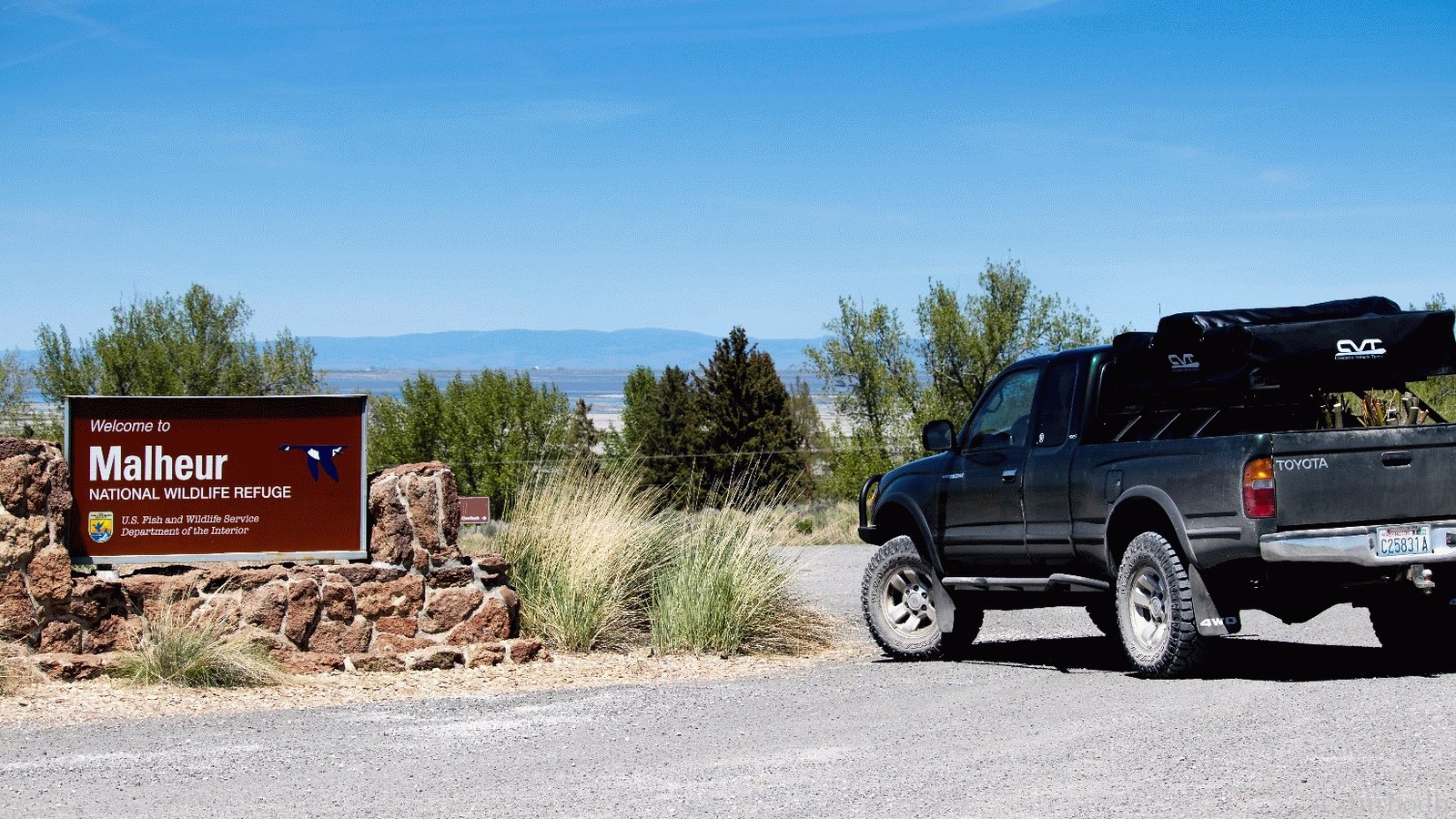
On our way to Malheur Headquarters, where my Dad and Uncle were planning to do a bunch of birding, we stopped several times… to do some birding. As if there was some risk of not getting enough.
We naturally humored them over the radio with all the birds we were looking at. They included a Flyus Byus, a Flewus Pastus, and of course the extremely rare Flapus Aroundus. Other small wildlife was around as well.
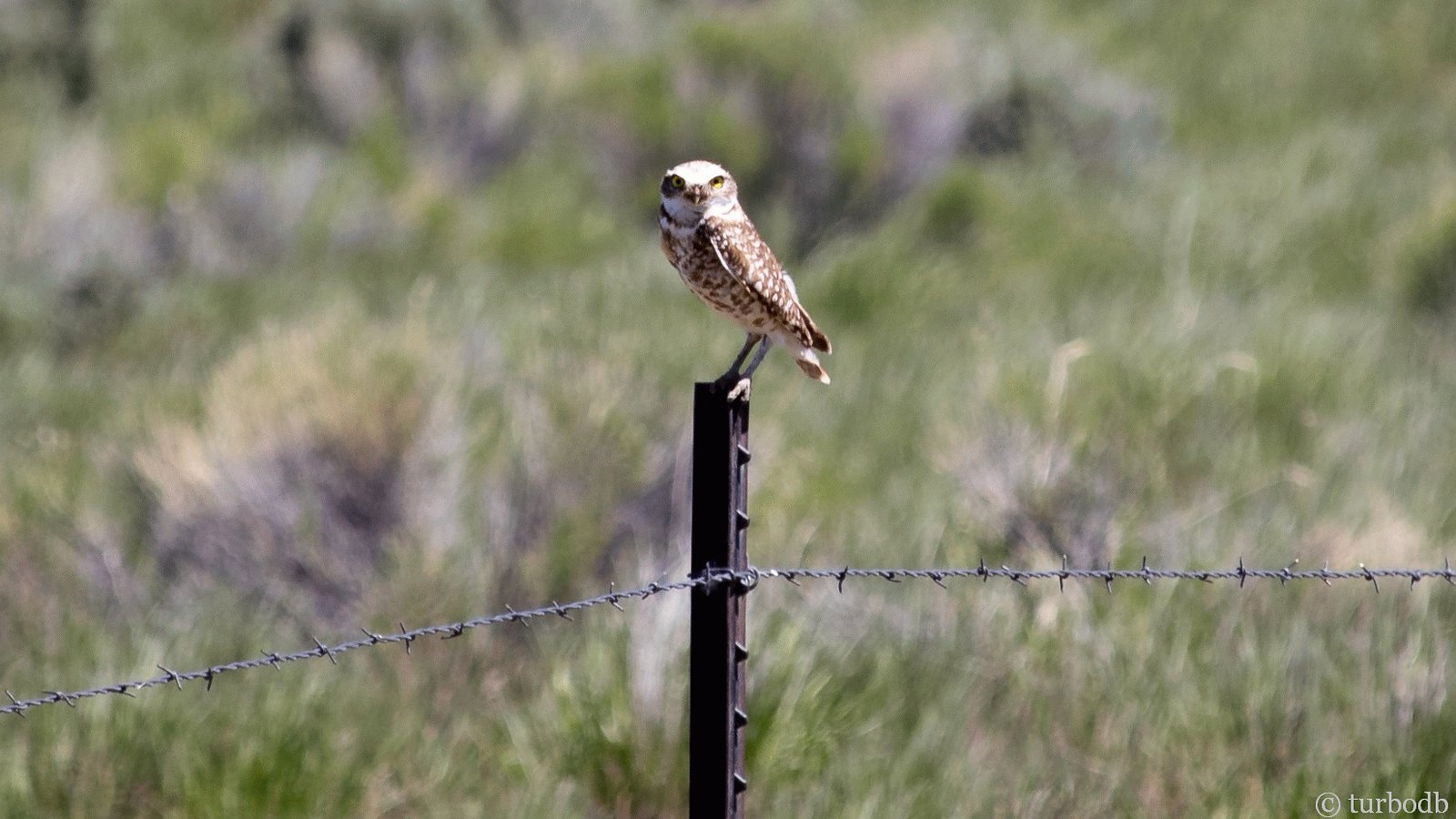
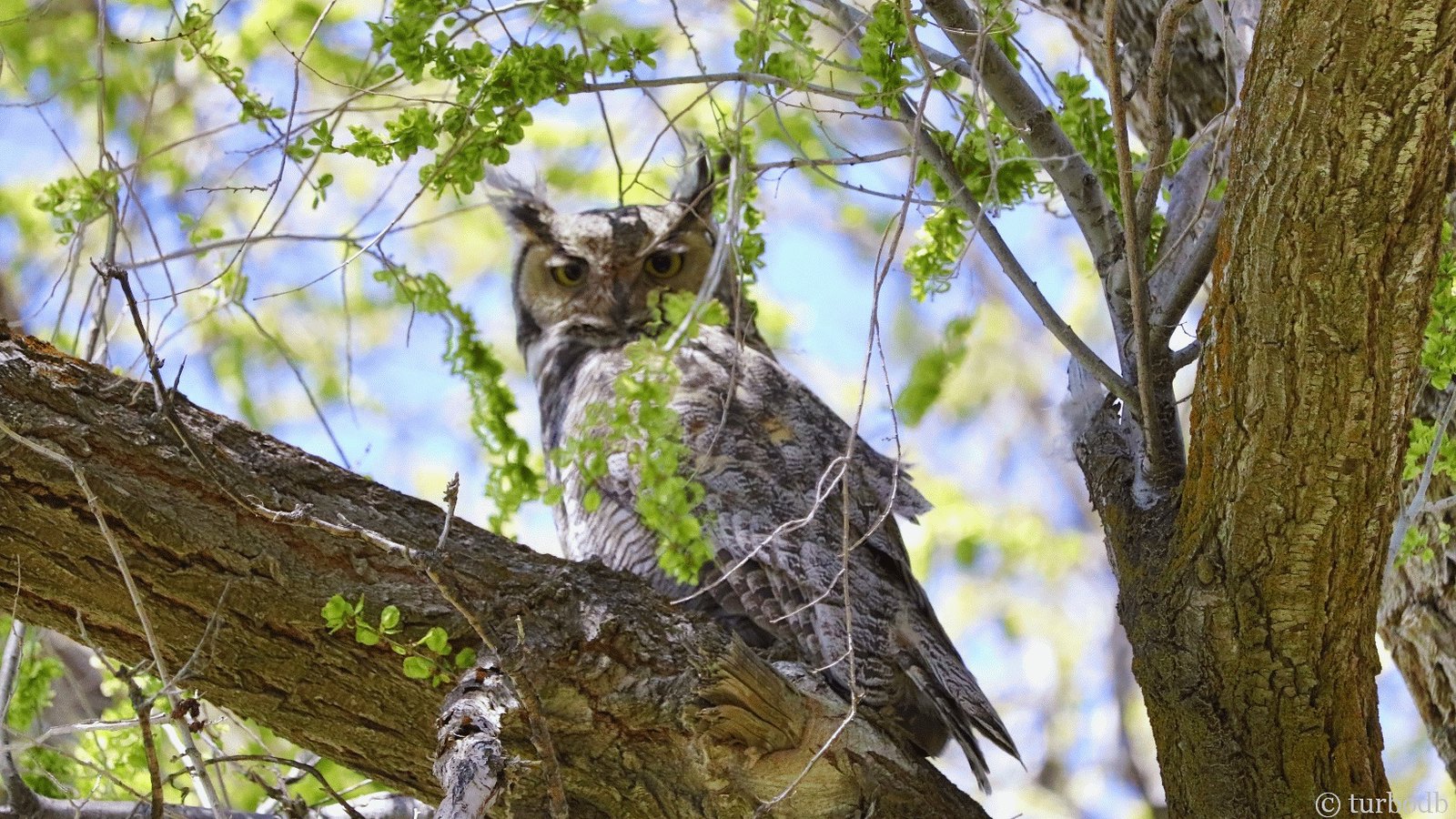
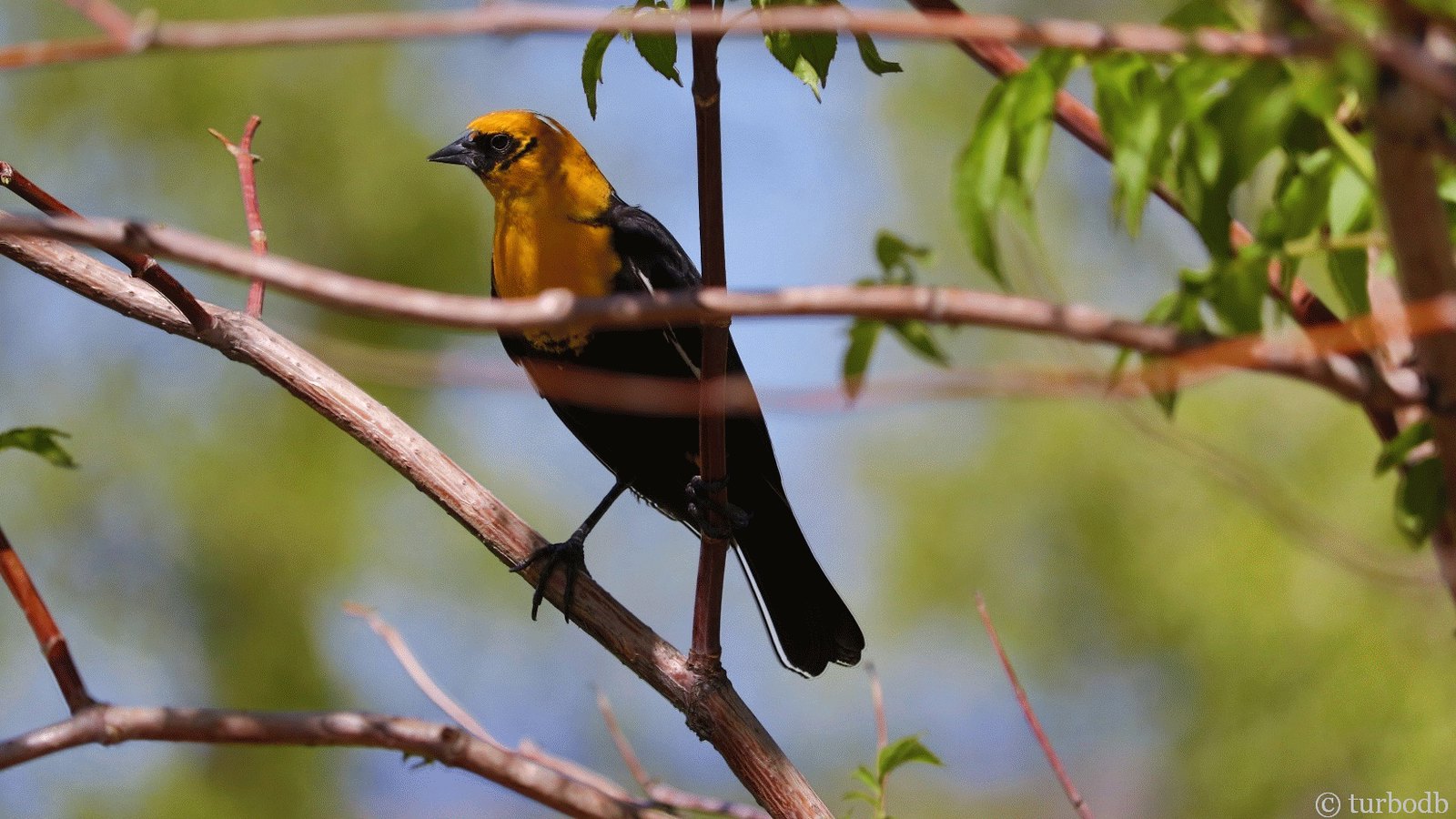
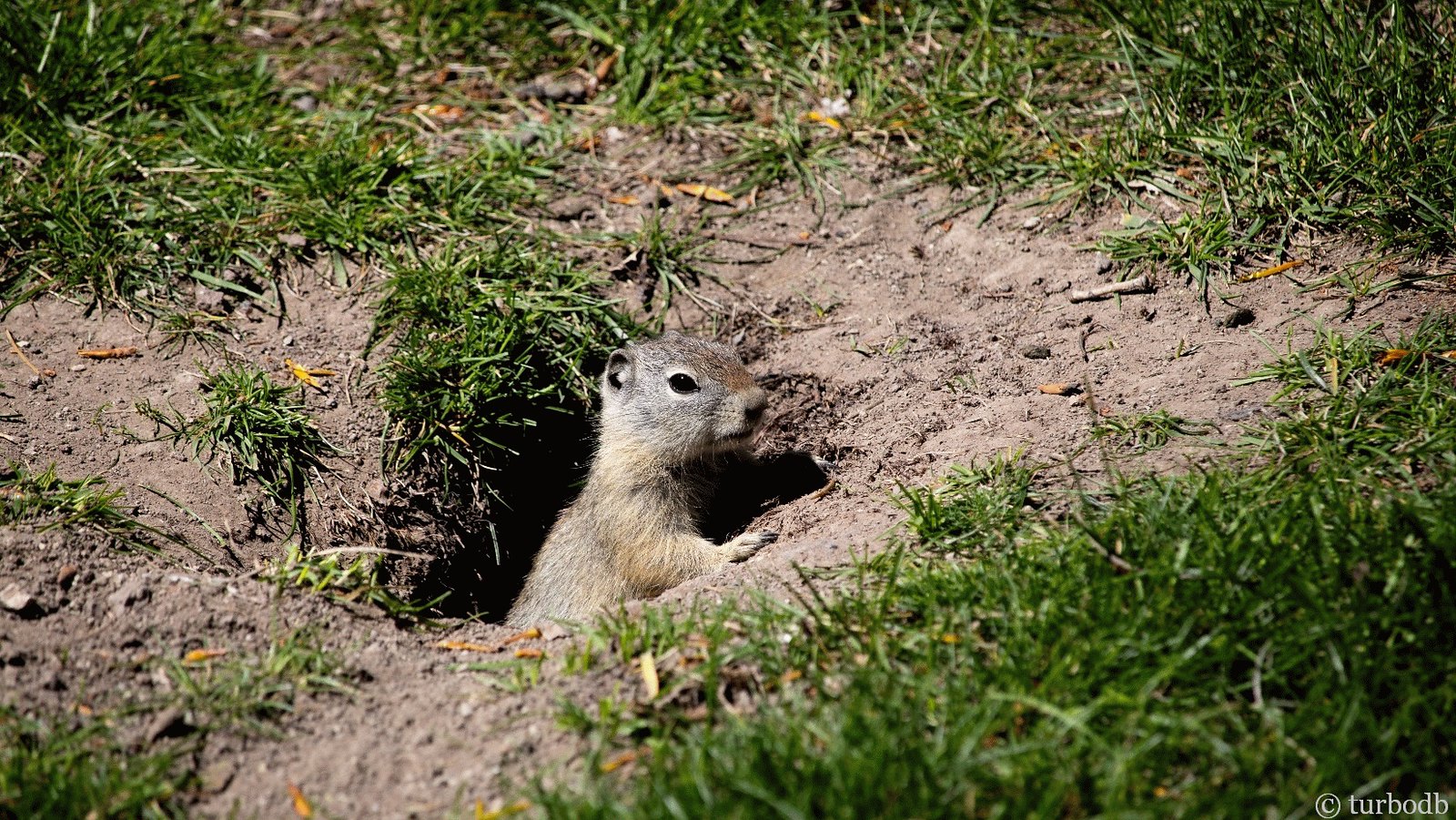
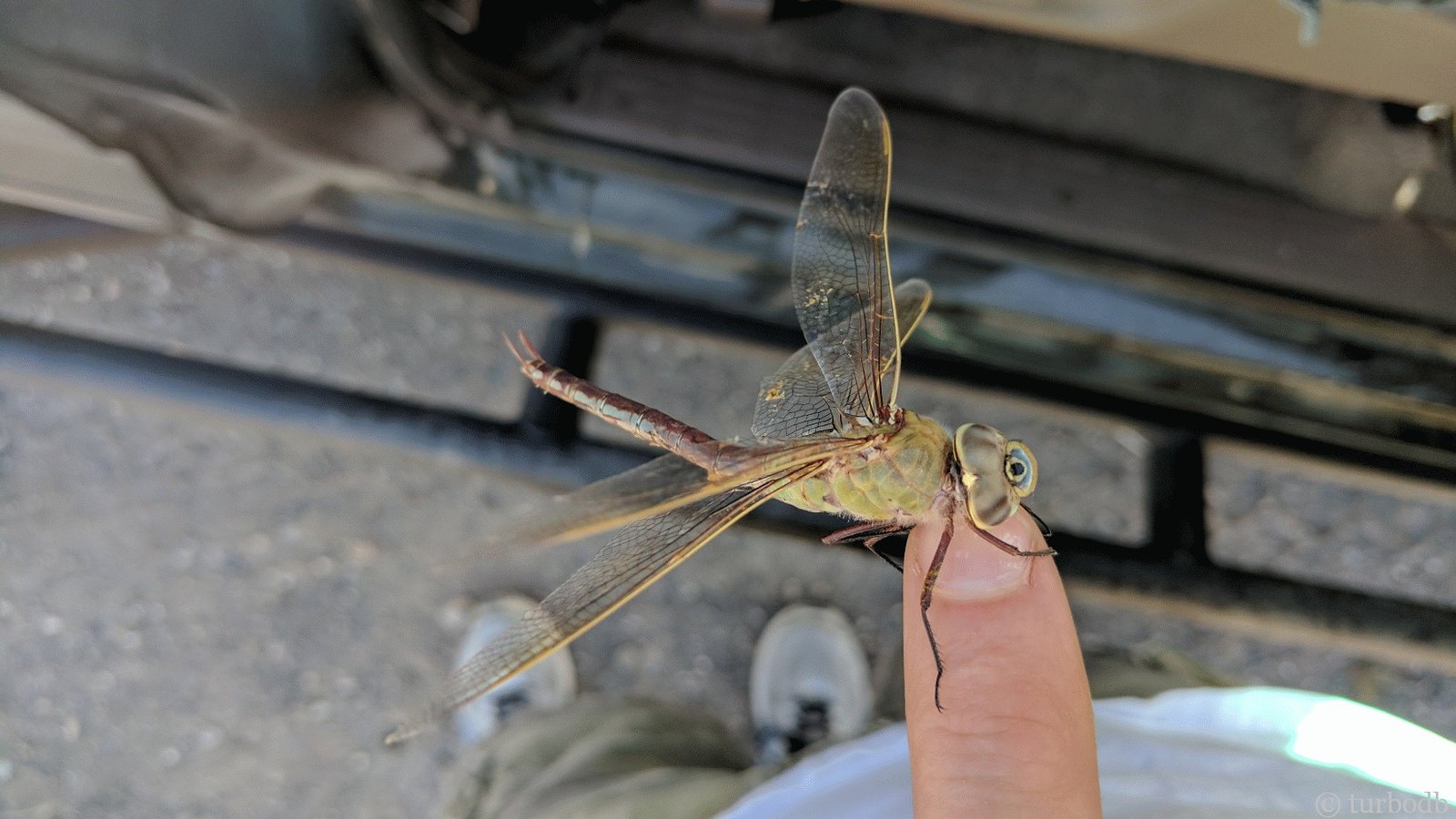
Mere hours later, we wrapped up lunch and headed out to find the hot springs - which led us onto our first real backroads of the trip.
Conveniently for the birders, it also took us by a large Golden Eagle nest. But what caught my eye on that stop was an old rusty truck, with the most amazing leaf springs you’ve ever seen.
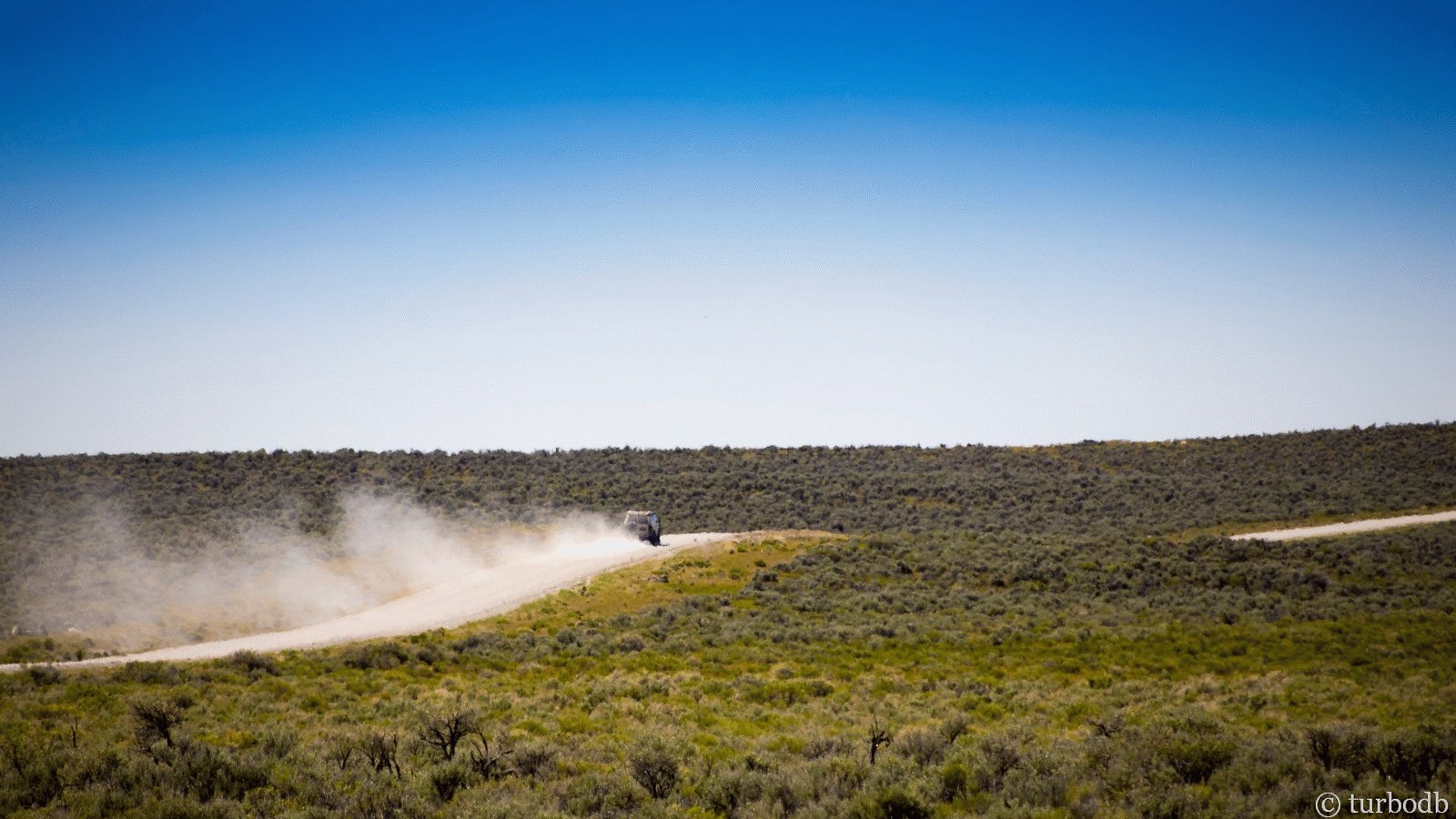
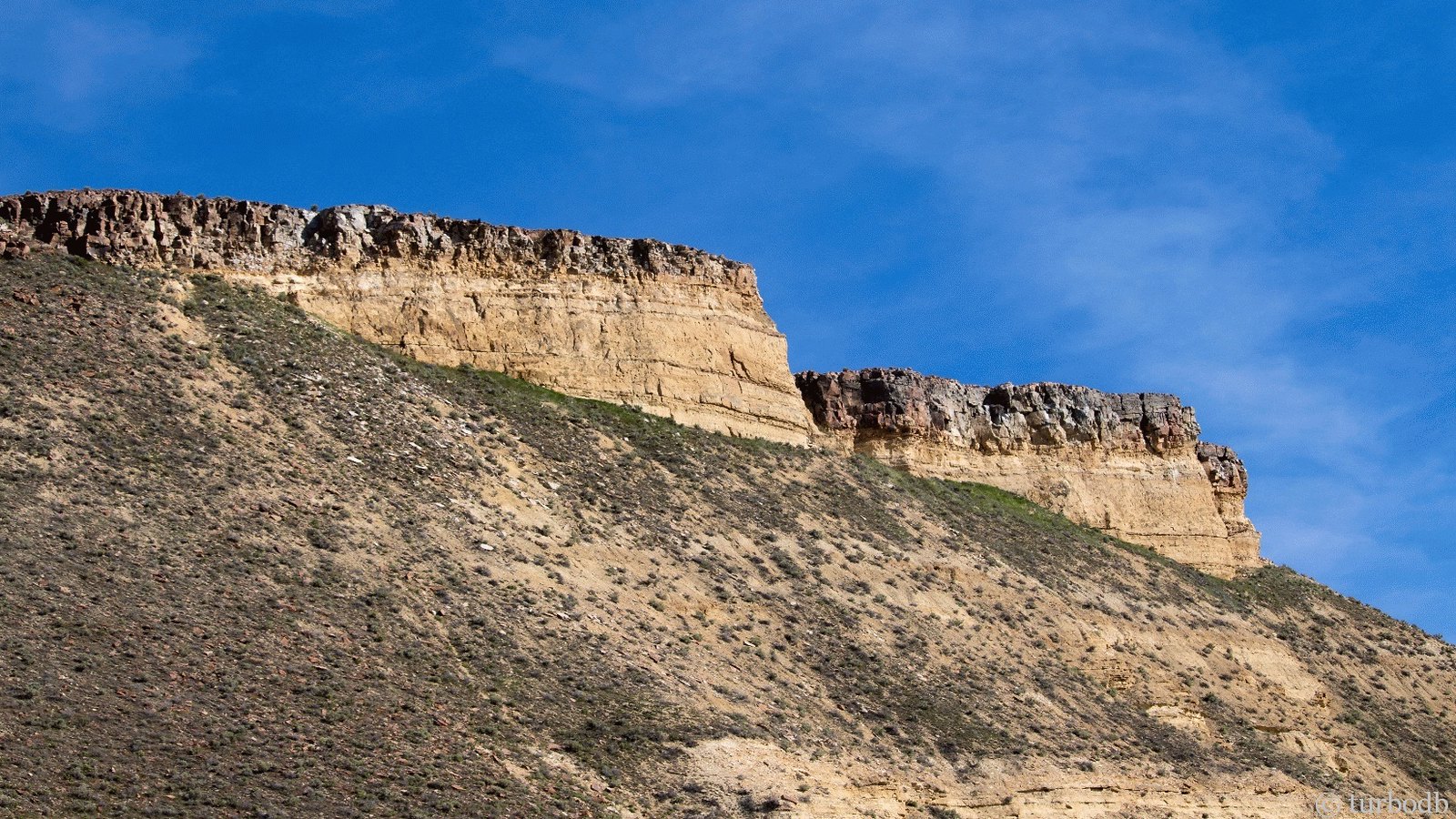
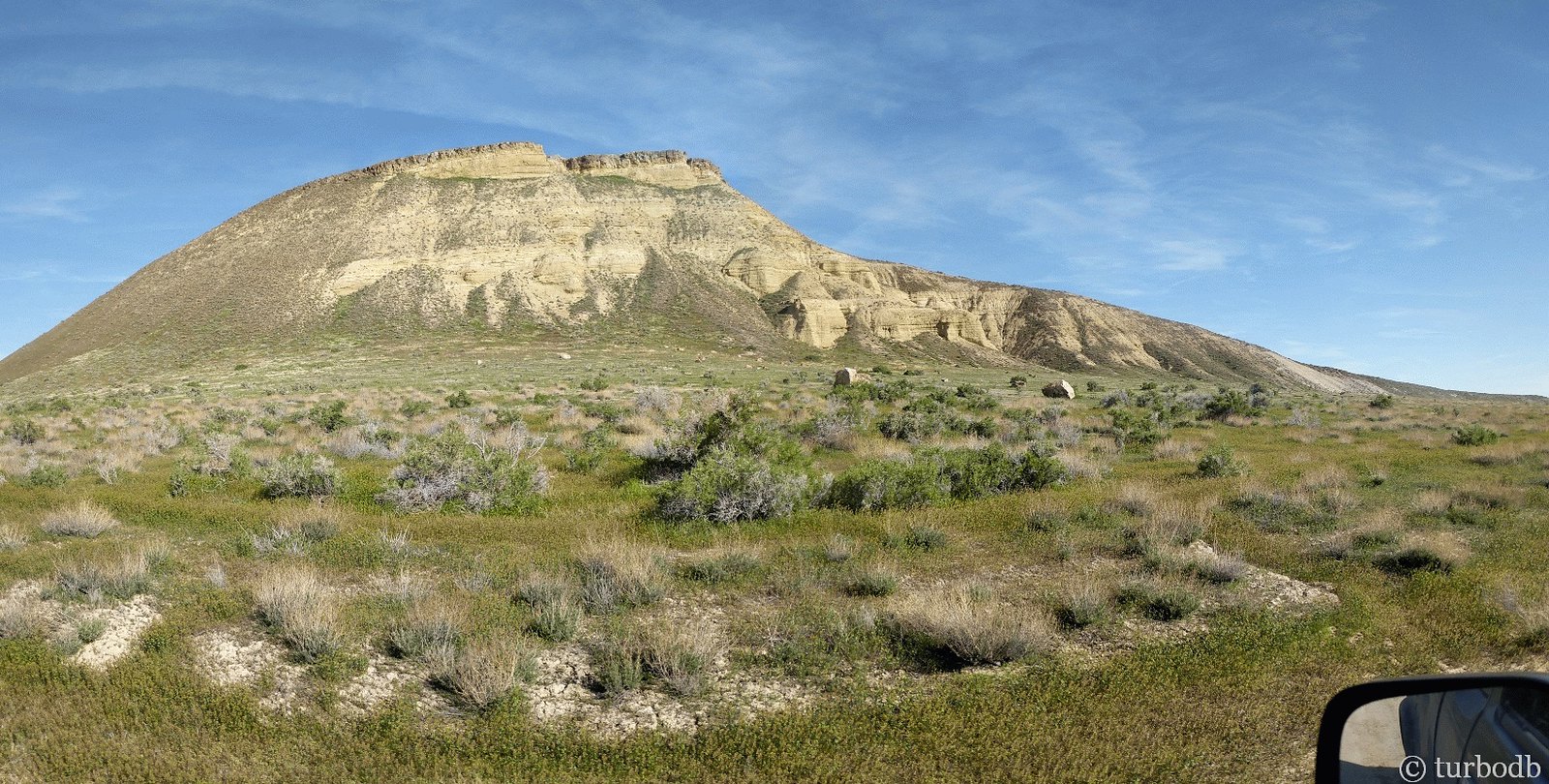
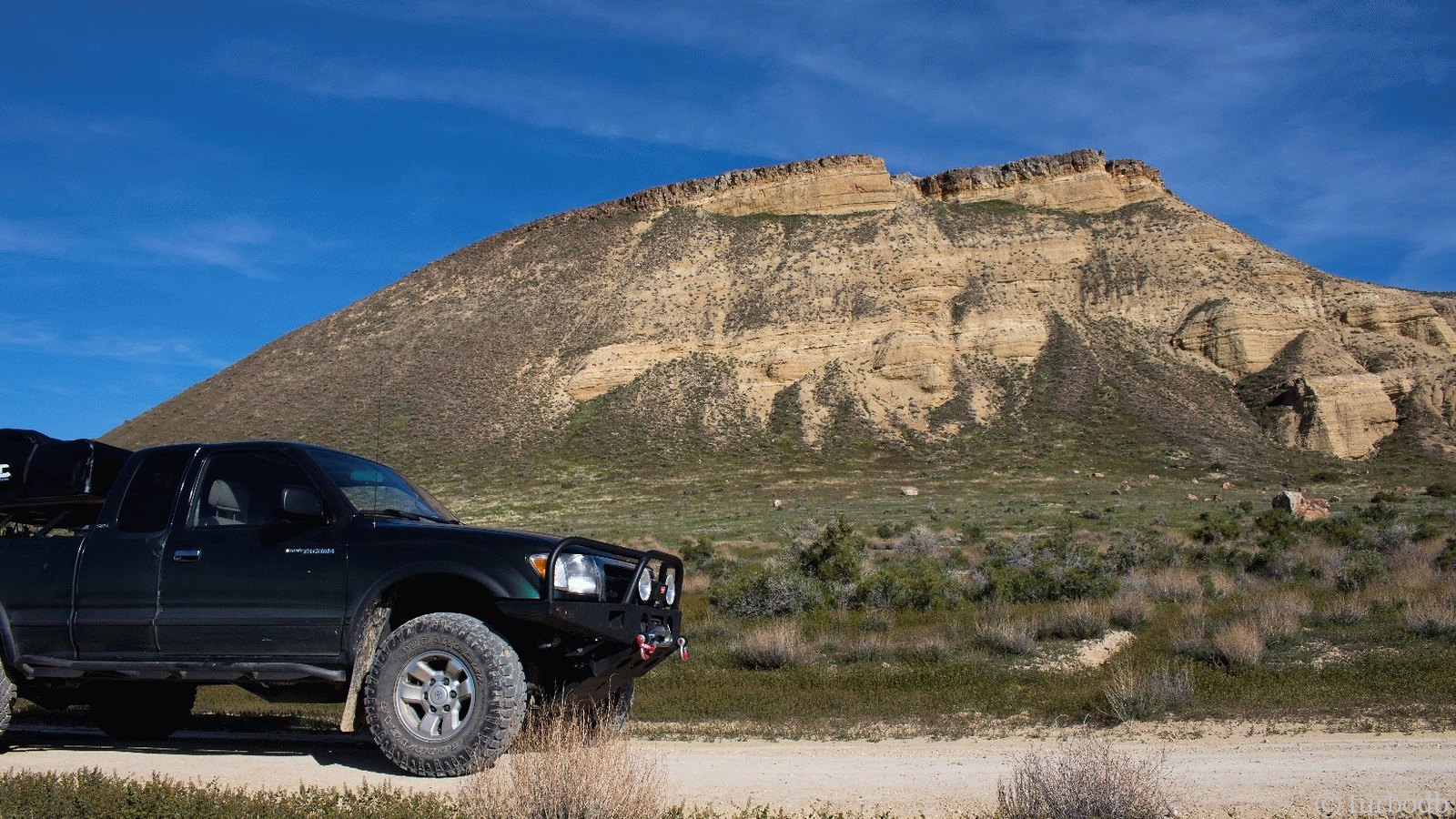
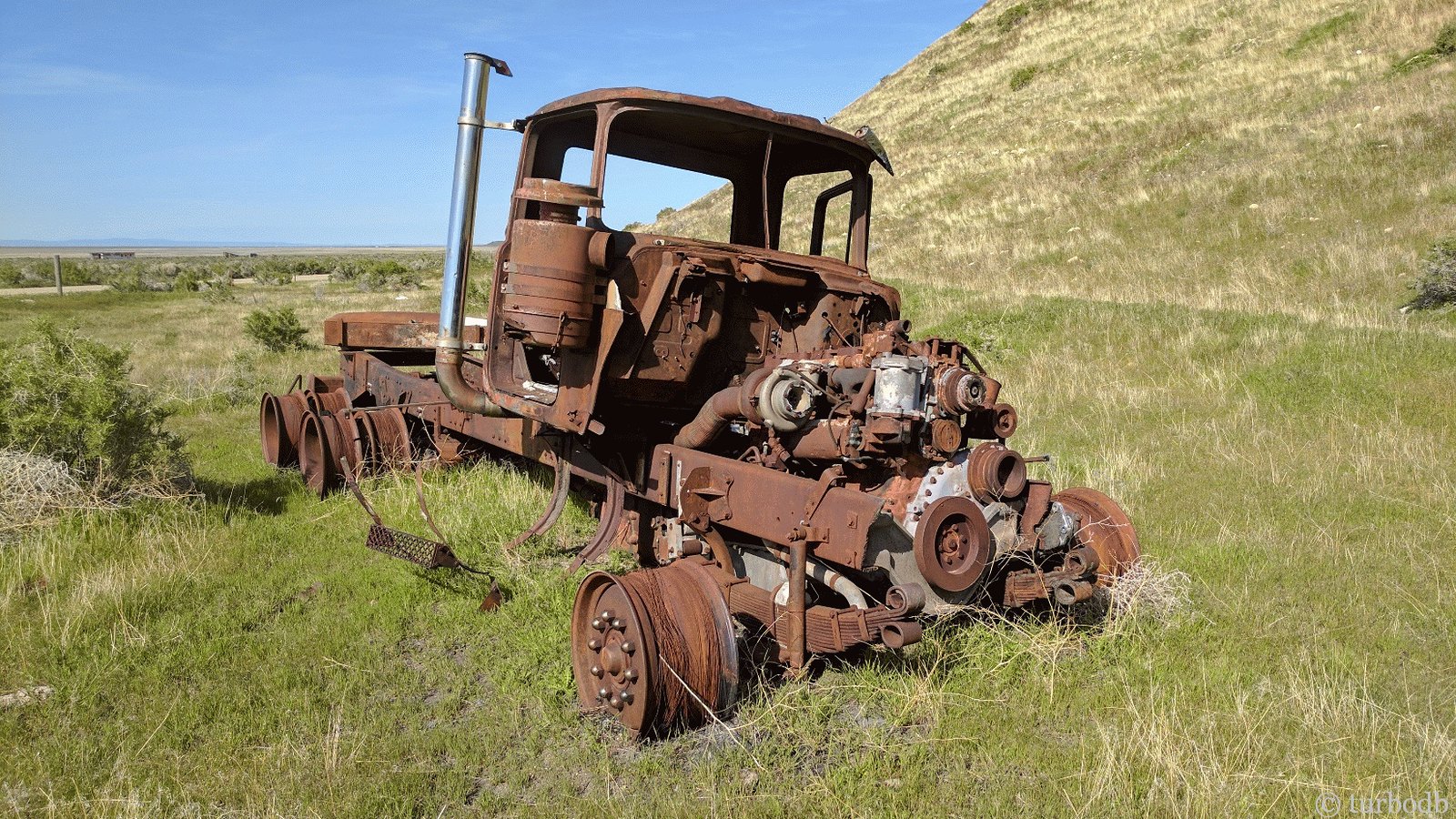
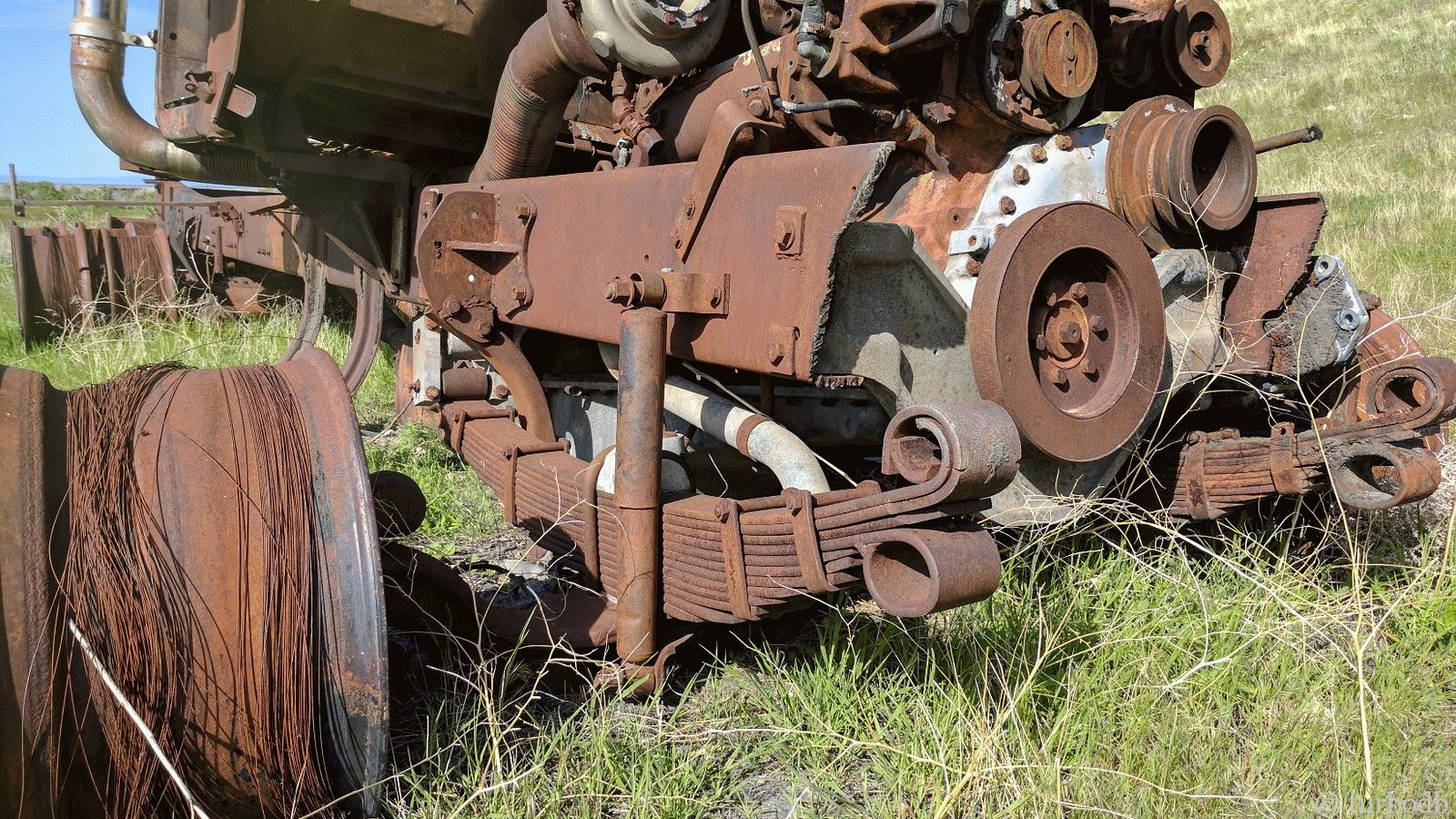
After checking out the truck and the Golden Eagle nest for a bit, we headed off again in search of our camp site for the evening, driving on and passing by what appeared at the time to be amazing amounts of salt from the years of evaporation in the desert landscape.
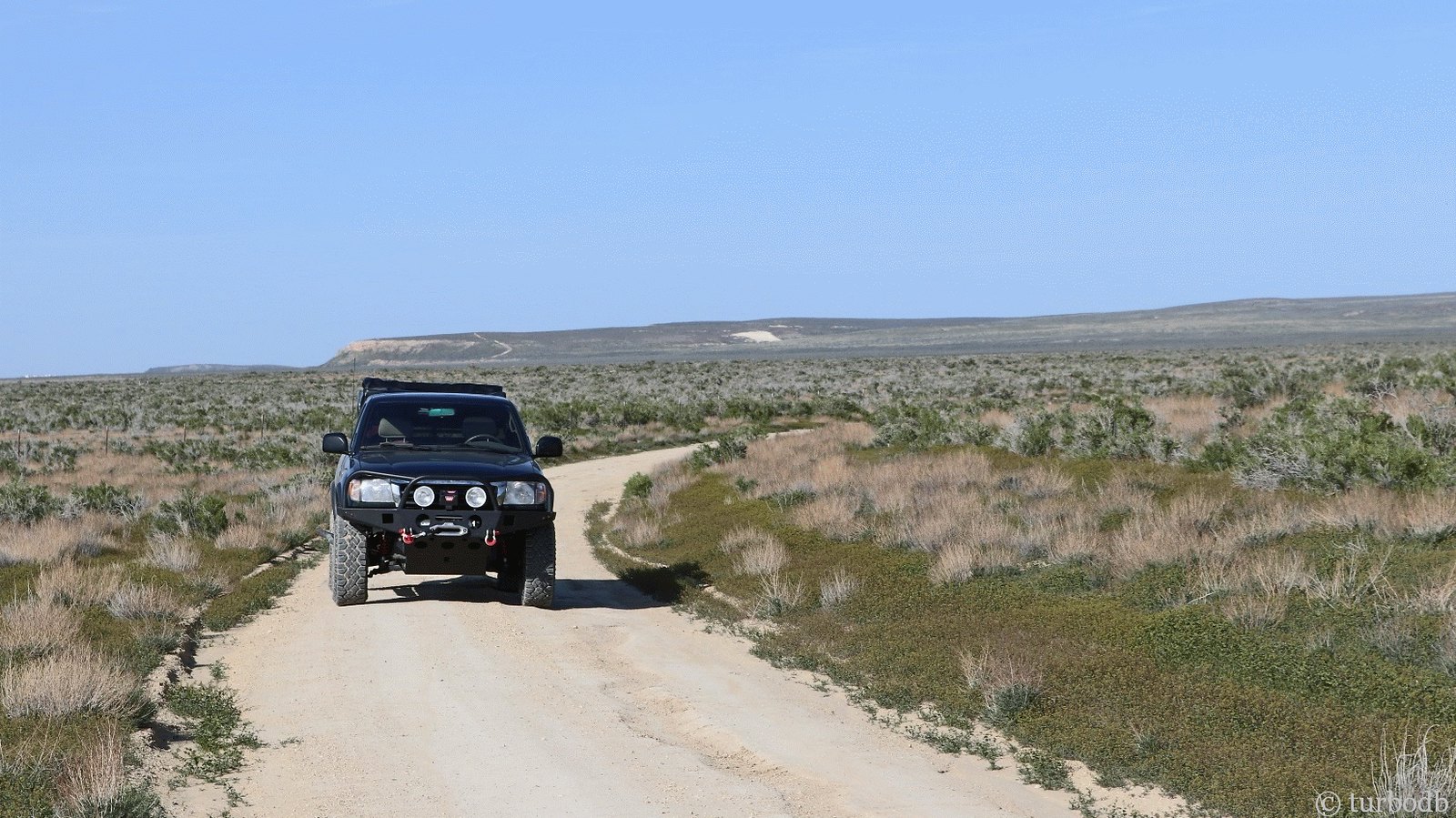

We reached the hot spring and camp around 5pm - and spent the next hour or so looking for a good place to take a soak. Unfortunately, the pools previously excavated by soakers had long since filled in with mud and been abandoned, so while my Uncle tried to shore a promising one up, @mrs.turbodb and I hiked up a hill just to the east that overlooked our campsite and Harney Lake. By the time we got to the top, it was clear that Pops and my Uncle were back to relaxing in the shade, and looking for - you guessed it - more birds (or something) with their binos.
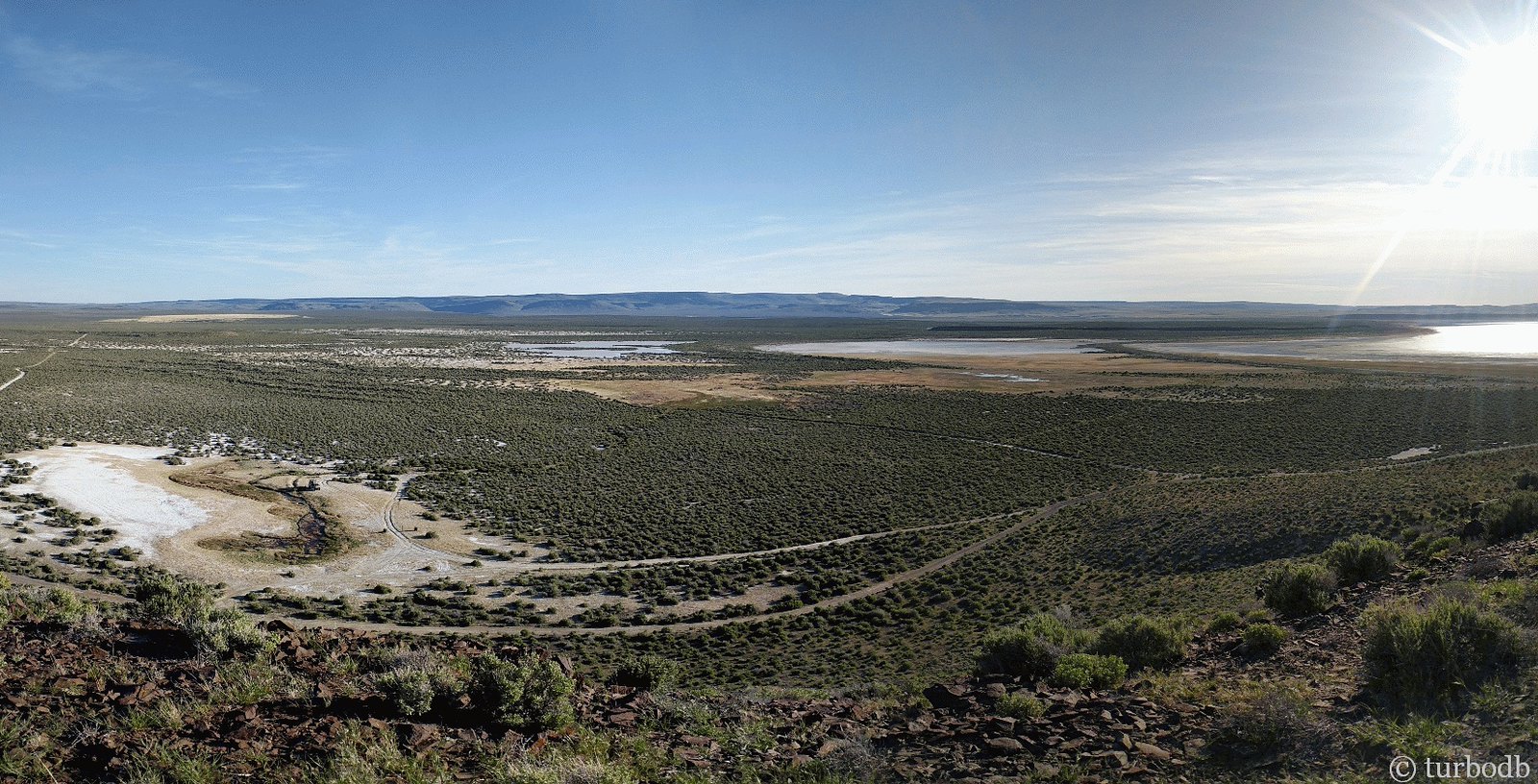
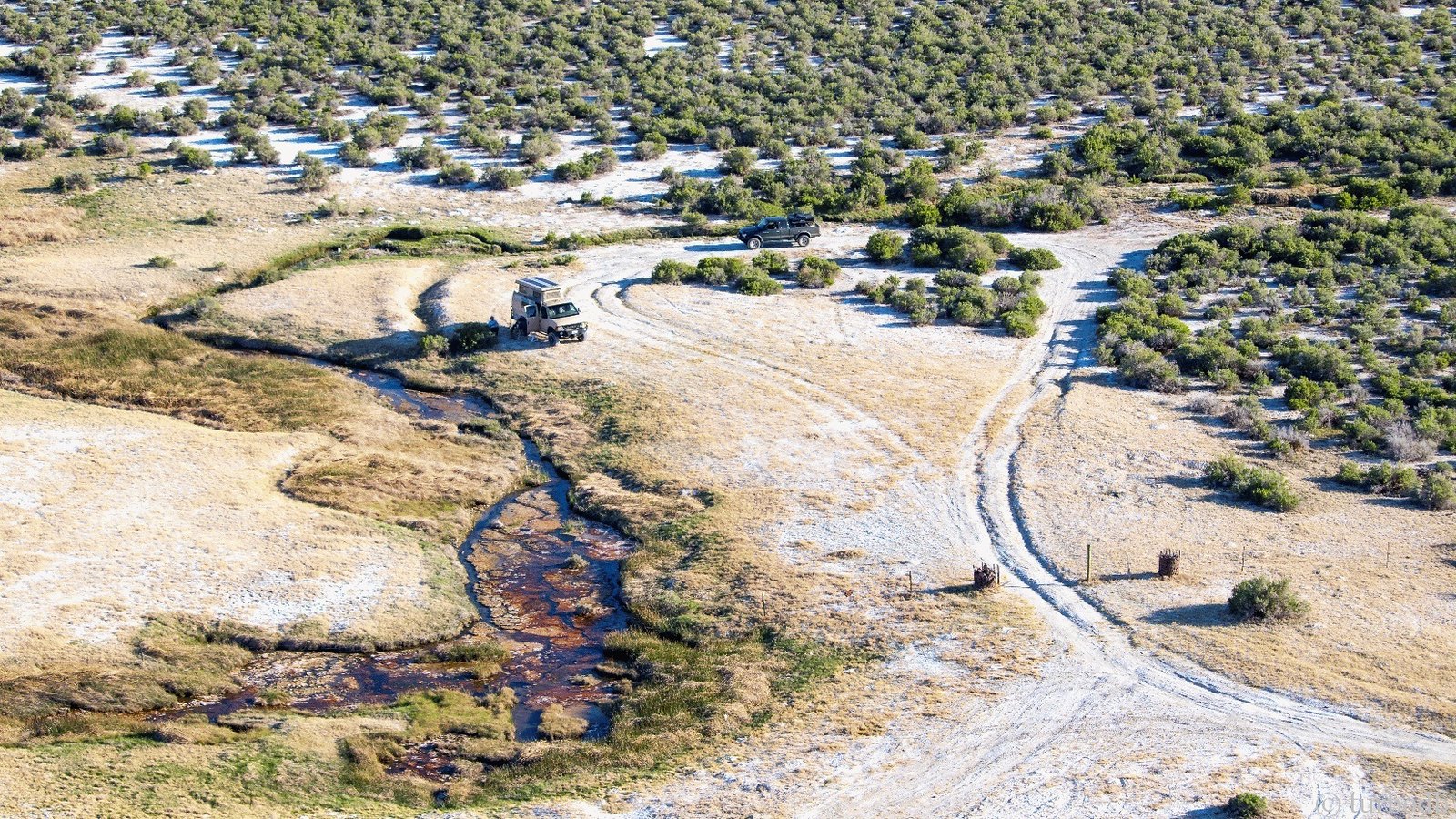
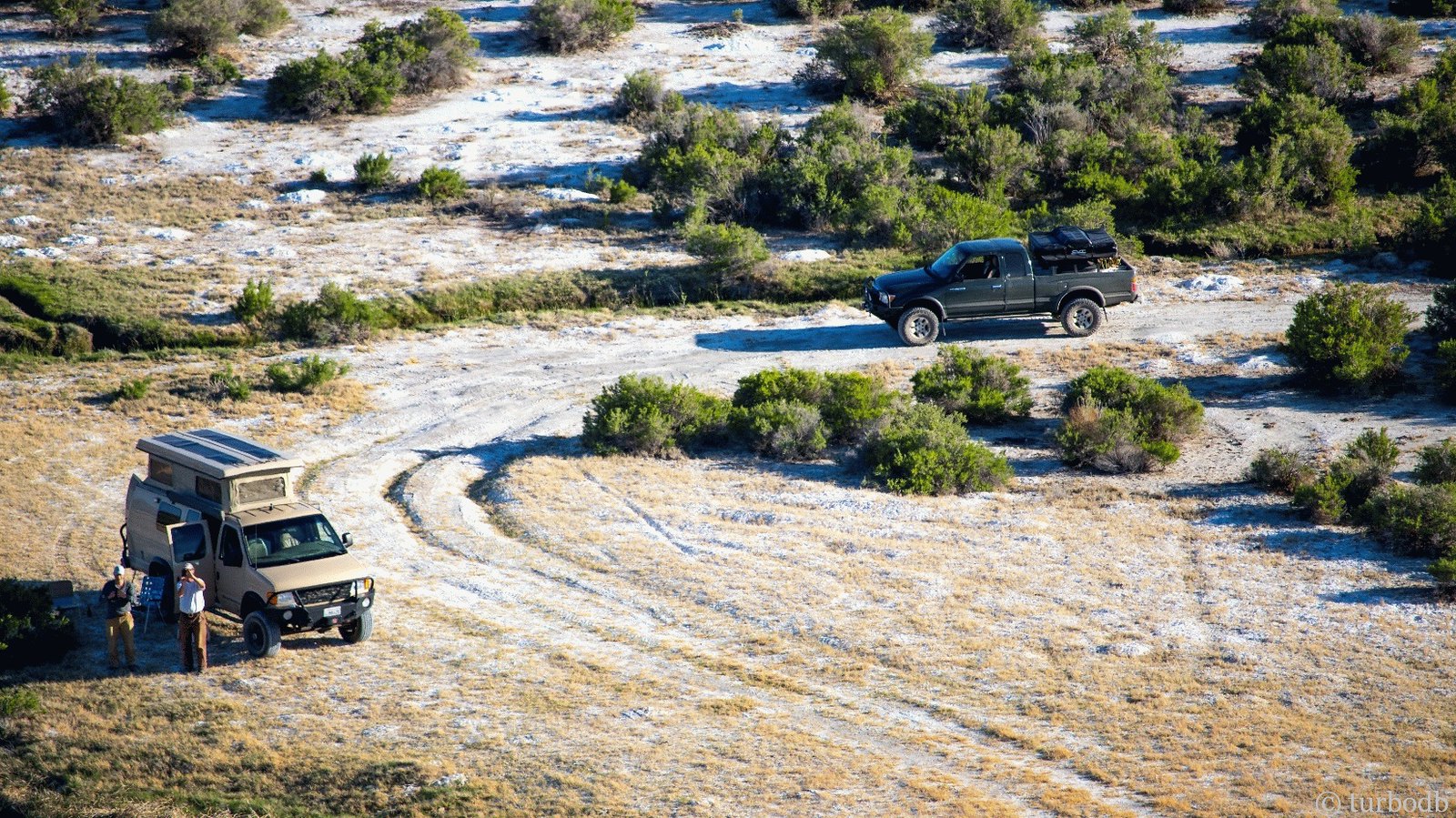
We made our way back down as Pops prepped dinner (for us!) He’d pre-prepared one of our favorites - chicken marsala - and by the time we’d returned and relaxed with our books for a few minutes, the sun was setting, and he’d gotten everything ready to go.
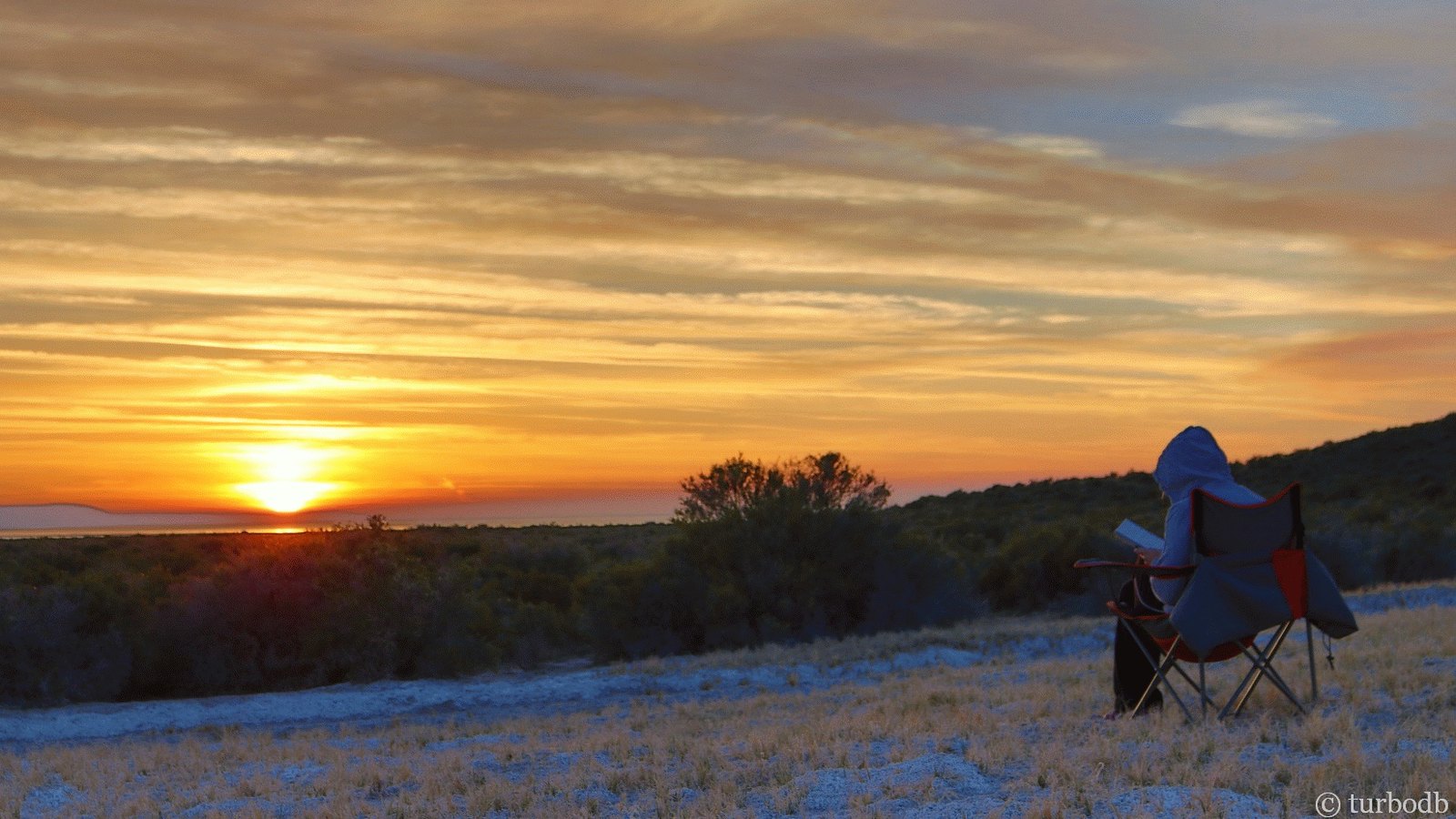
Naturally, it was terrible - so I volunteered to eat everything so no one else had to suffer.
Unfortunately for me, everyone decided to suffer. As we ate dinner, we watched the sun set and talked about the highlights of the day and the plan for the next one. And of course, it being day two of the CVT, I took a few pictures.
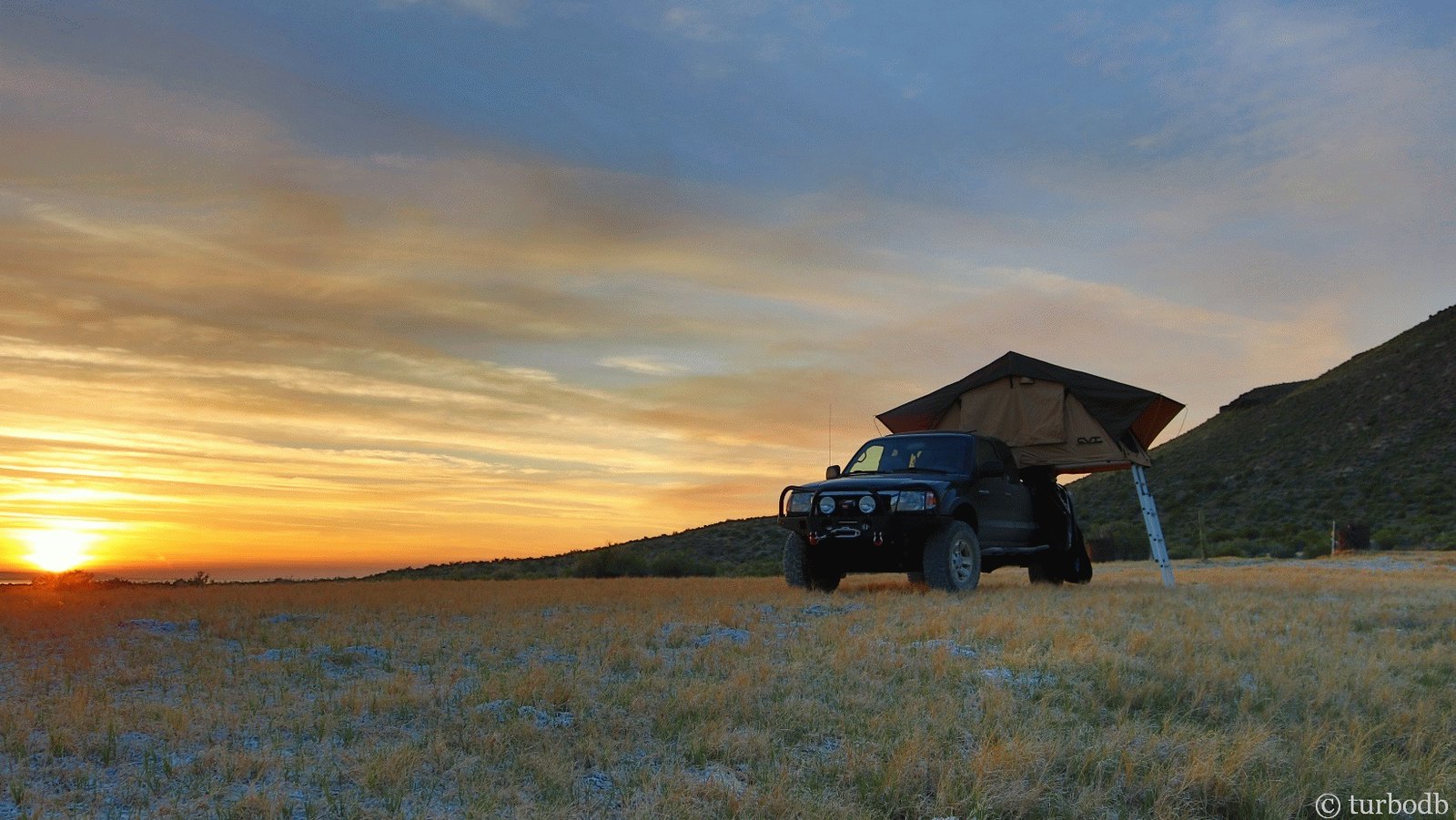
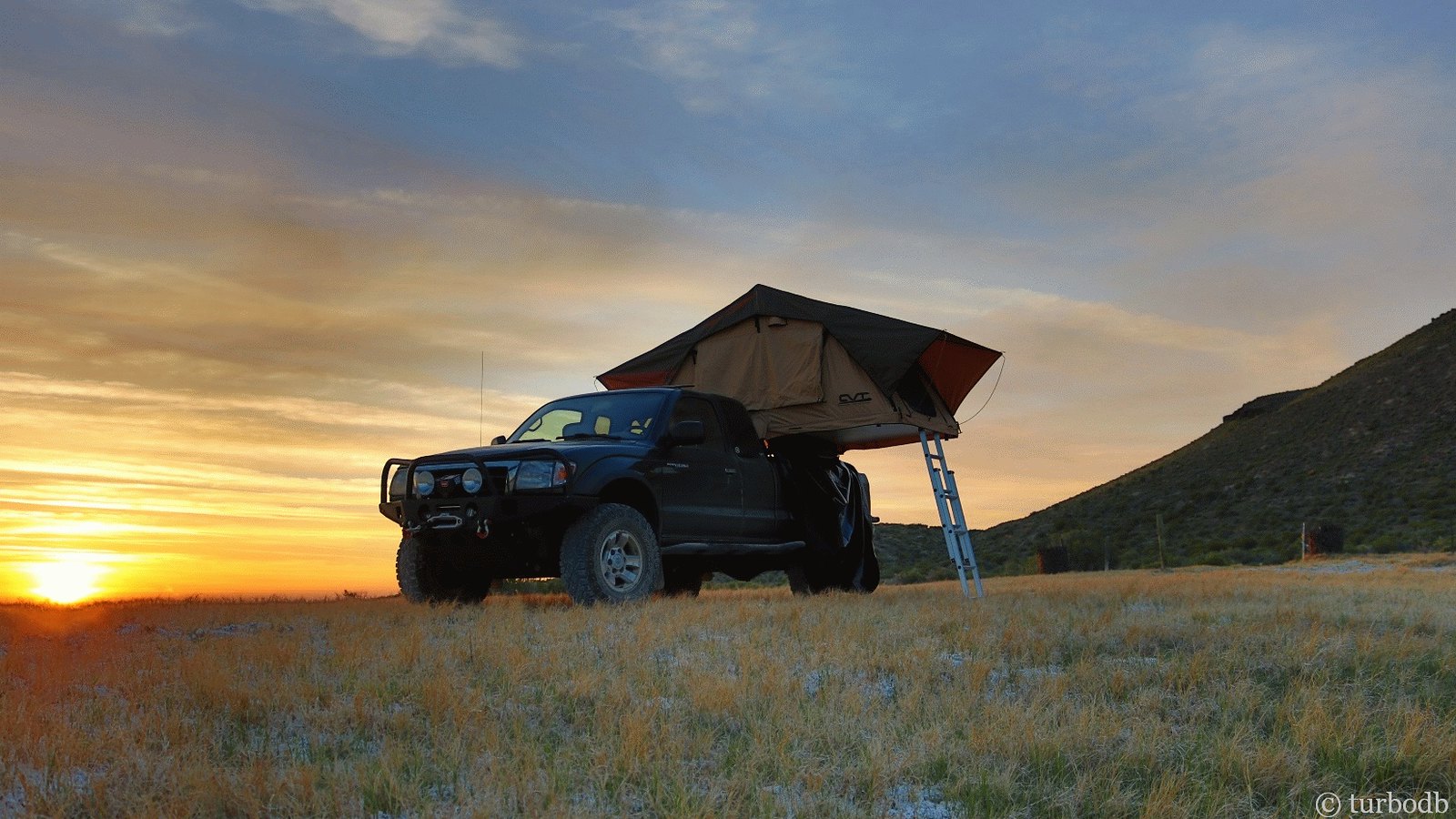
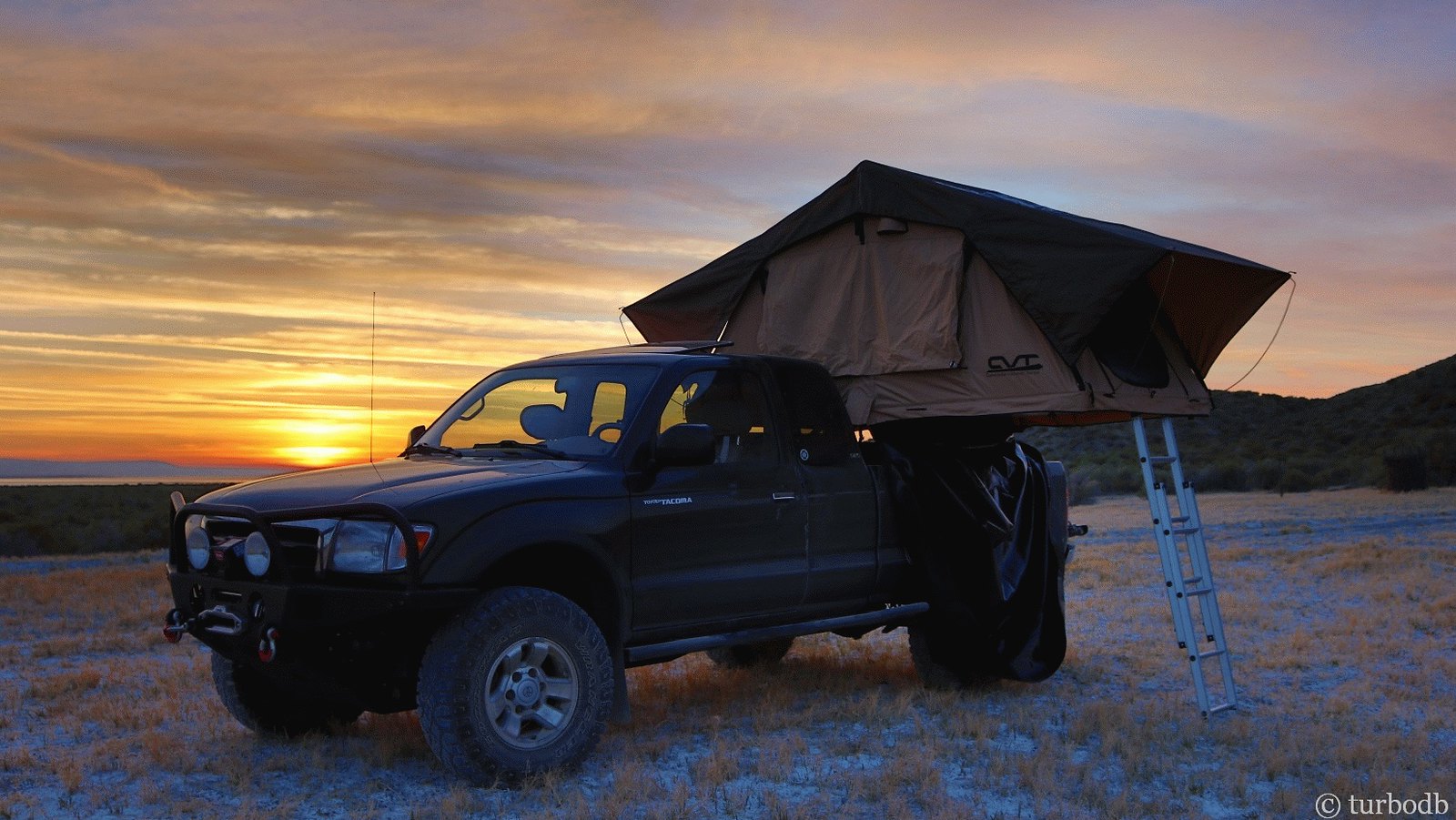
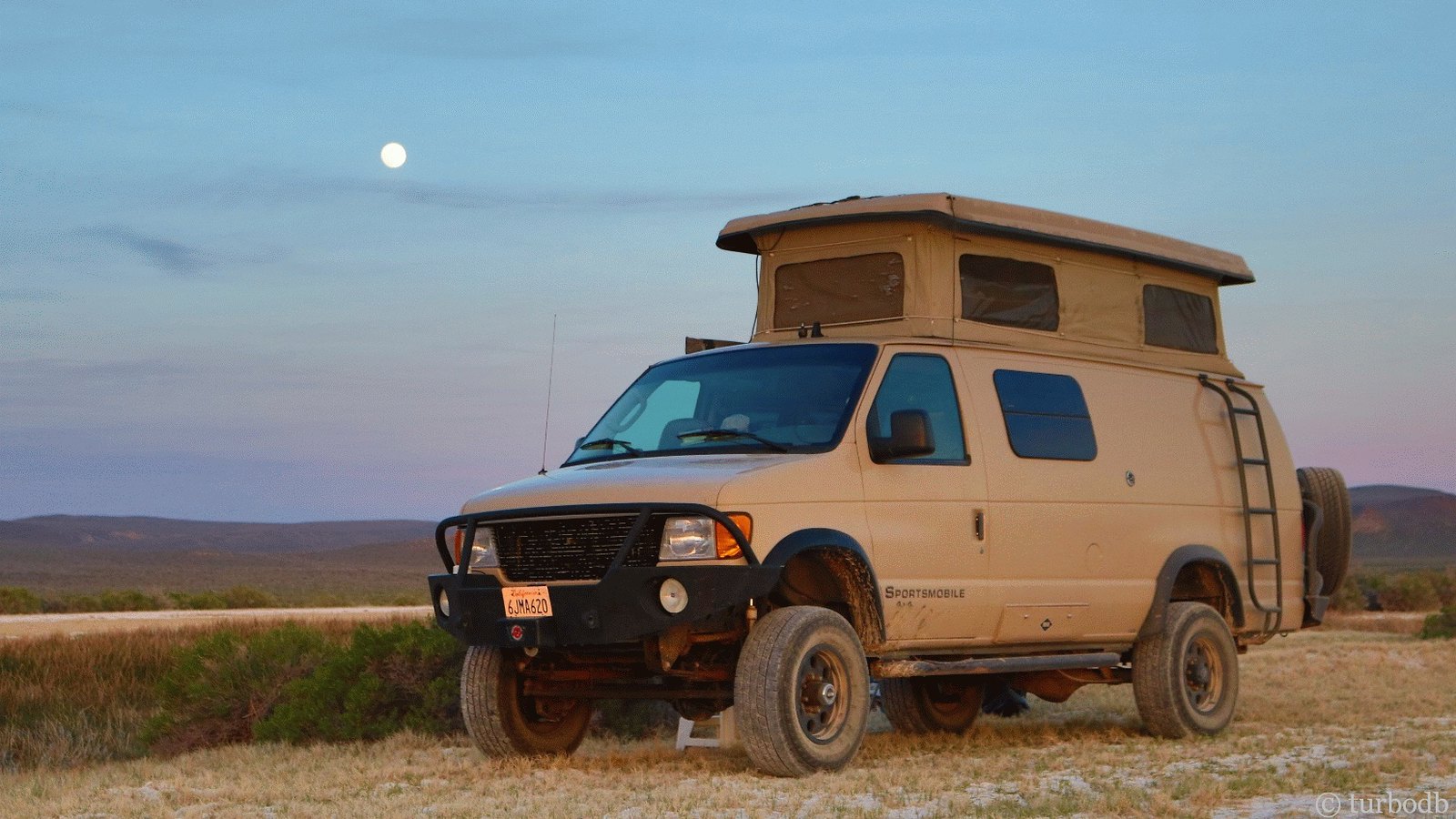
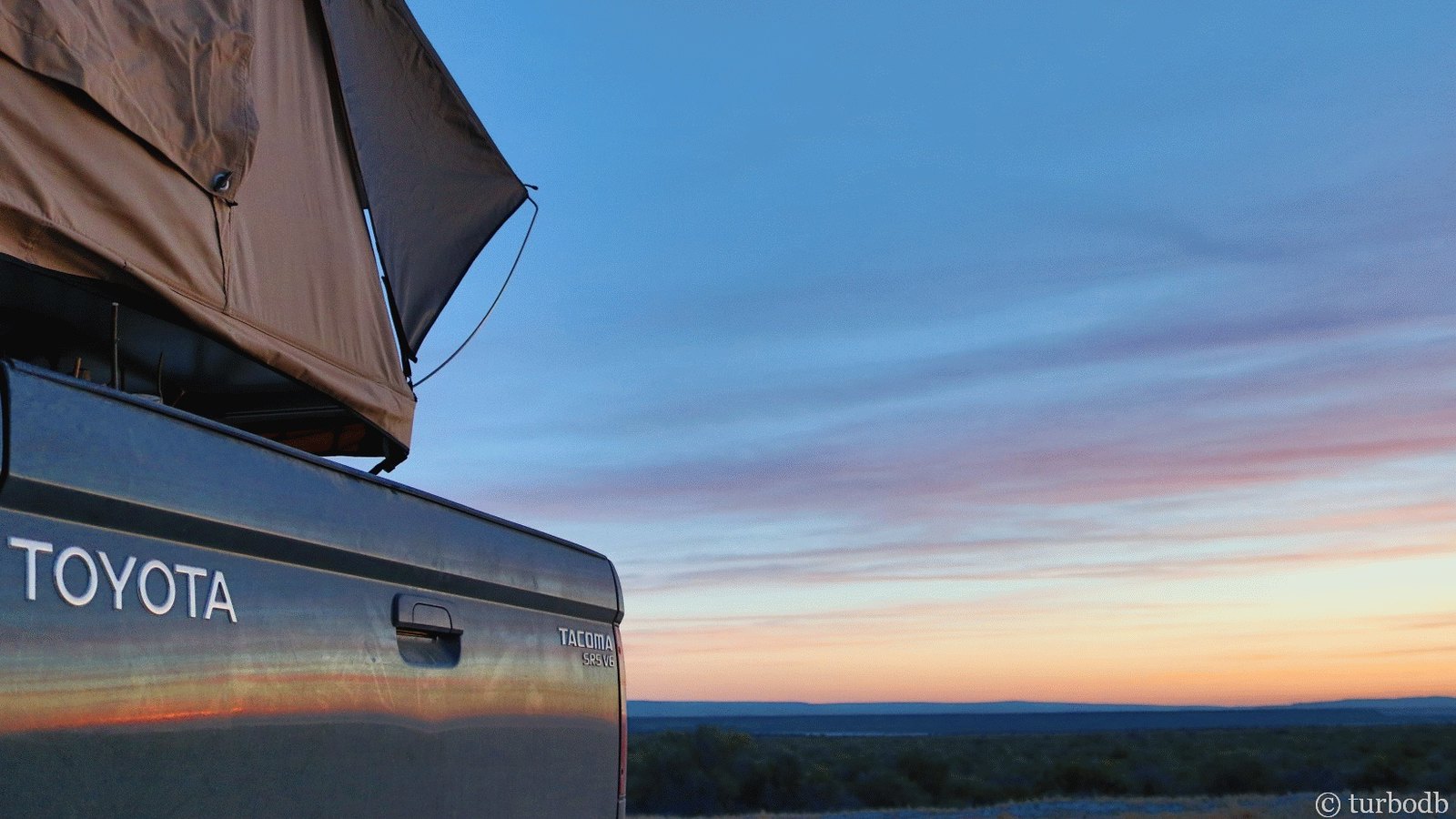
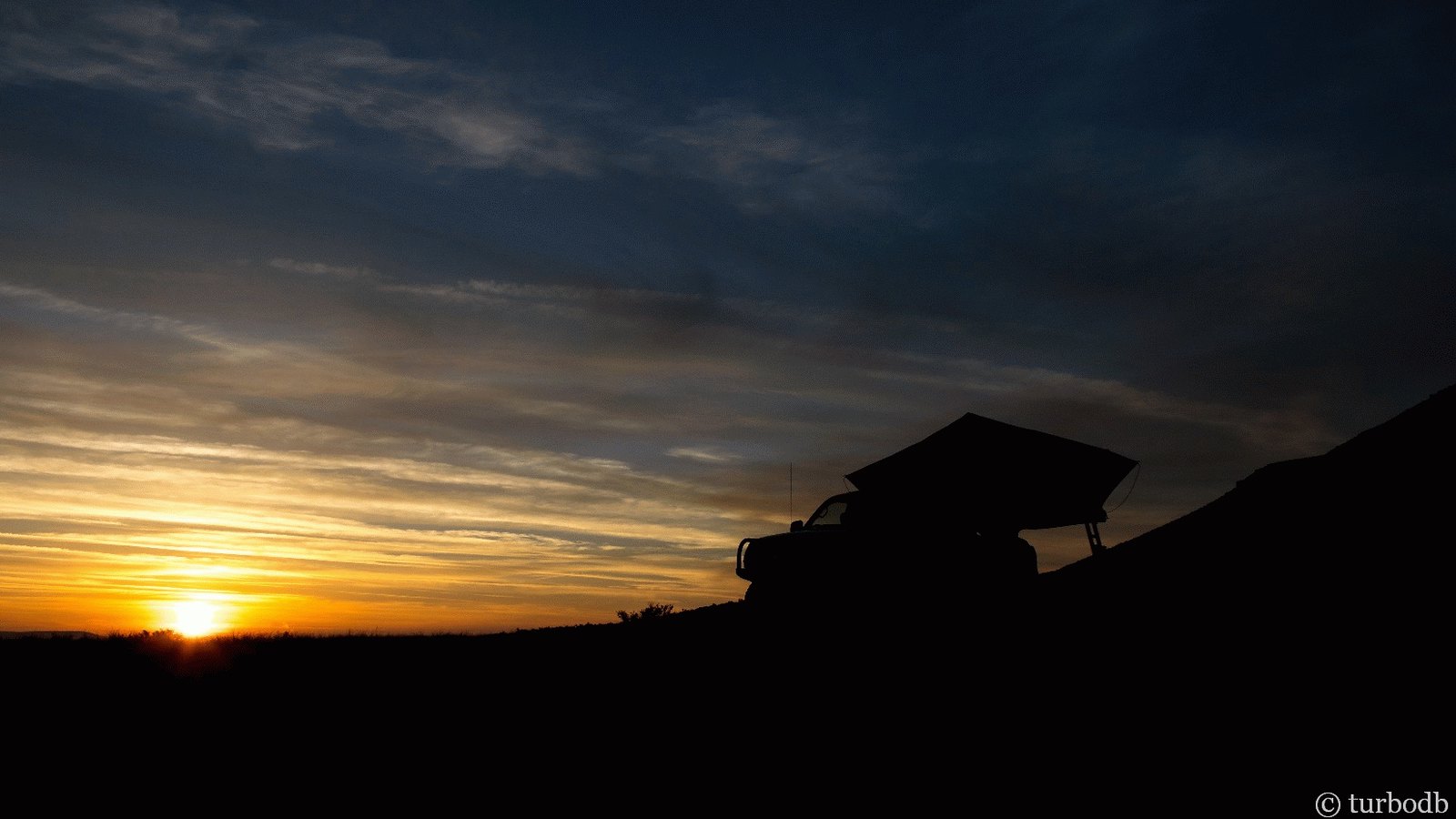
That left only one question - who wanted to soak in the hot spring?
Three of us were sure of our answer: “No way!” Eight inches of water and 18 inches of mud wasn’t our cup of tea.
In the end, after telling us that “People pay good money for mud baths,” my Uncle refrained as well - it was a bummer that the spring didn’t work out, but we’d had fun finding it nonetheless.
Day 3: Wednesday, May 10.
We awoke, once again, after we'd normally arrive at work and to and amazing view of the steaming hot spring. Naturally, that played into our decision to hang out in the tent reading for another hour.
Of course, this was all well before Dad and my Uncle awoke.
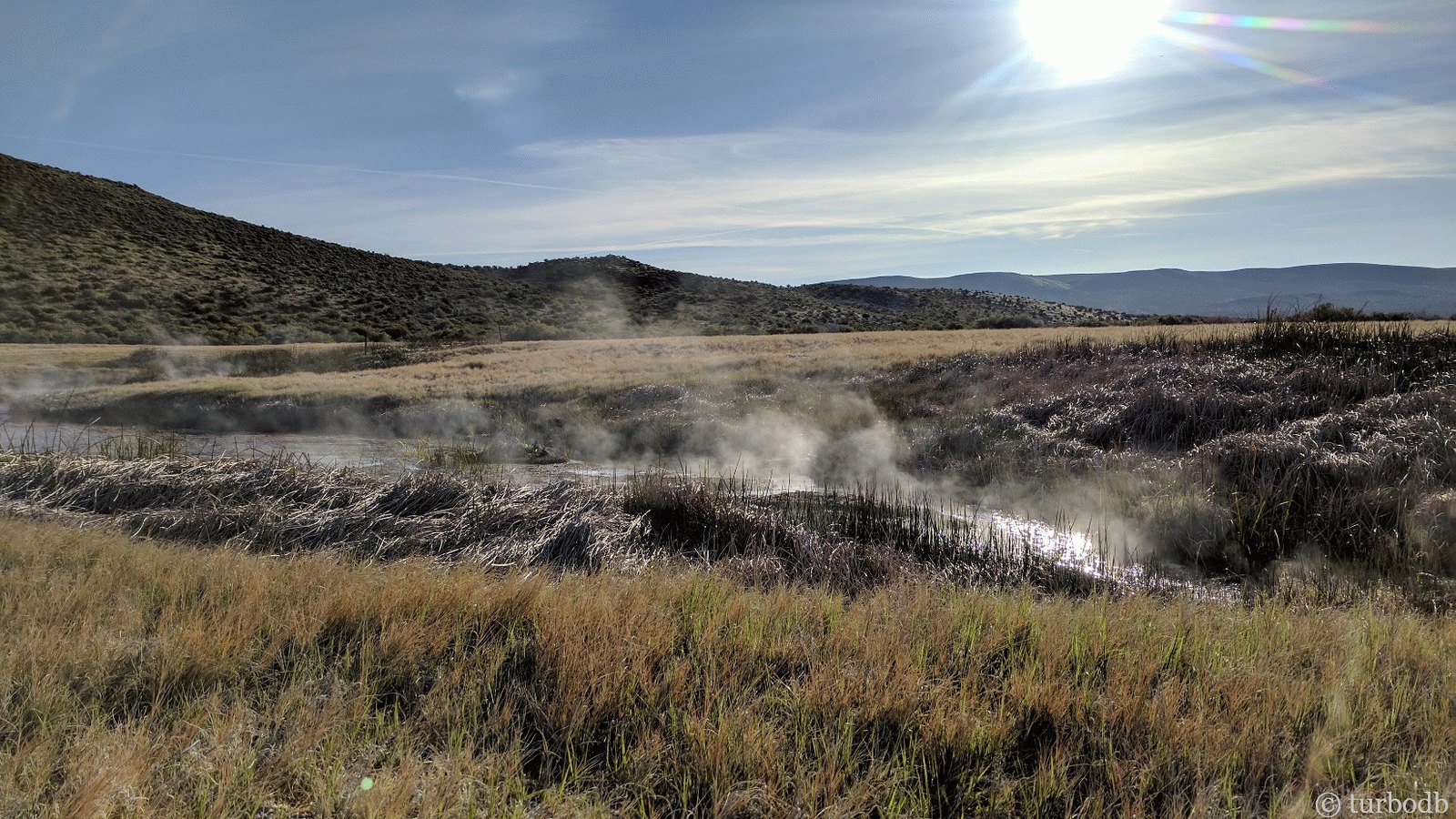
By noon, we were on our way to our next adventure - the plan for the day was to (once again) check out the local bird population on the way to our next waypoint - Diamond Craters - where we'd do some exploring of the volcanic remains, and then find a place to hang out for the night.
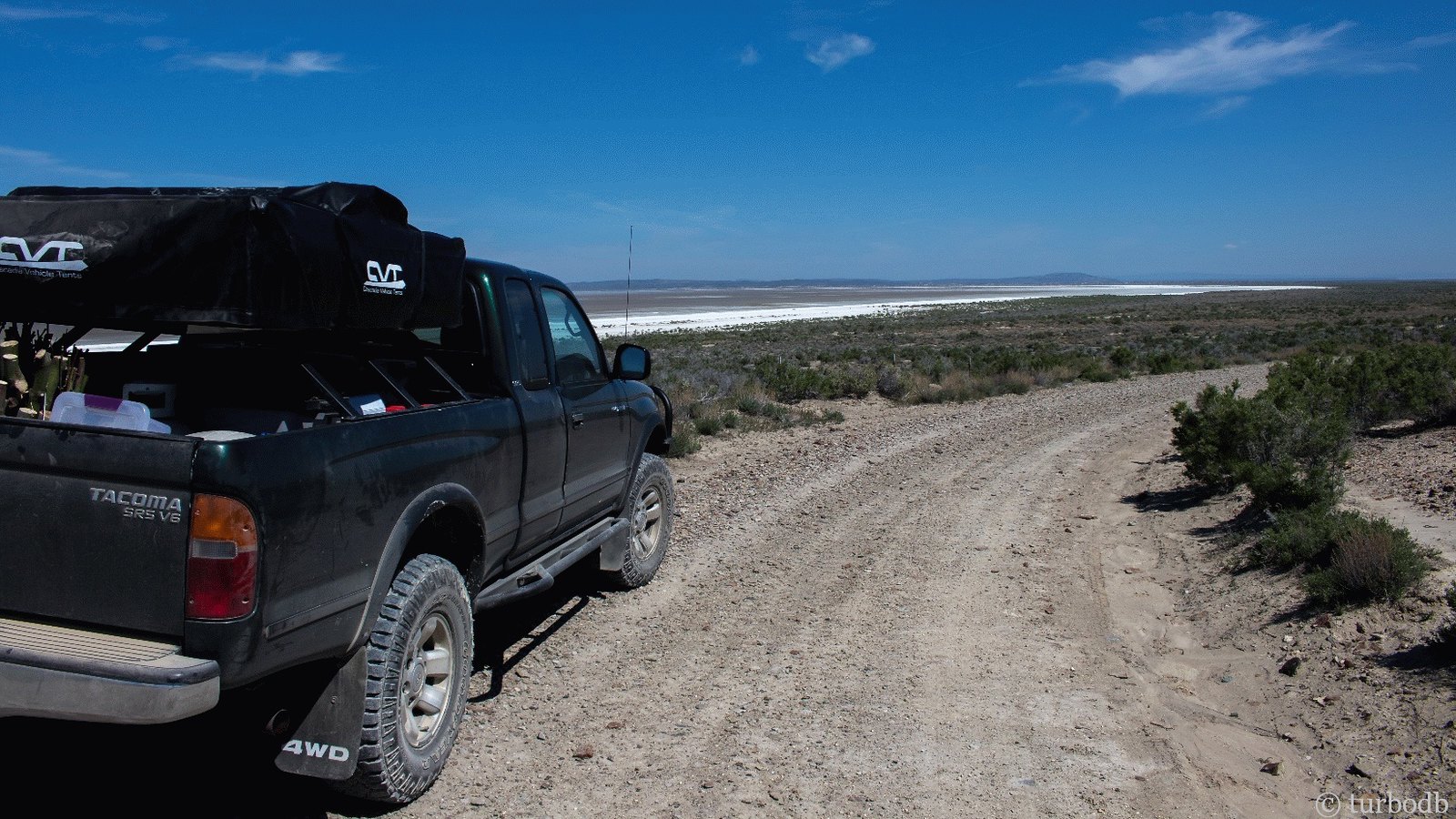
We travelled the first several miles together, and then my Dad and Uncle headed off to Malheur HQ while we headed south on once the most well maintained gravel roads we'd driven. Twenty miles in, we passed a bridge over the Donner and Blitzen River where we decided to stop for a quick snack and some pictures.
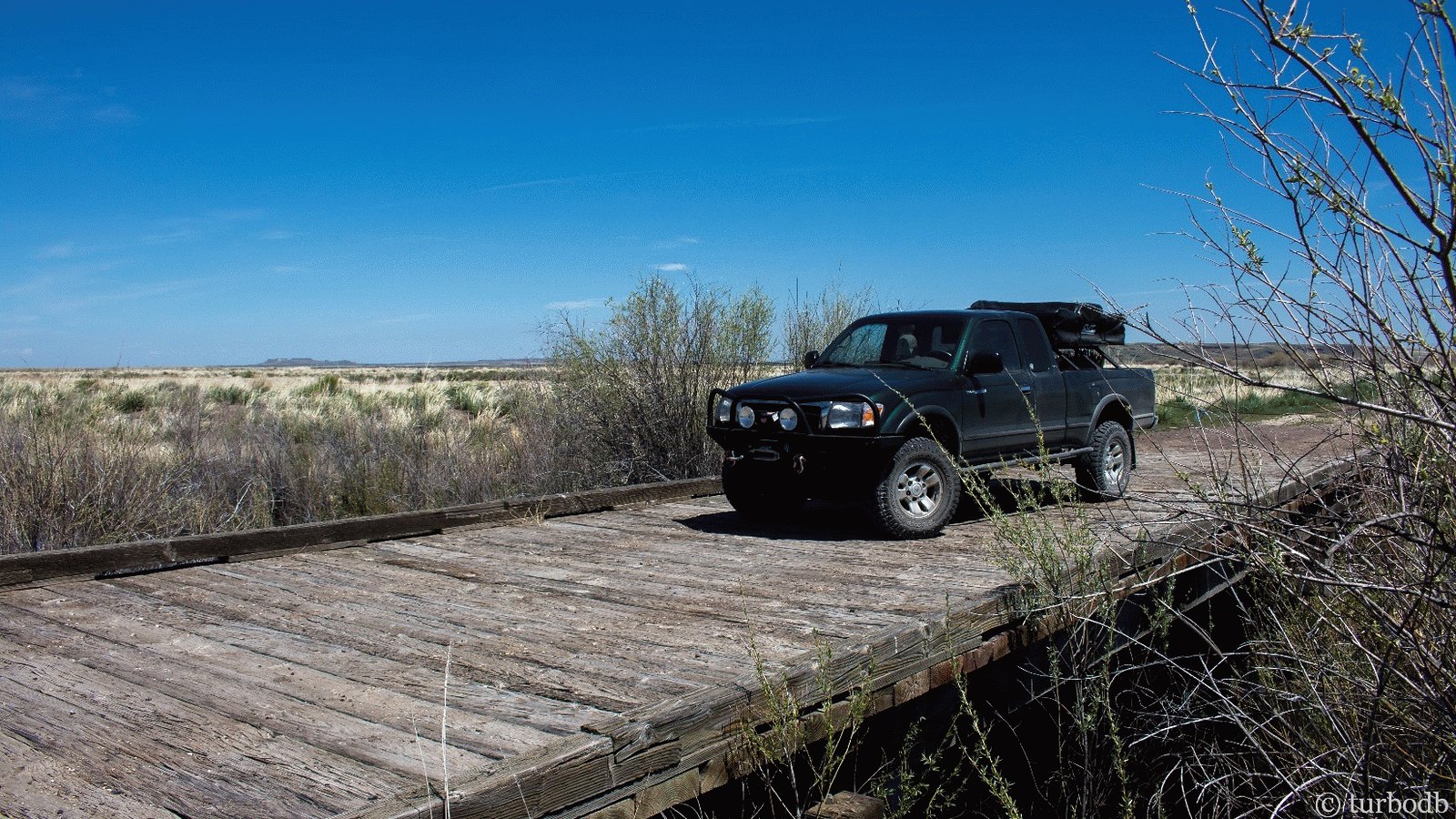
On exiting the truck, I heard it immediately. Hissssssssssss, coming from the rear driver tire.
Seriously? On this nicely maintained, washboard-free gravel road?
It turned out, yes. Seriously.
The puncture had happened relatively recently, as the tire was still nearly at full pressure, so we took a look at the GPS and determined that we were another fifteen miles or so from our rendezvous point on the way to Diamond Craters. So, we made the decision to get to the junction where we were going to meet up, and then fix the flat there (or swap in the spare). Half an hour later we arrived, and pulled off onto a shoulder where Dad and my Uncle would see when they passed by.
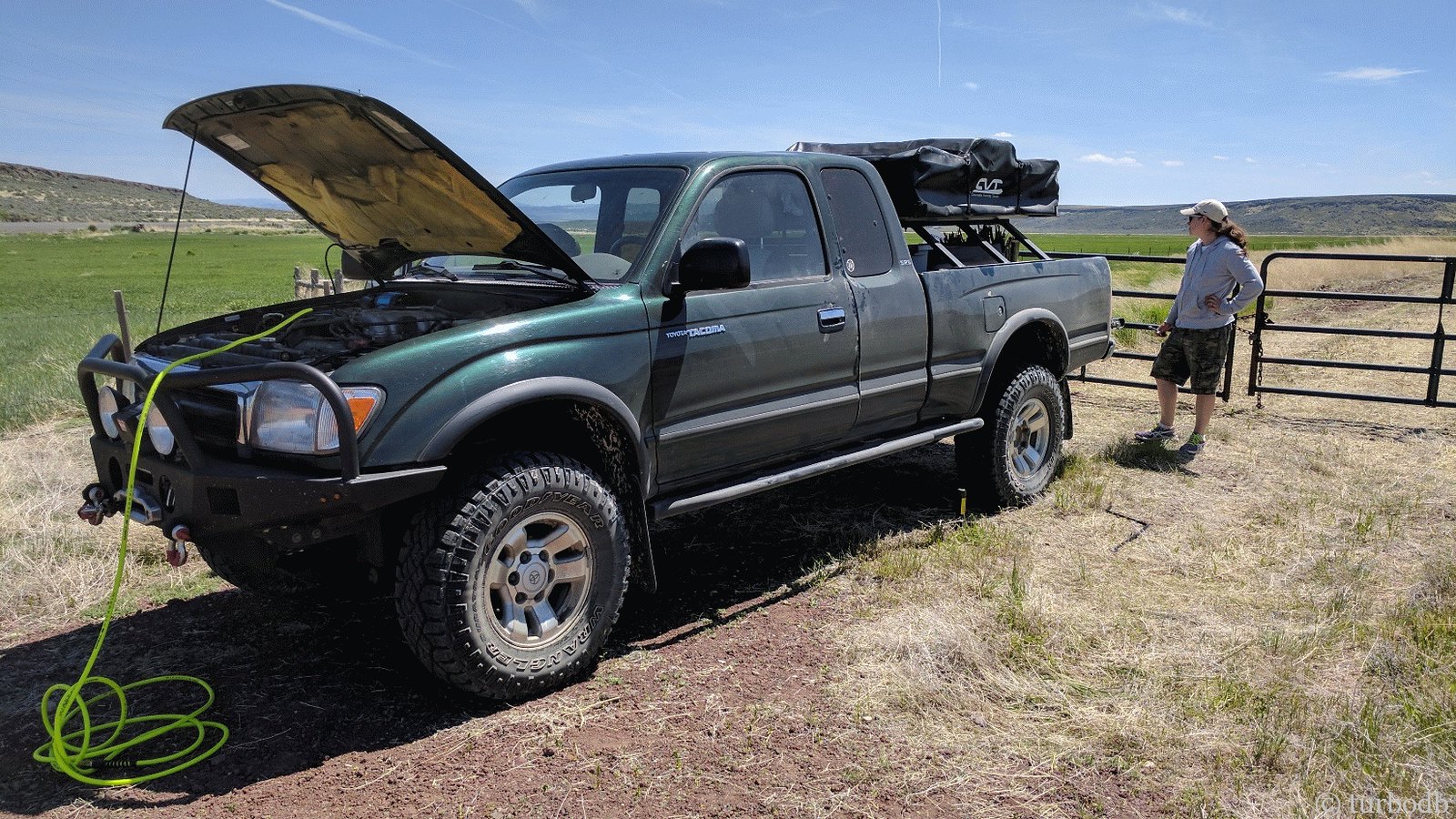
Happy that I'd recently installed the ARB compressor so I'd be able to refill the tire after the repair, I first re-inflated the tire to help lift the back of the truck a bit (with all the extra weight back there) and then used the OEM bottlejack on some rocks, to (just barely) lift the back tire off the ground.
It was about this time that I was cursing myself for leaving the hi-lift at home. Way to go bud.
But that wasn't all. I had a tire plug repair tool and kit, but I'd forgotten to grab the rubber cement. It's optional, but I always like to use it, since it "melts" the plug and tire together, making for a better repair.
So, with the truck jacked up, and the wheel removed, I was just about to push in the plug when Pops and my Uncle rolled up in the Sportsmobile. To say they were surprised would be an understatement - surprised that I got a flat on such a nice road; surprised that it was nearly taken care of before they even showed up.
And, my Uncle rustled around in his toolbox and found a tube of rubber cement. Nice!
A few minutes later, the repair was complete and I was reinstalling and re-inflating the tire. And everyone else was sitting down for lunch. Right on time, it was 3pm!
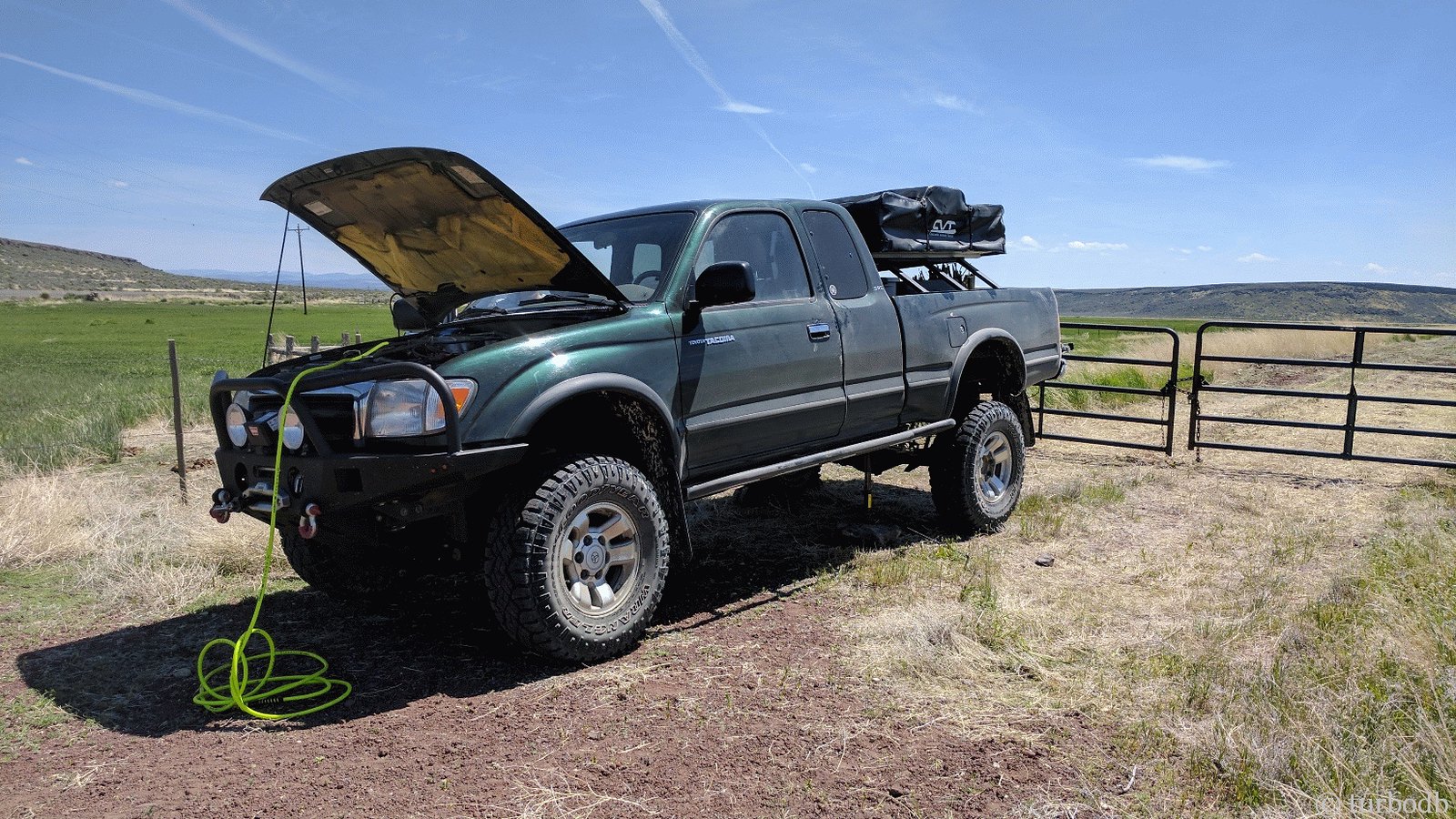
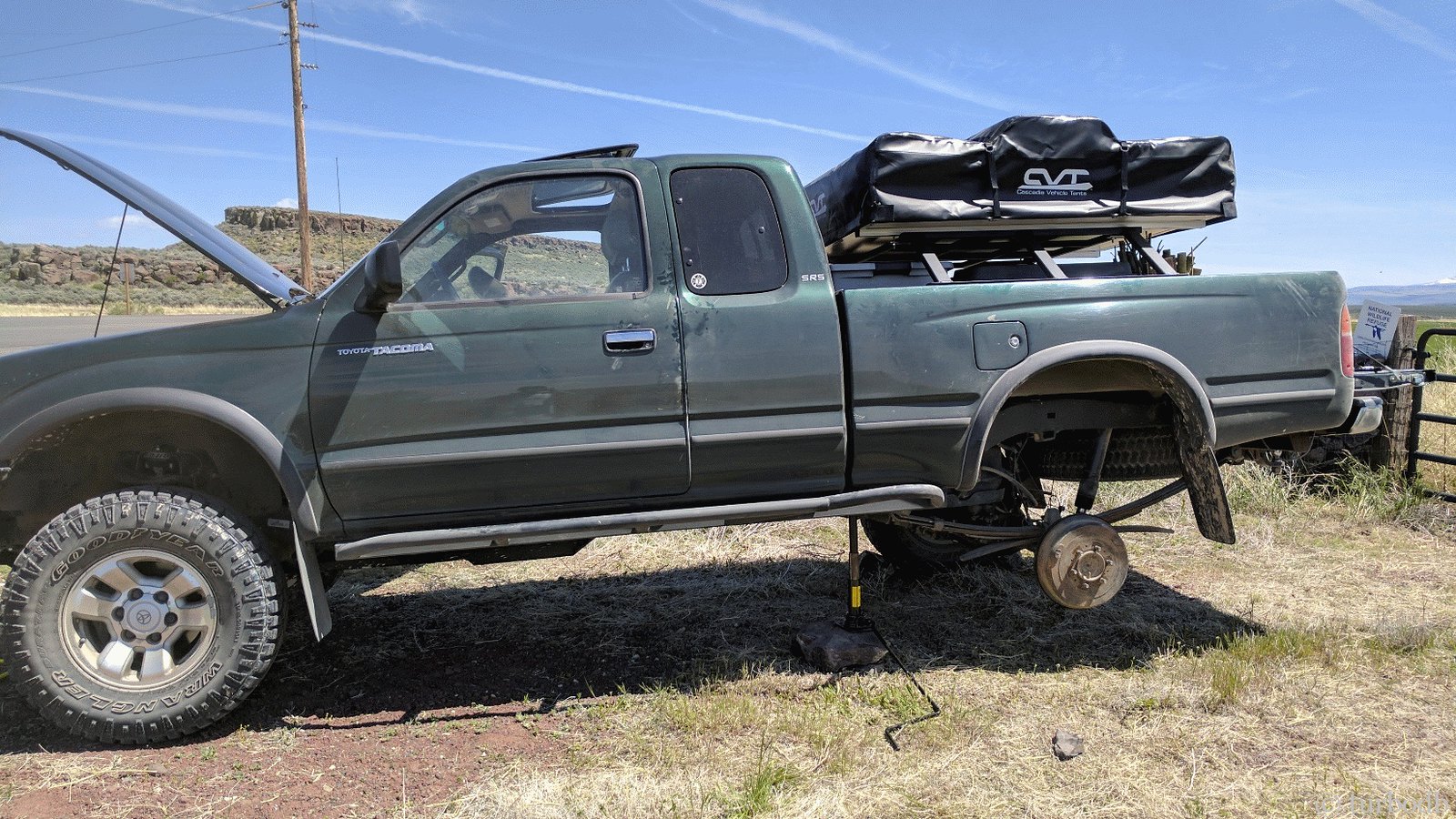
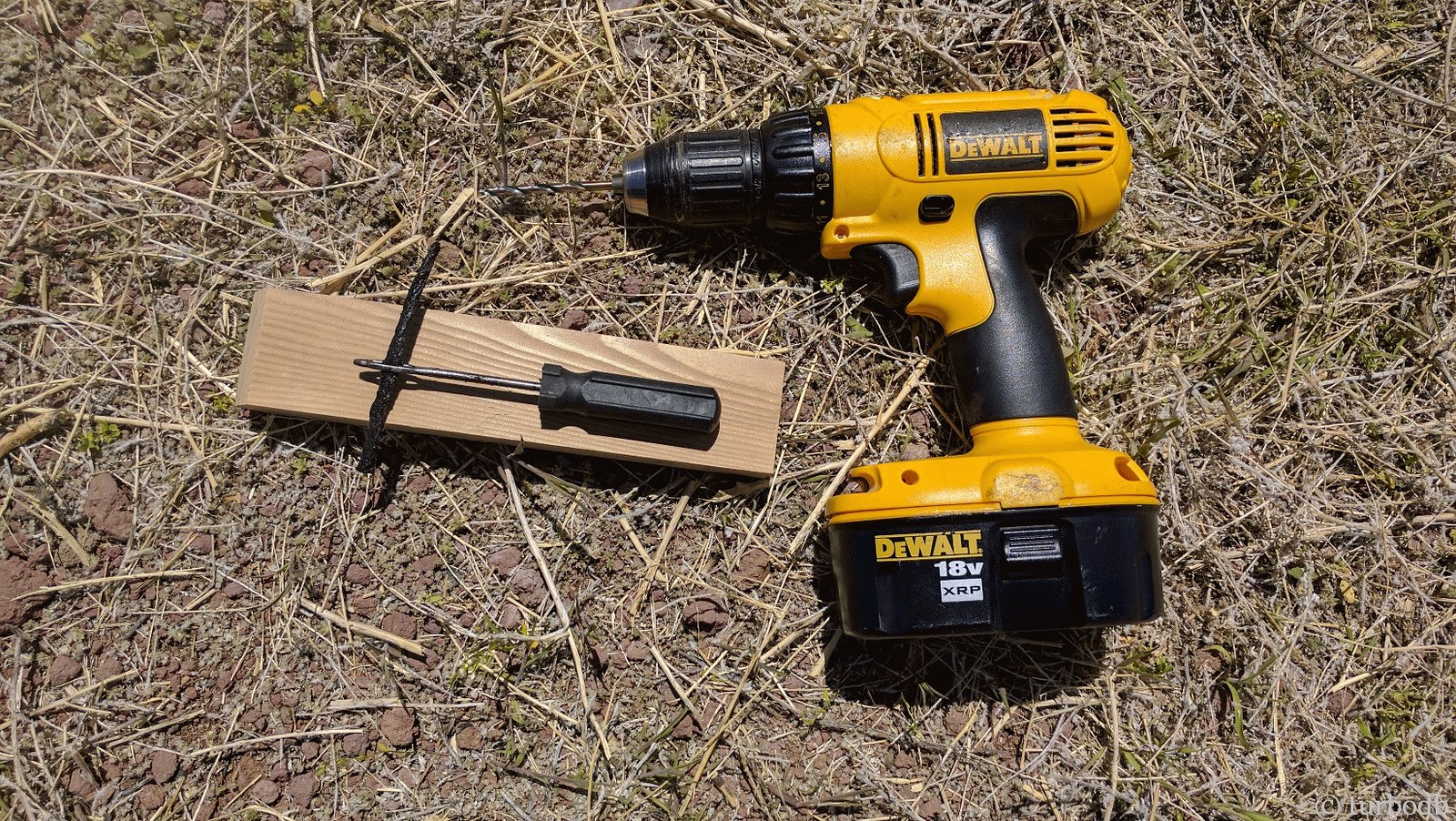
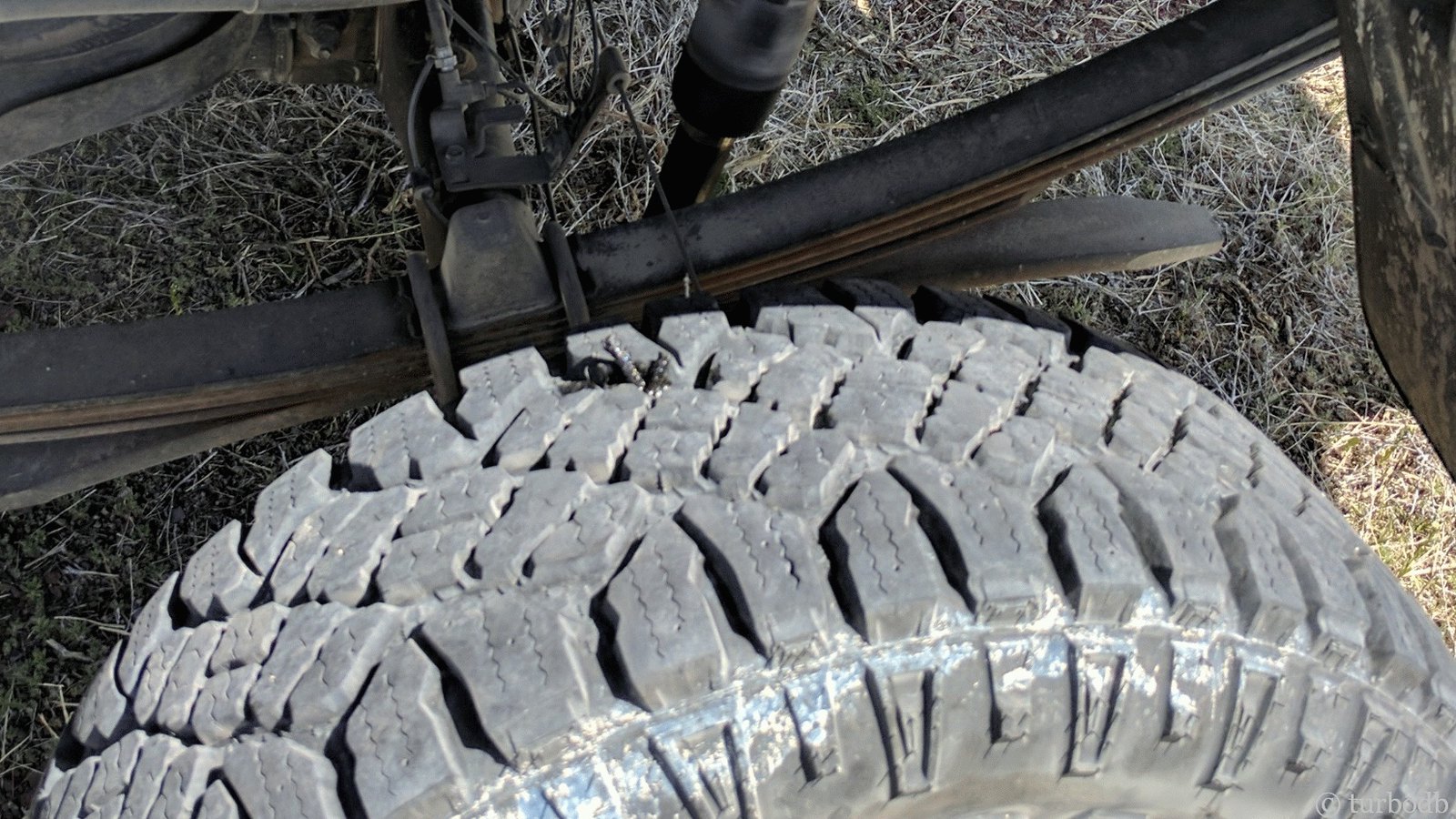
After wrapping up lunch and downing a bit of chocolate, we mounted up and continued on to Diamond Craters, where our next adventure and some great camping awaited. Near the entrance, we pulled over near the info station to learn a bit about the history of Diamond Craters. It turns out this is one of the younger volcanic fields, at only ~7000 years old, and there are places in the 27-square-mile area where there are still no plants growing, due to the lack of any nutrients, and the quick-draining nature of the volcanic landscape.
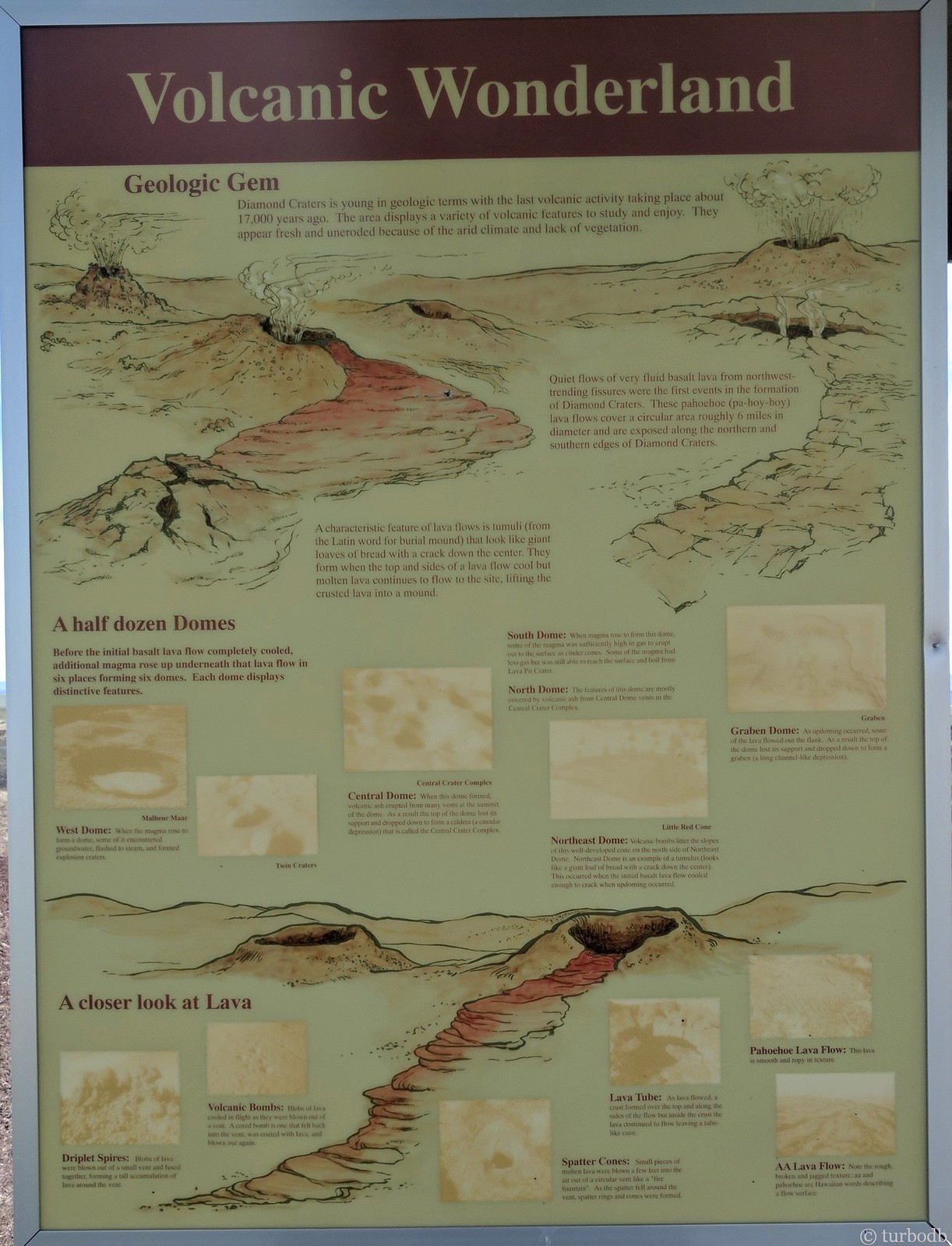

We explored around the entrance (called Big Bomb Crater) for a while, looking for some of the "bombs" - rocks that ranged from the size of marbles to softballs that when broken open were glassy inside - pretty cool.
Then, it was off to Red Bomb Crater, a dome that pushed up and then ultimately collapsed, leaving an enormous hole (similar to Coffee Pot crater we saw last year in Oregon's Owyhee Canyonlands).
Standing on the edge of the crater, the crew did what any good set of goofballs would do - they posed for the camera.
And then, so did a lizard.

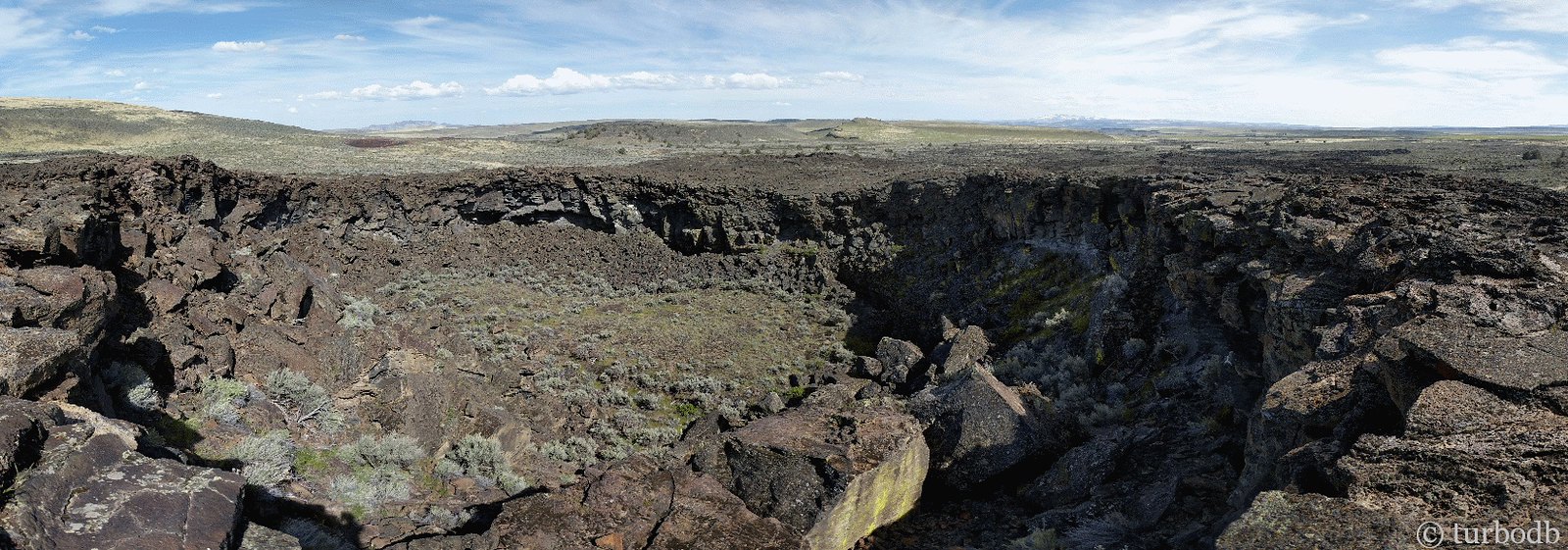
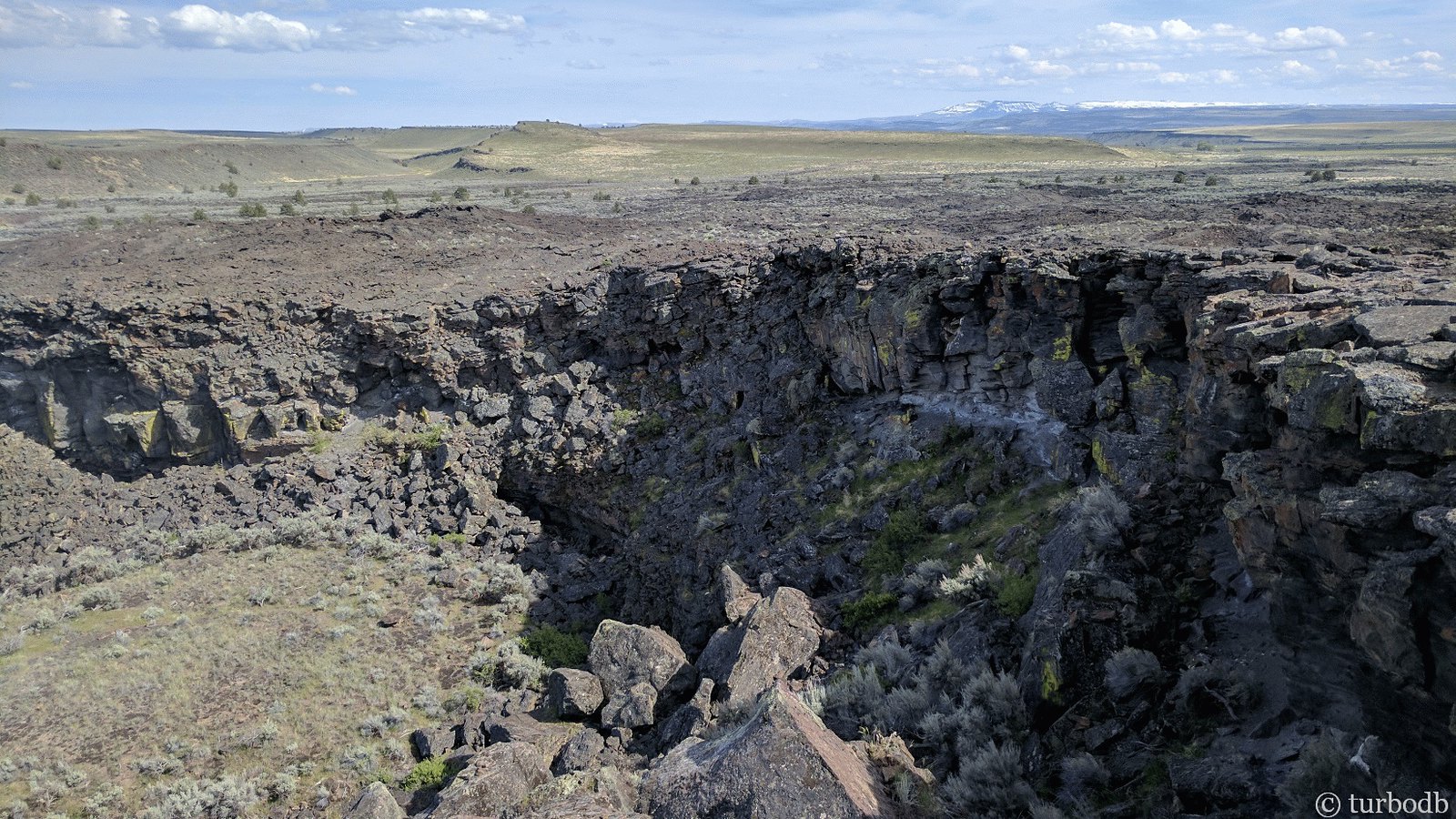
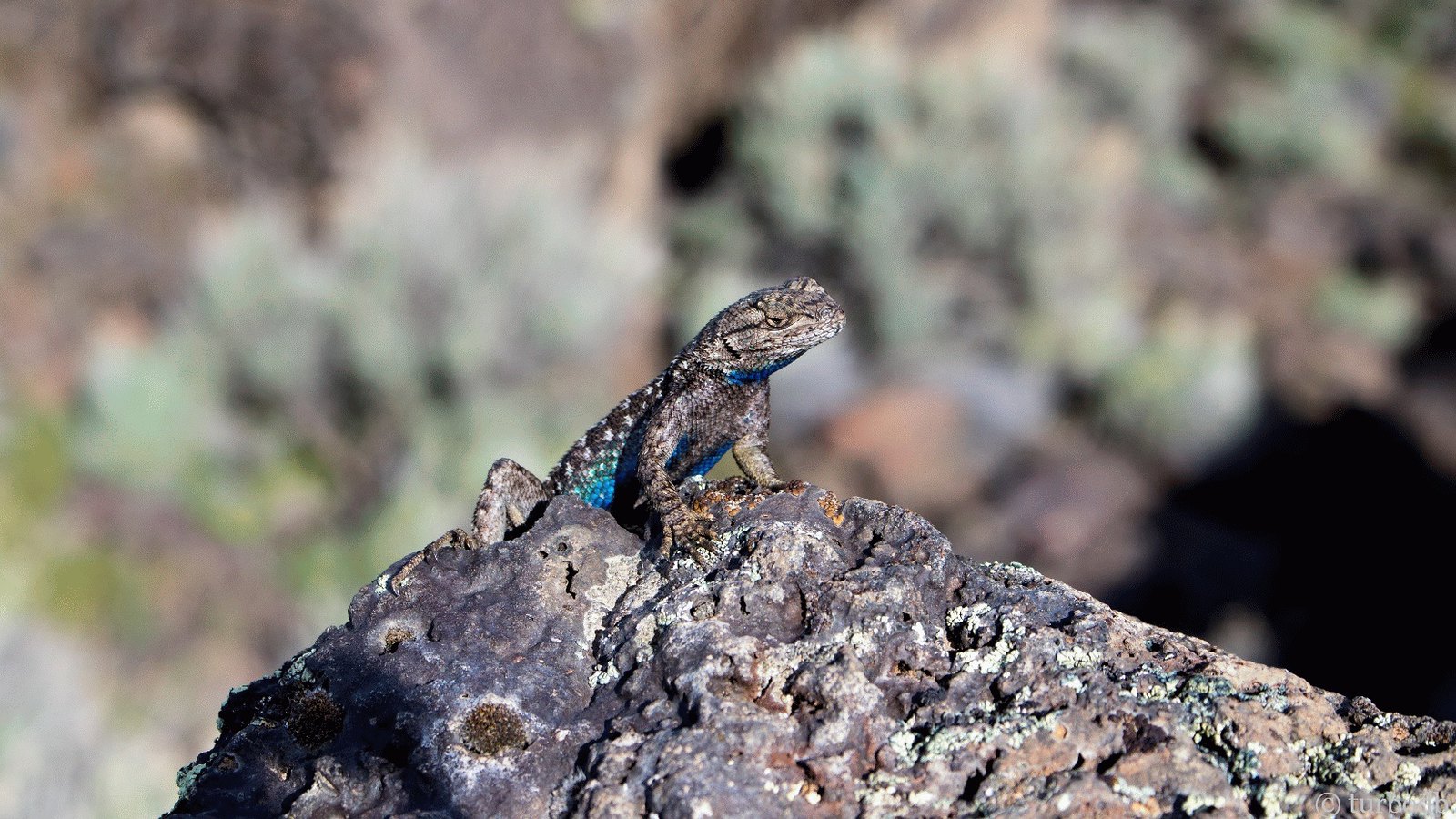
Back in the vehicles, we continued on. But not for long - as we rounded the corner, we saw a van on a ridge in the distance.
"That van sure looks like it's in trouble," I mentioned to @mrs.turbodb. "Maybe we'll have to rescue it."
Within a minute, as we pulled up to the next vista, we were flagged down by a group of about 20 college-aged students who asked if we were in a position to help them recover one of their vans.
We said we'd be happy to take a look, and headed out to assess the situation.
Turns out, the driver was a geology professor out with a group of Oregon State kids, checking out the volcanic geology of the area. He'd already called some contacts he had in Burns to help him get back on the road, so we decided to hang out with him while he waited, chatting about the landscape.
It was a highlight of the day all around, I think. We loved the knowledge, and he loved the fact that we could so quickly apply the info he shared about the geology of the area - comparing to other places we've explored across the western states.
Of course with my Uncle there, there was the token "uncomfortable" conversation as well - about how the prof got into the precarious situation he was in.
"Next time you feel your traction going, you want to stop about here," my Uncle said, pointing about 30% along the way of the 10' long tire skid marks.
"I stopped pretty quickly," said the professor. "There was momentum involved, but I got on the brakes quickly."
"Not that quickly," said my Uncle. "As soon as you notice something going wrong, stop. Evaluate. Then you'll usually be able to get yourself out."
That was some good advice of course, but awkward advice to give on the spot, when the vehicle is perched precariously on a ridge. 🙂
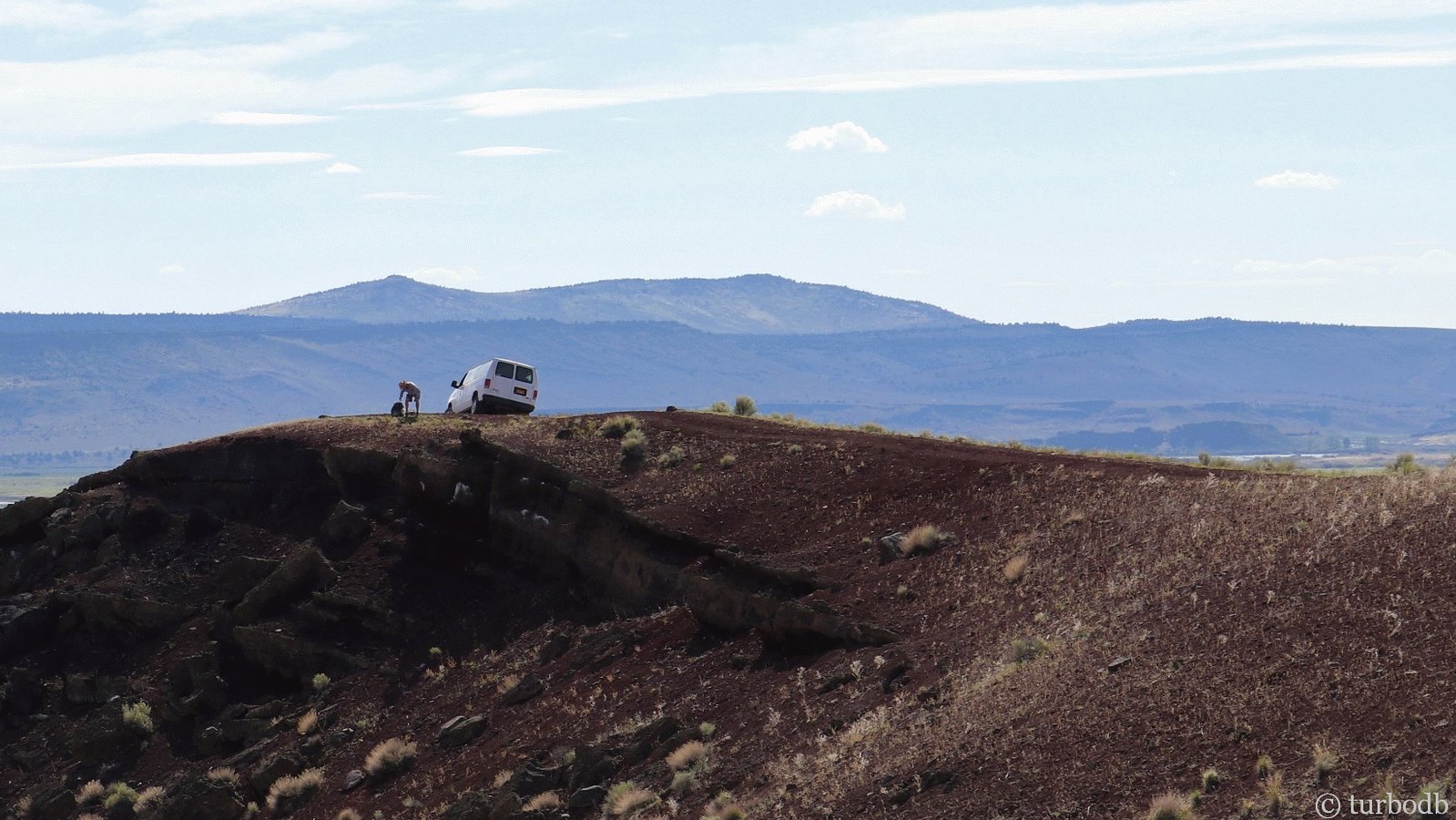
After a while, help showed up and we moved on - all happy for the 45 minute conversation we had, and glad that everything was going to end up OK for an obviously nice guy. We checked out a few other craters, including one with a natural spring, which keeps 6' of water in the crater at all times - the Malheur Maar.

Of course at each of them we took a little break. We didn't want to move too fast with the old guys tagging along.
They took the opportunity to bird.
I took the opportunity to scout out a promising looking camp site on the map. Somewhere isolated. With a view.

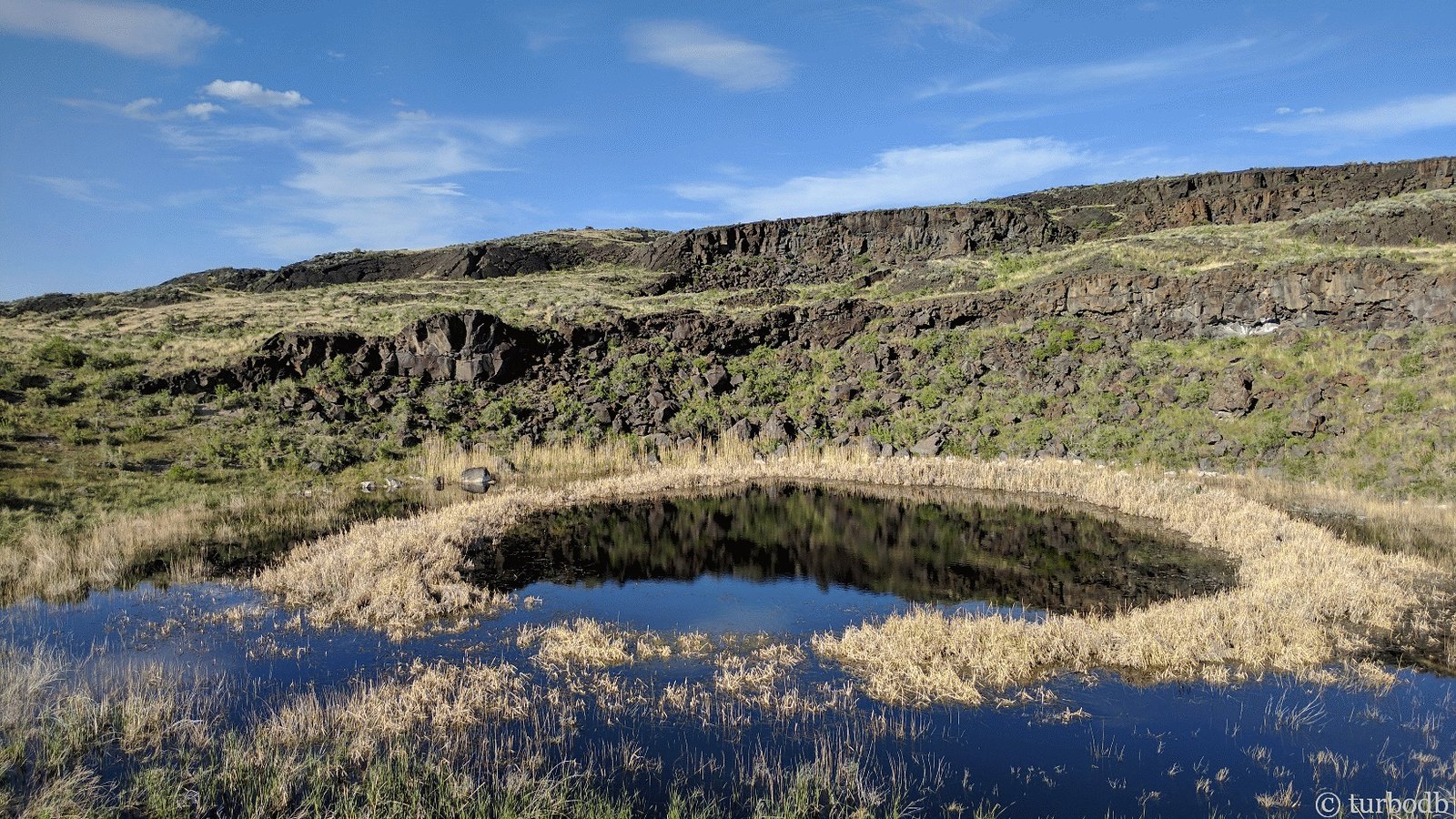

Moving on from the Maar we headed off on a two-track that was obviously less travelled than anything we’d been on so far. And that of course was great from our perspective.
This time, instead of my Dad and Uncle leading, we took the lead in the Tacoma. Almost immediately, we spotted a group of four antelope and radioed back that we were stopping to take some pics.
“Always stopping,” we heard over the radio, from the guys who travelled at essentially feet-per-hour birding.
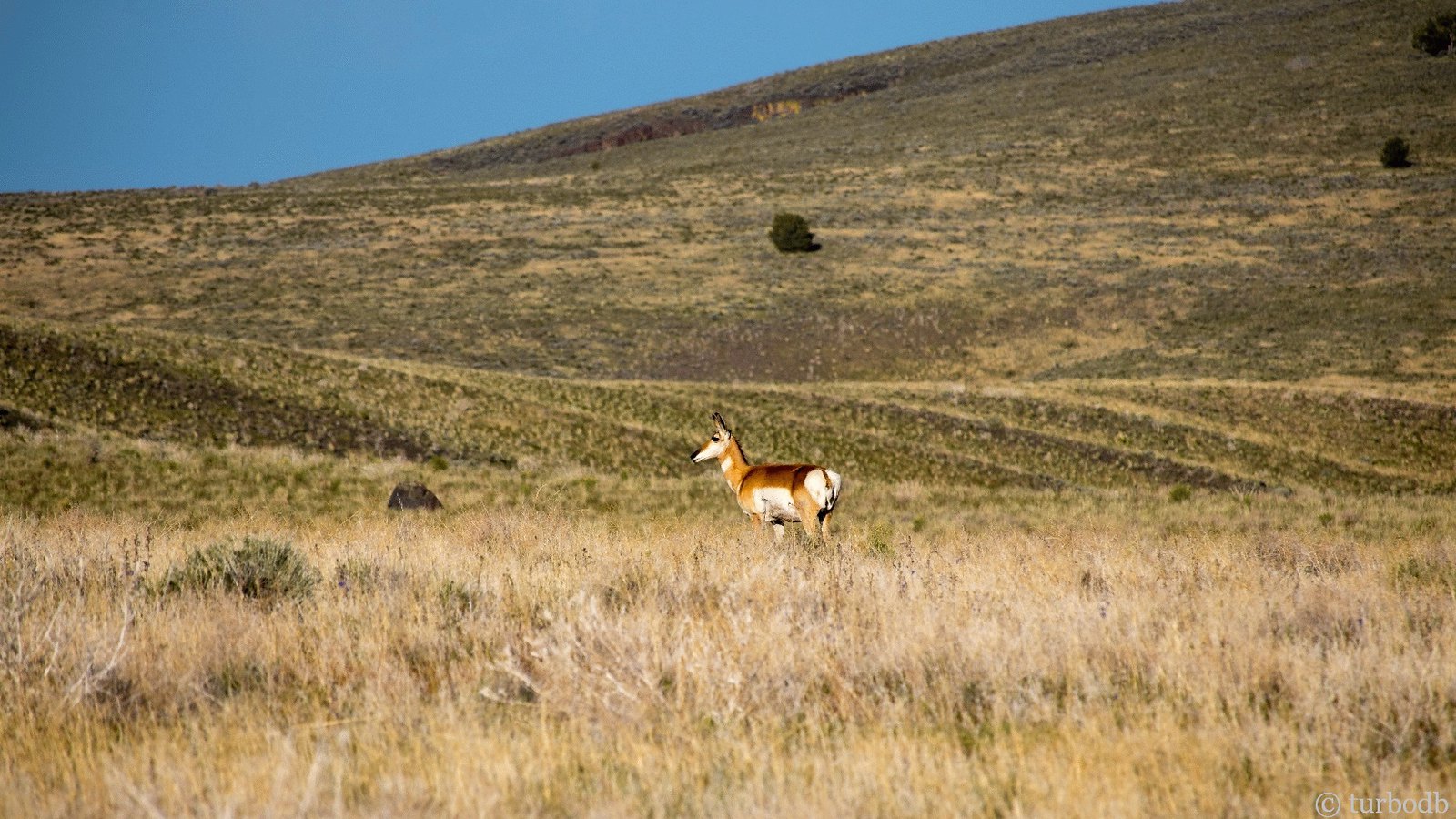
Of course, as soon as the antelope saw us, they took off bouncing. I chased for a bit over the nearest rise.
Apparently though, I’m slower than an antelope. (Even though my daughter thinks I’m faster than a Cheetah.)
So, it was back in the vehicles an on our way. The track was relatively nice except for the fact that about one million ground squirrels had burrowed tunnels on alternating sides of the track seemingly every 30 feet or so. The dirt from these tunnels created mounds in the tracks about 8 inches high and a foot or so wide. Even aired down, this really meant that speeds over about 10 mph were uncomfortable, so we puttered along rather slowly.
Or like race car drivers if you ask Dad and my Uncle. They averaged about three miles an hour.
Which for them is race-car-driver speed (if you ask me, after following them the last couple days birding).
Regardless, after some time we found ourselves leaving the moonscape of the lava beds and entering a bluff-like area that overlooked a small Juniper forest and a sprawling valley.
This was our next night’s camp spot.
We radioed back to tell the guys, and then started setting up camp. Right in the middle of the road. It was clear that no one had driven the road in months, so we weren’t worried in the least.
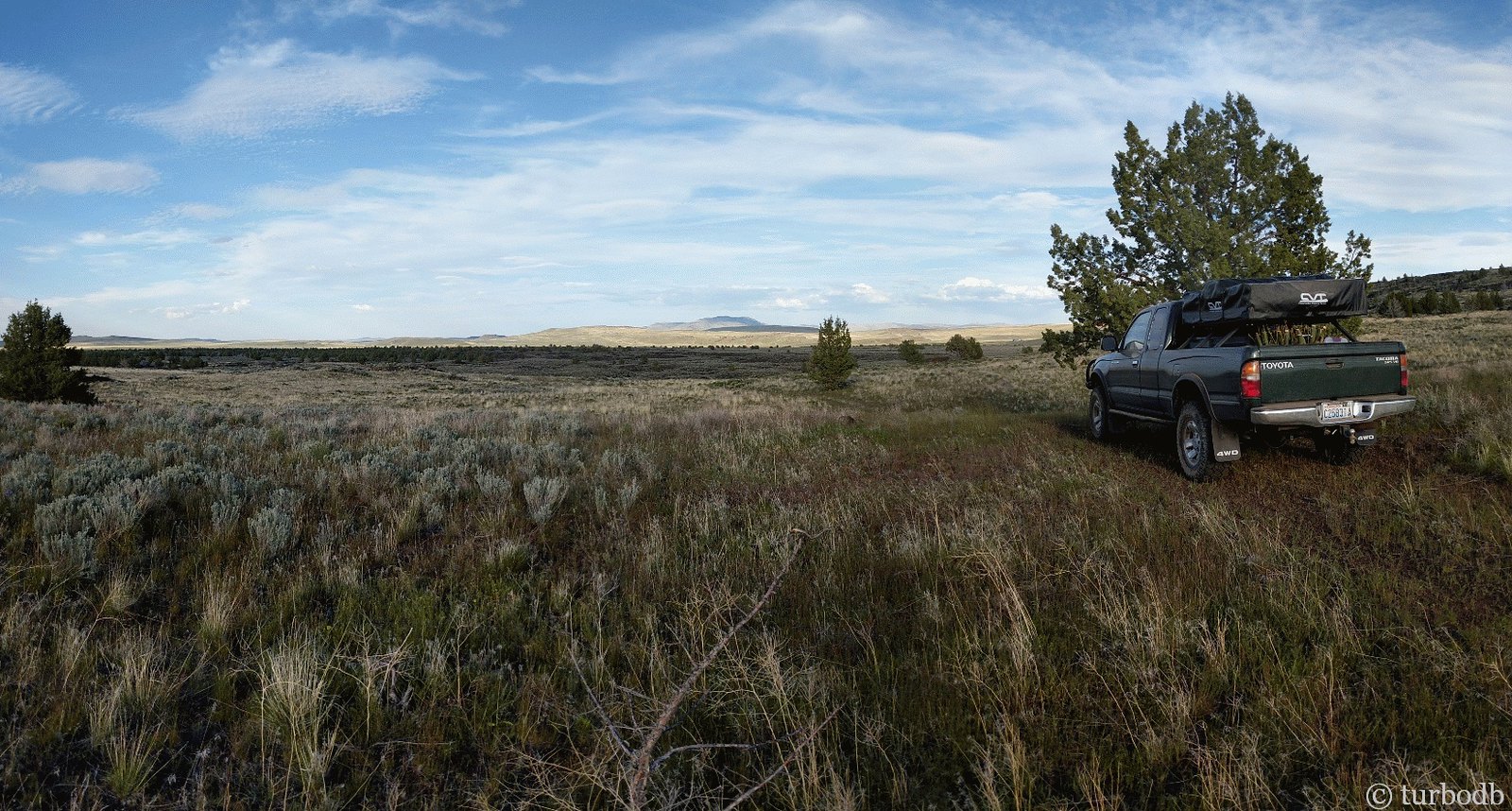
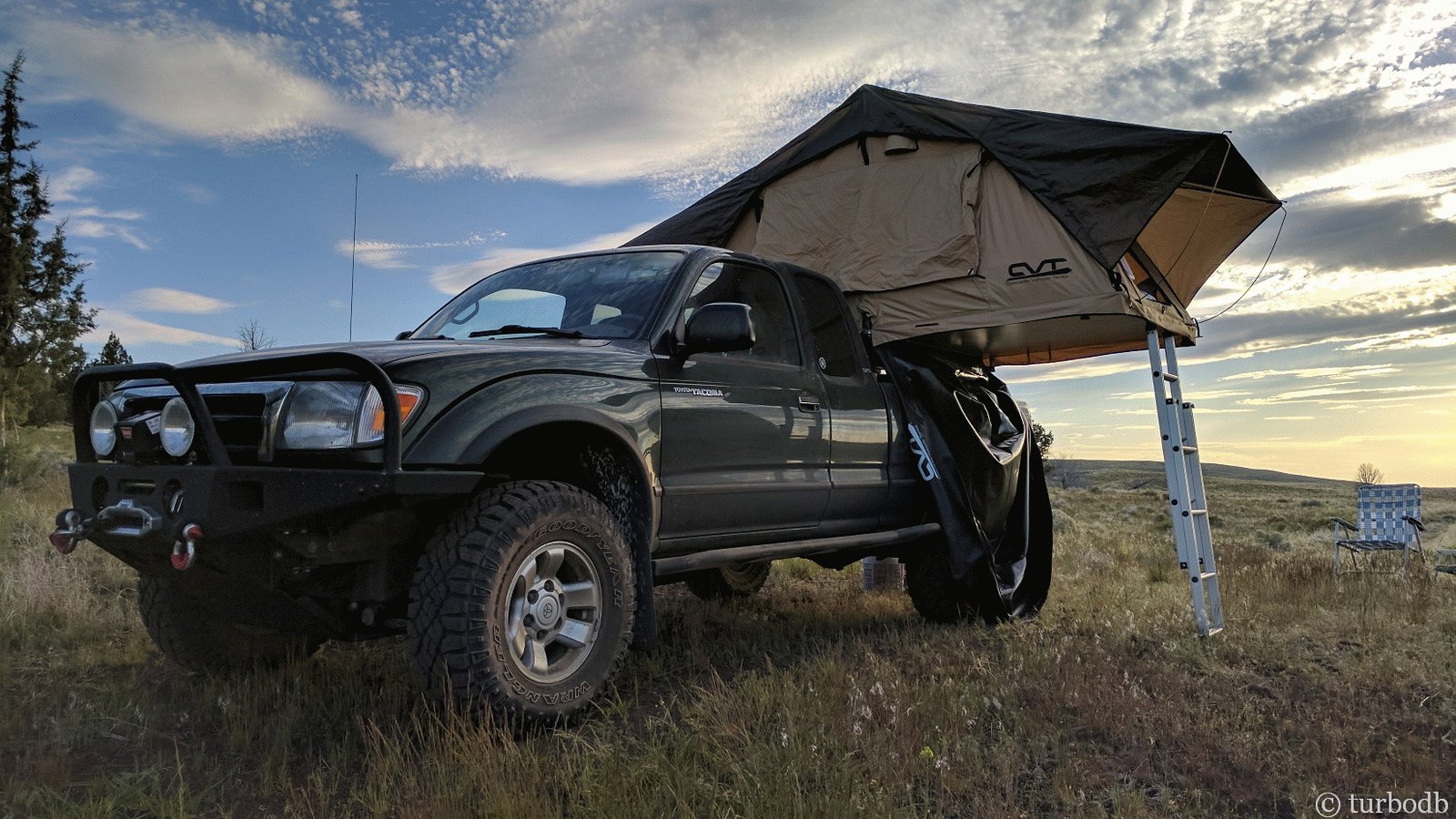
We were all setup when my Dad and Uncle pulled up and I guided them to a spot alongside the Tacoma.
“Do you always drive that fast?” said my Uncle.
“Umm, you consider that fast?” I thought (but instead I just smiled).
From there, we prepped and consumed a delicious dinner of skirt steak, mashed potatoes, and asparagus while we enjoyed an amazing show of "cloud fireworks" in the sky - both before and as the sun set.
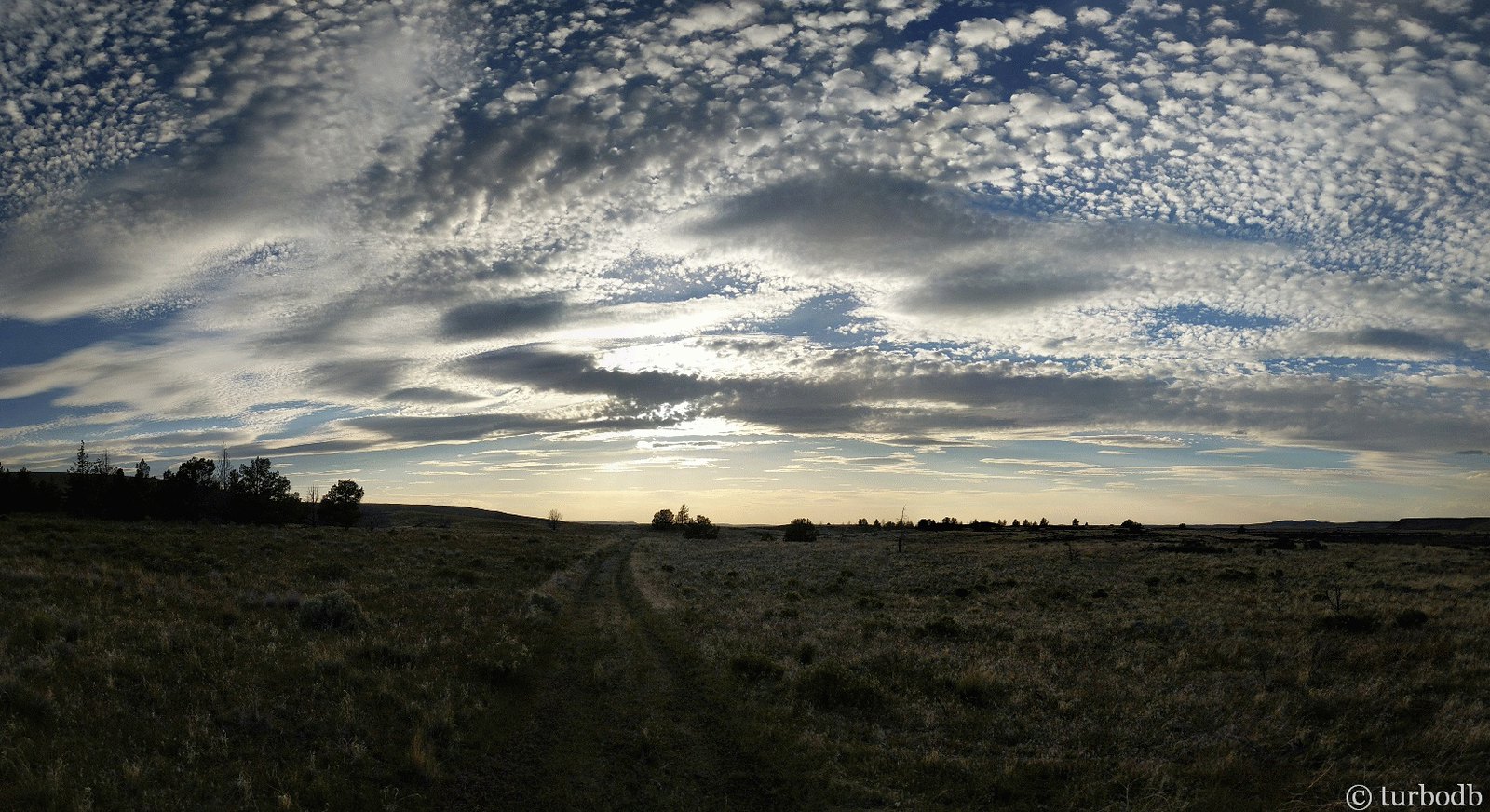
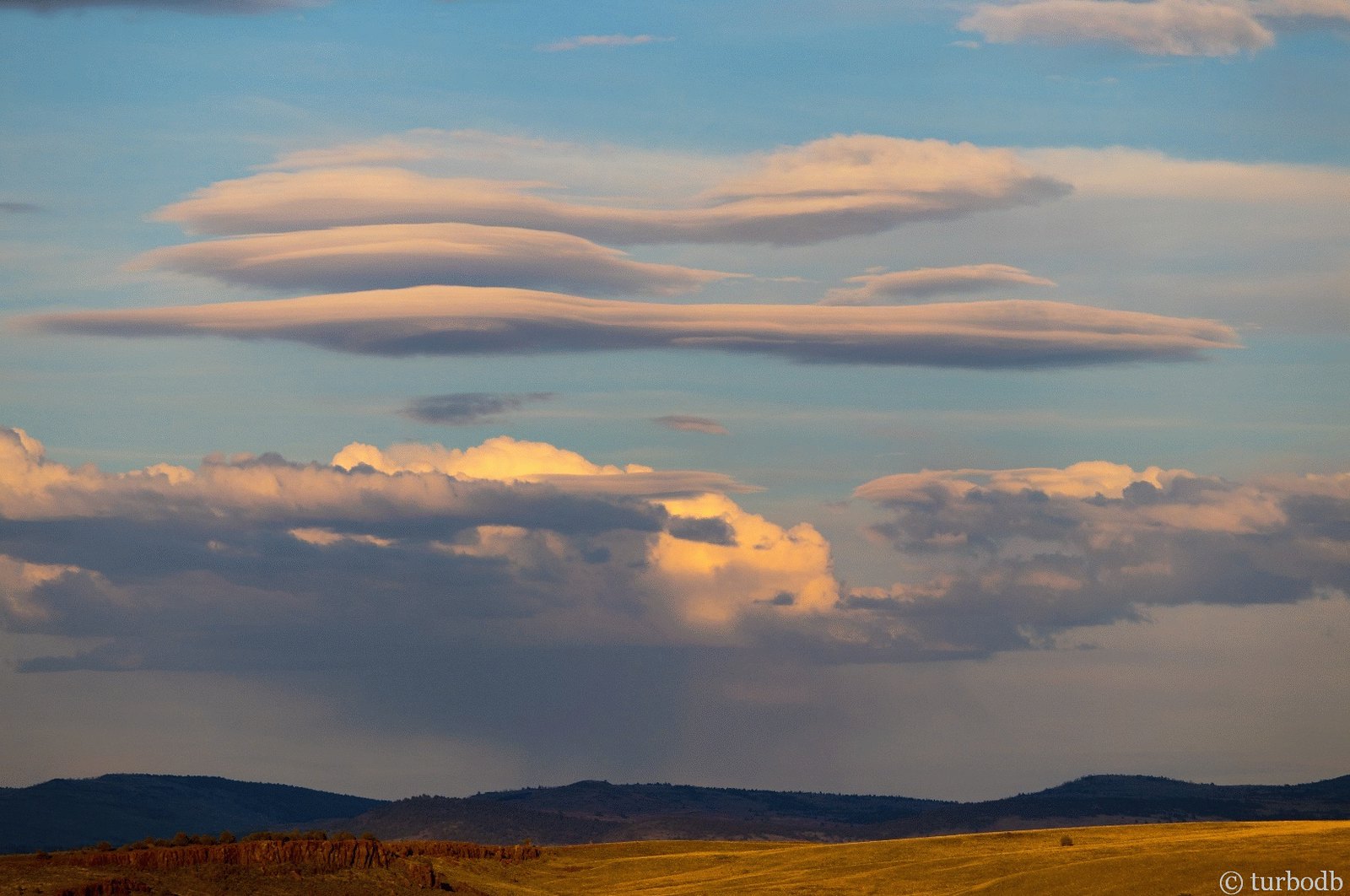
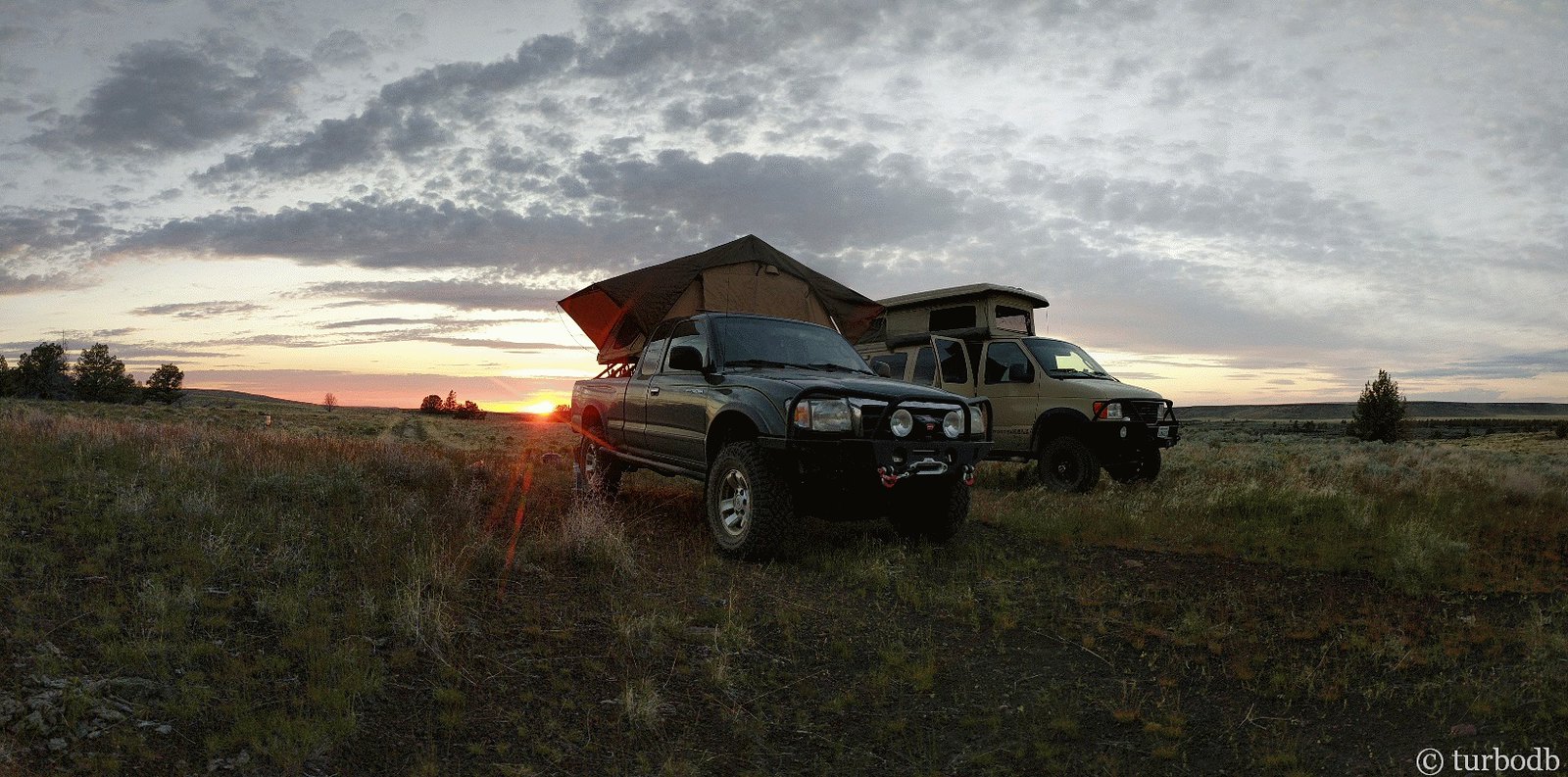
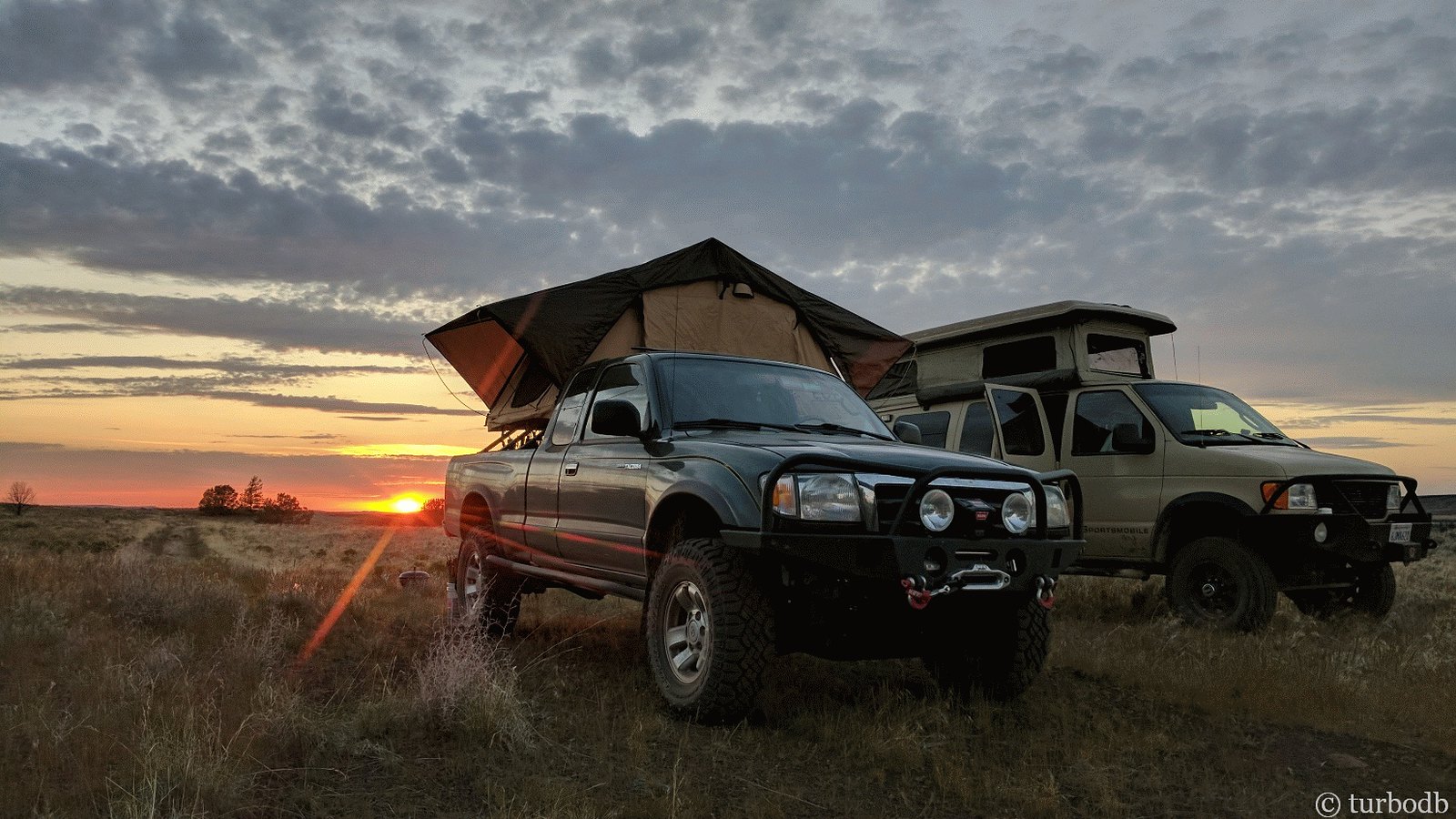
It was during this time that we started discussing the next day. Of course, there would be no huge rush to get up - that was abundantly clear, but it was also becoming clear that it was getting time for us to part ways - so we could start heading back to the Puget Sound, and so the old fogies could try to remember their way back to California and the Bay Area.
In the end, we decided to make no decisions and delay them till morning. We headed out of the Sportsmobile and used the spotting scope to peer at the moon and more amazingly Jupiter - where we could see the red spot and four of its moons. Wow.
And with that, we climbed into our sleeping bags and fell asleep.
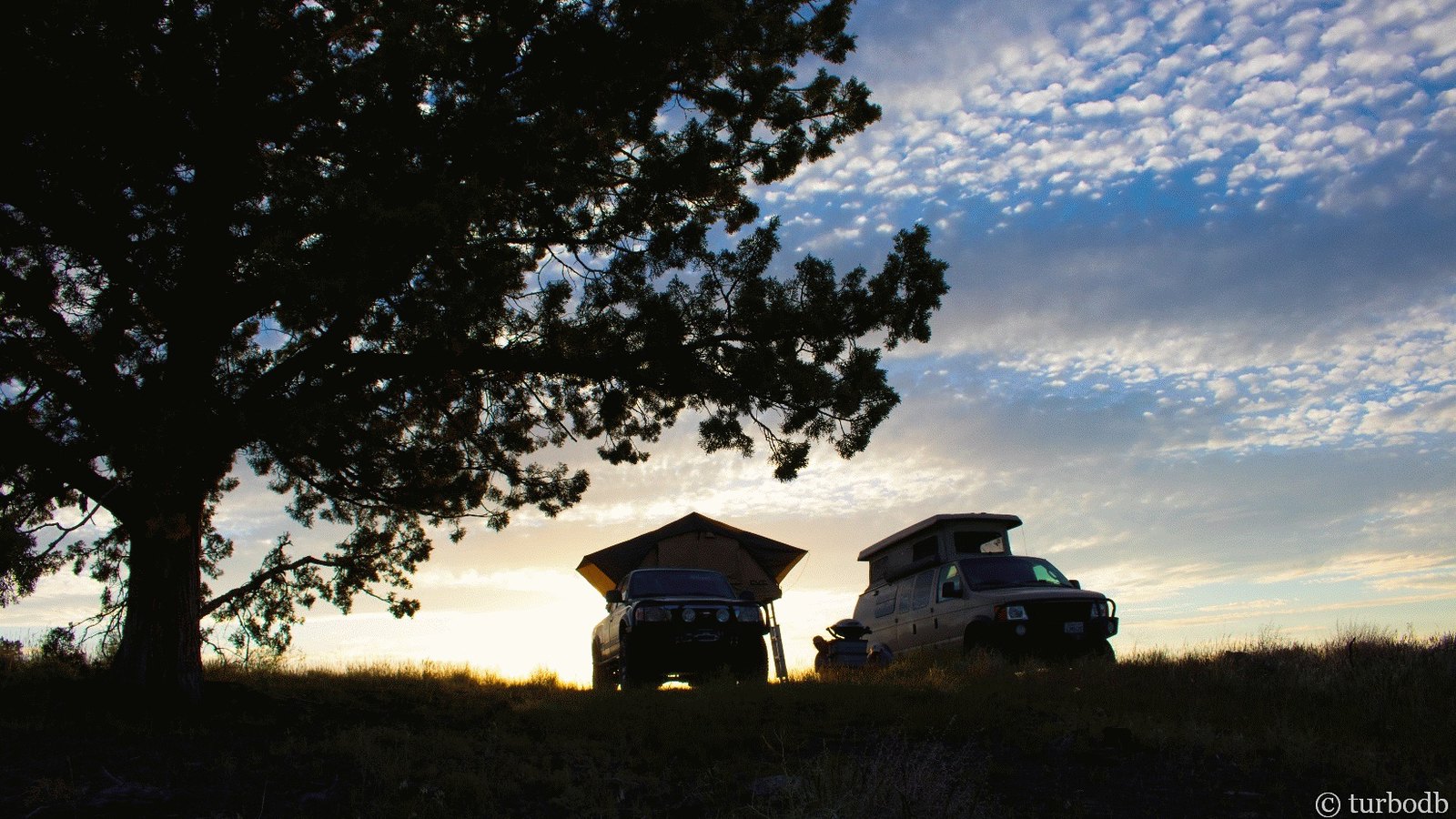
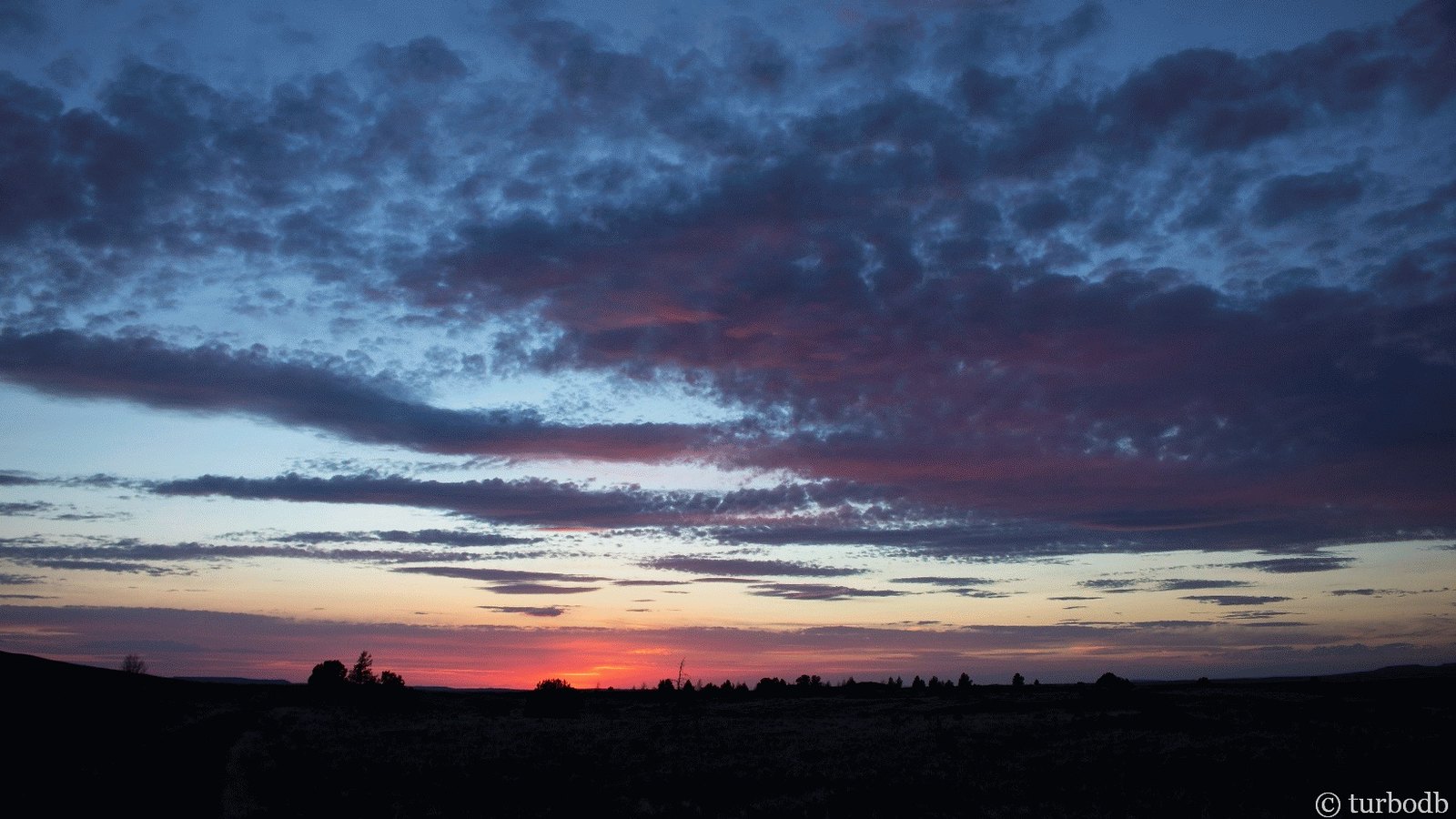
Day 4: Thursday, May 11.
We awoke early (er than normal) the next morning. Or at least, I did. On our way to our resting spot for the night, we'd passed a couple more volcanic areas, and I was anxious to do some exploring.
About a quarter mile from camp, @mrs.turbodb realized I wasn't just going to the bathroom and coming back to bed, and so she jumped up and hustled her way down the road.
I started running. And looking back over my shoulder. And running.
She wasn't amused.
I stopped.
We spent a couple hours exploring the volcanic activity near the North Crater of Diamond Craters. As with the other locations, these were interesting to say the least, and given their remote location were significantly less disturbed than those we'd seen the day before.
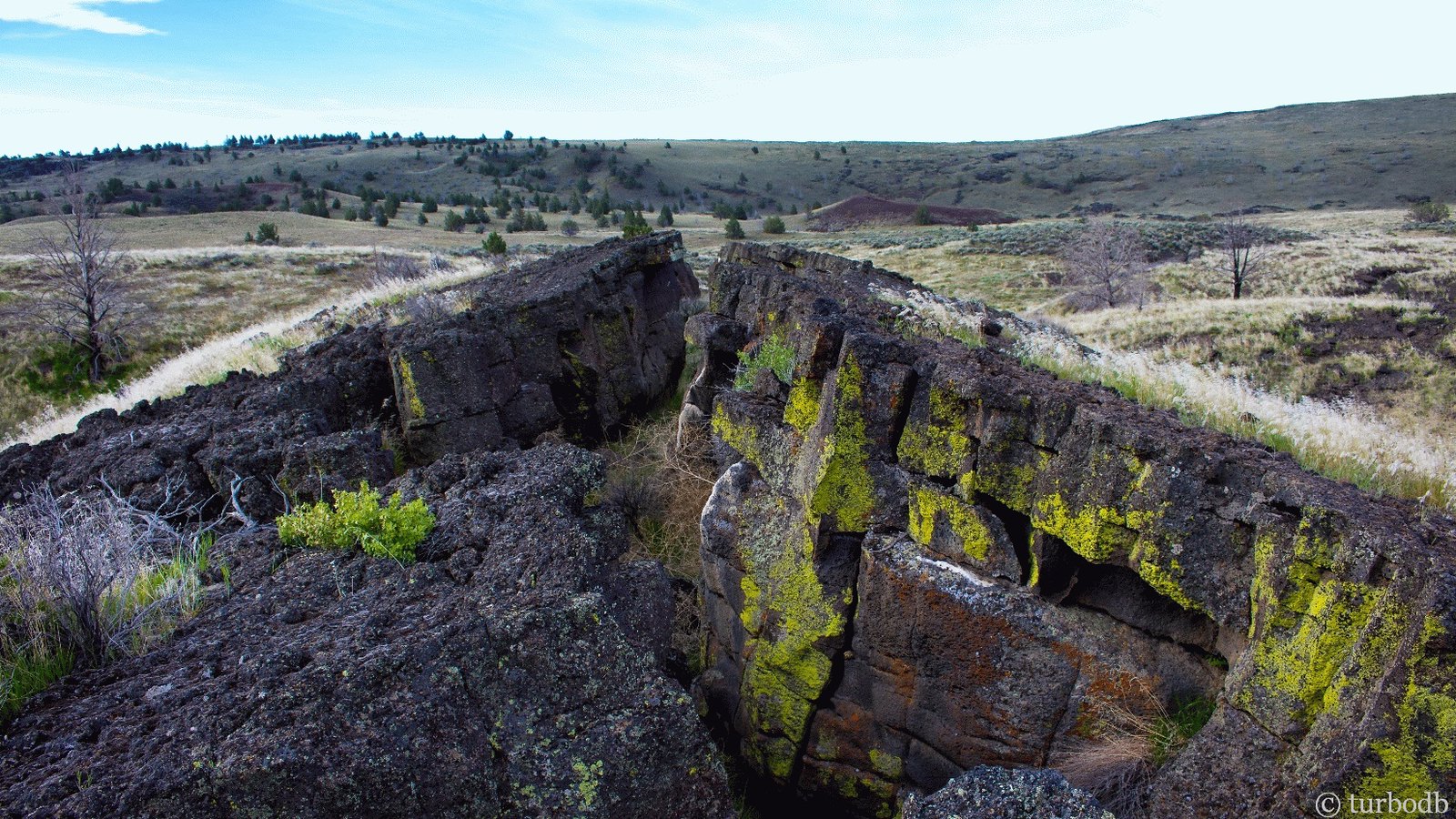
Some of the domes were especially amazing. You could see where lava had literally pushed up through the earth and cracked on the top, like a nice loaf of bread baking in the oven.
Except, not as tasty.
And, probably more deadly.

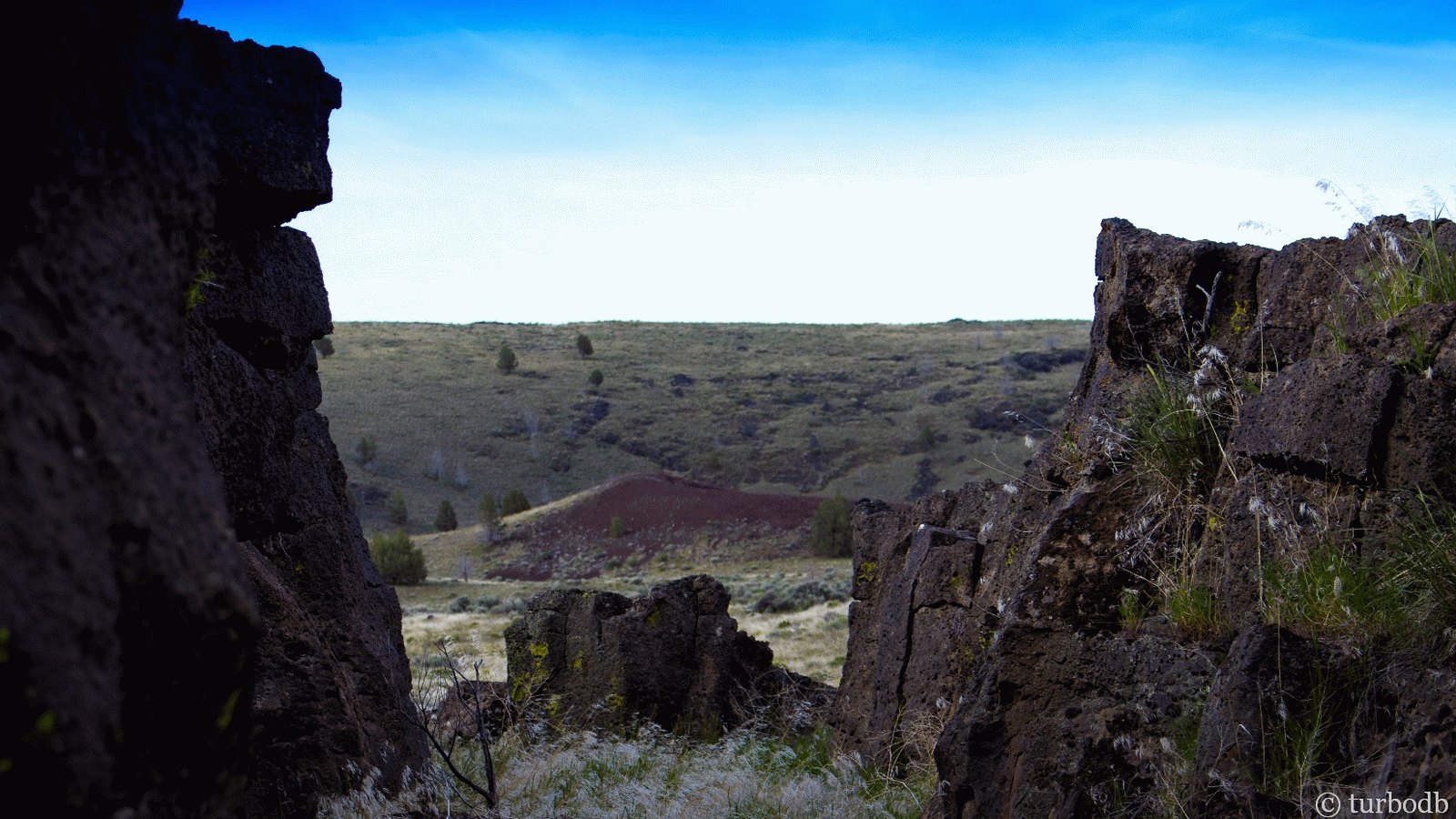
After a couple hours, we headed back and ate breakfast - steak, eggs, toast and strawberries. We were living the tough life. Looking back, I still don't understand how we weren't all just itching to get back to civilization.
Around 9:30 we started packing up camp. Over breakfast we'd decided it was actually time to part ways. We'd go north and east, and we reminded Pops and my Uncle that California was south and west.
It was hugs and "great time, let's do it again" all around, and then into the vehicles to make the trek back the way we'd come.
Within minutes of starting back we lost sight of each other. Cruising at no more than 10 mph, we knew - they were cruising at "birder speed."
As we passed through the fields, we took one last look at Steens Mountain. It'd become a fixture for us over the last few days, always to our south west. @mrs.turbodb had identified it for us at least 20 times over the radio, and we probably only had her spell it half that many.
We'd be sad to see it go, but we knew that adventure awaited on the OBDR. We just didn't know the extent of the adventure…
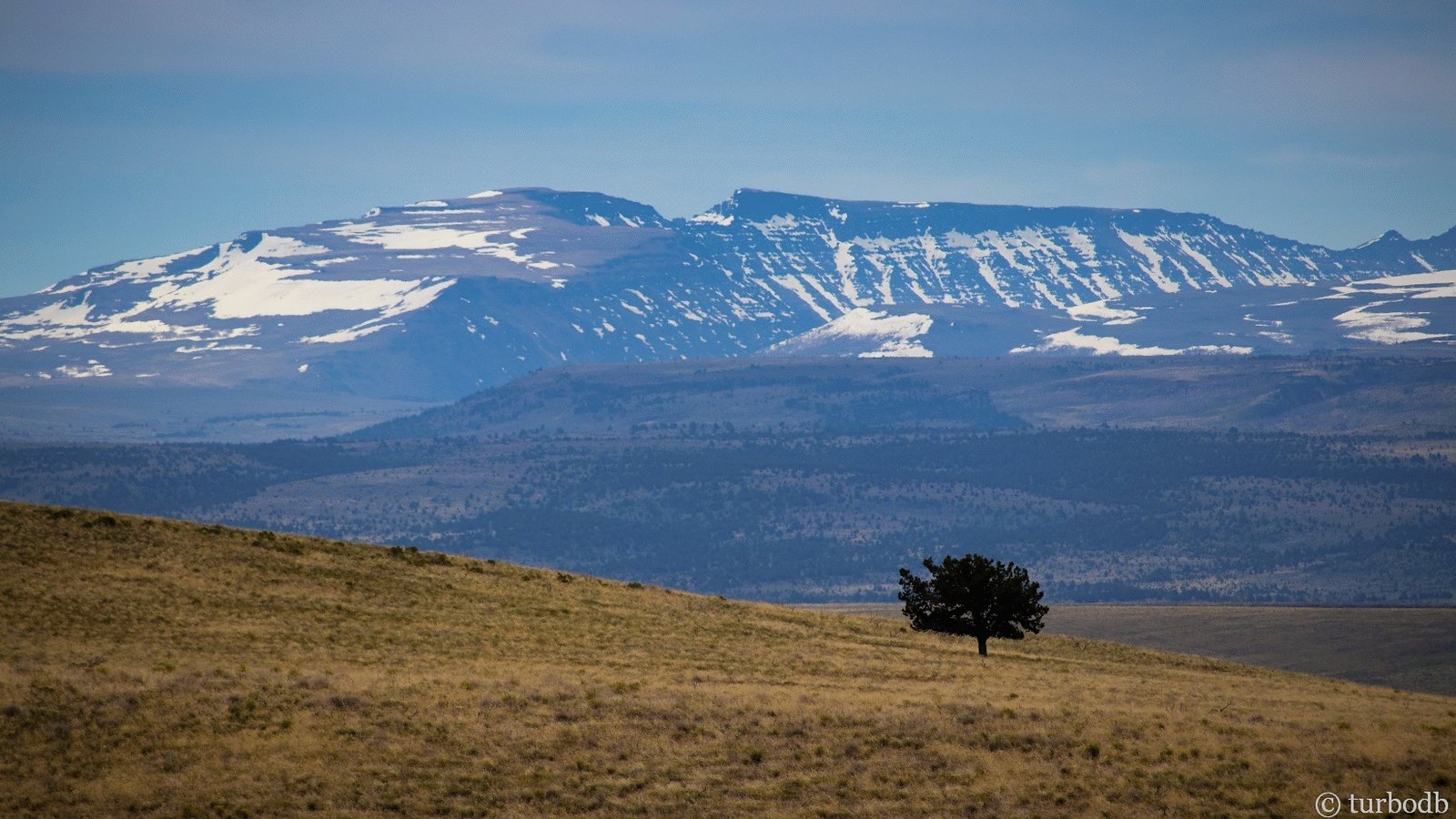
... stay tuned for chapter 3 ...